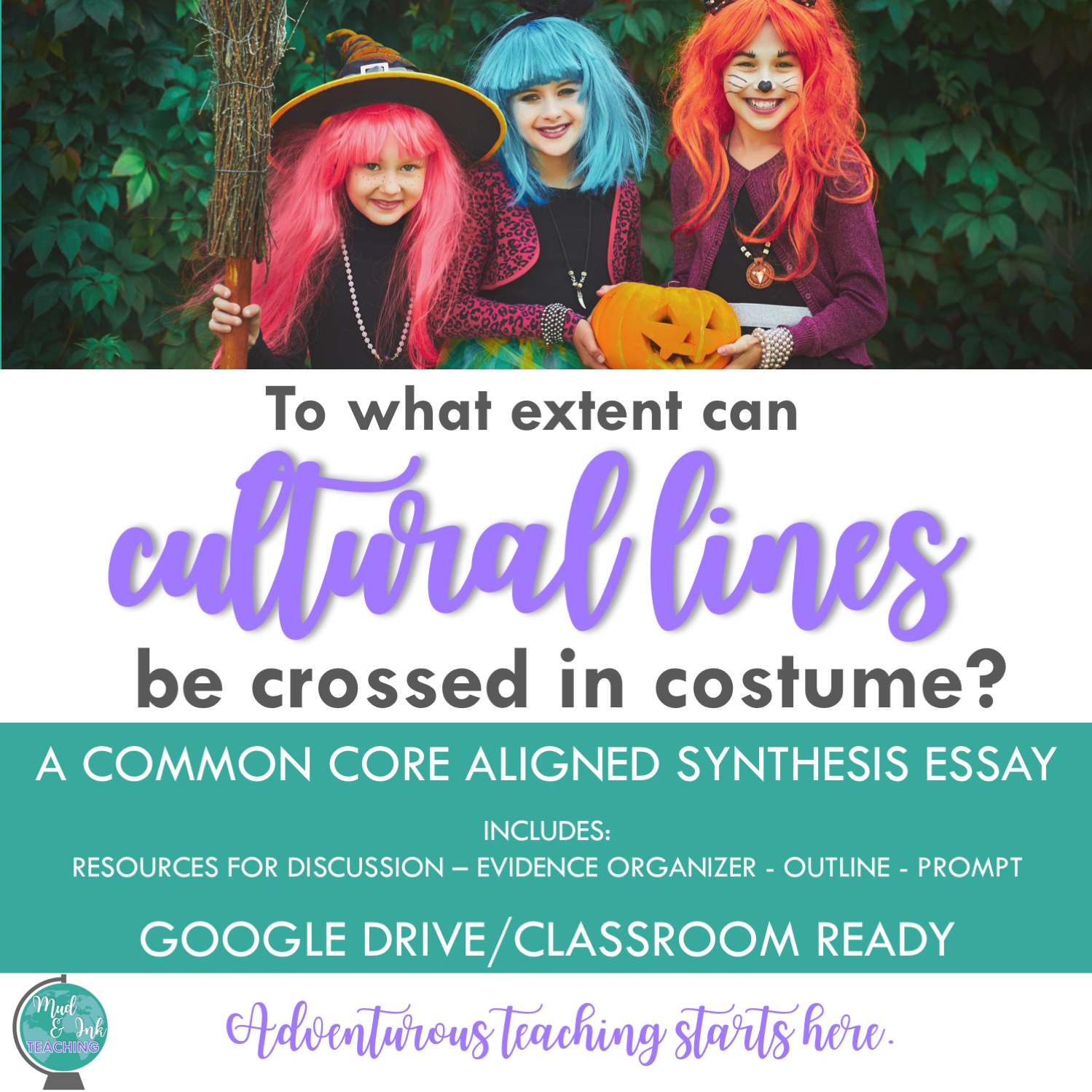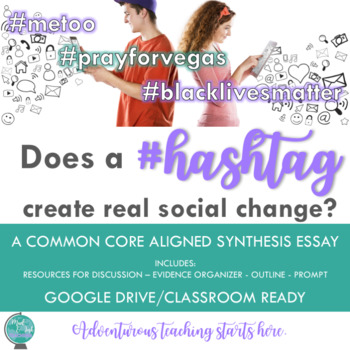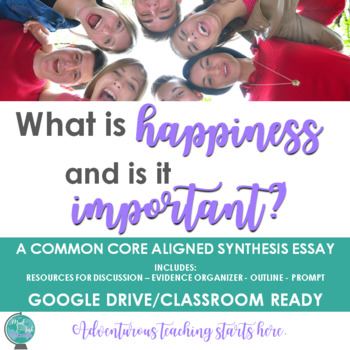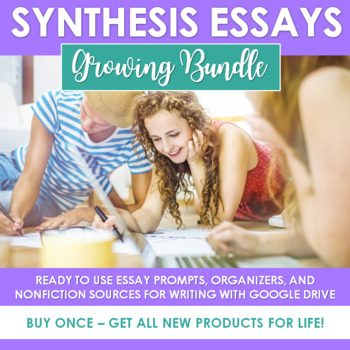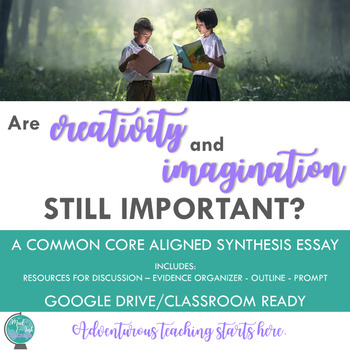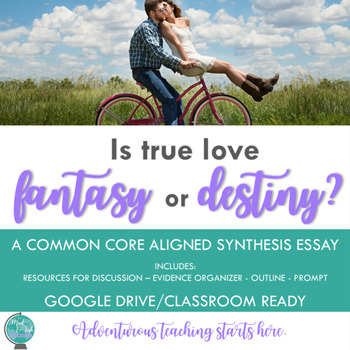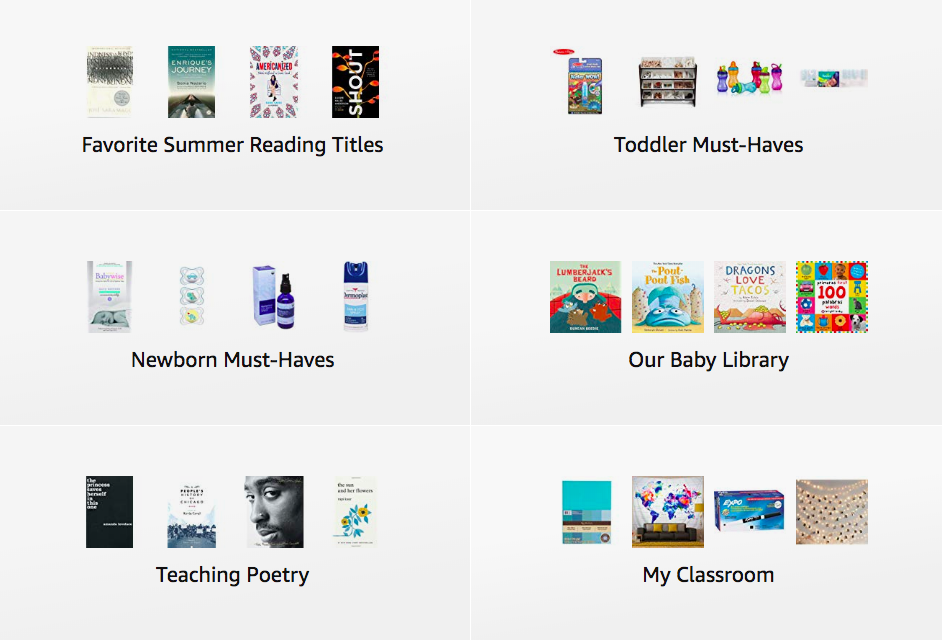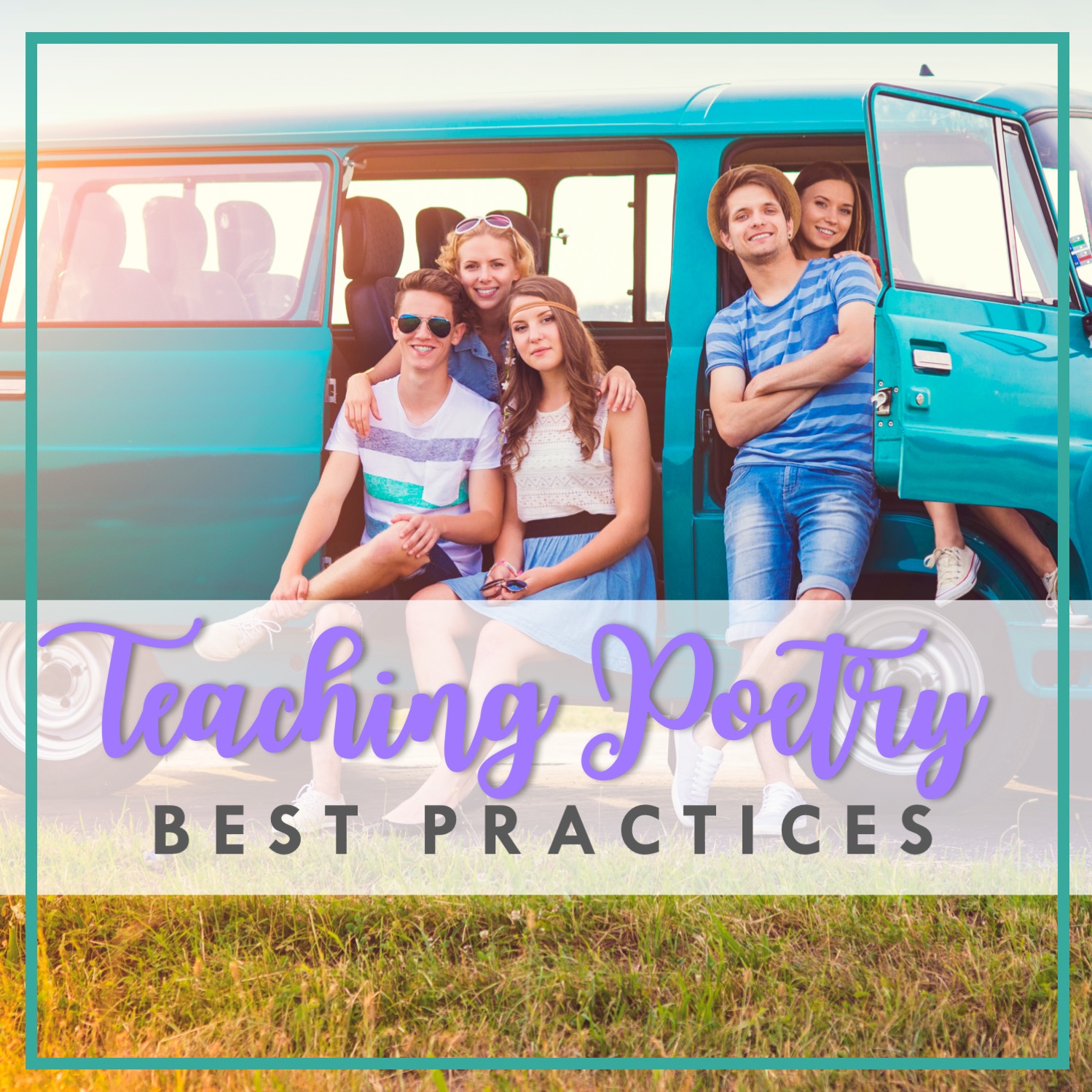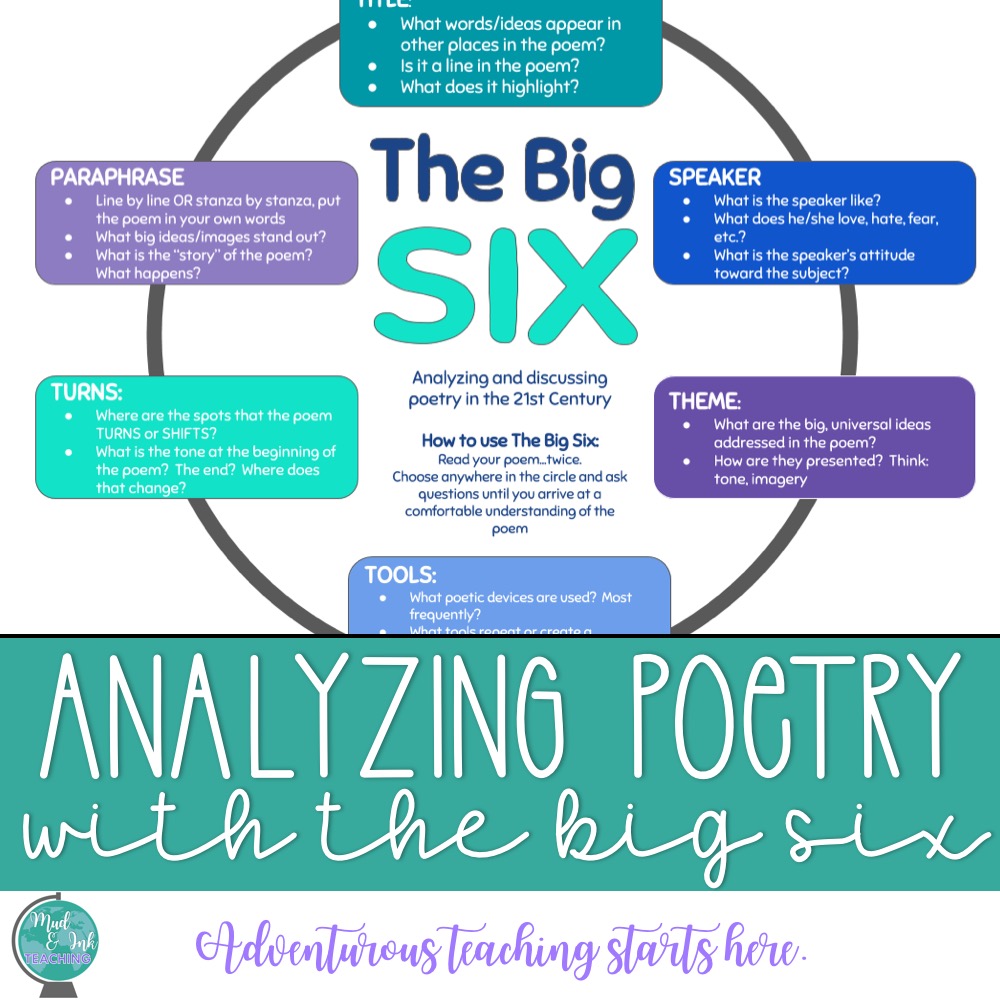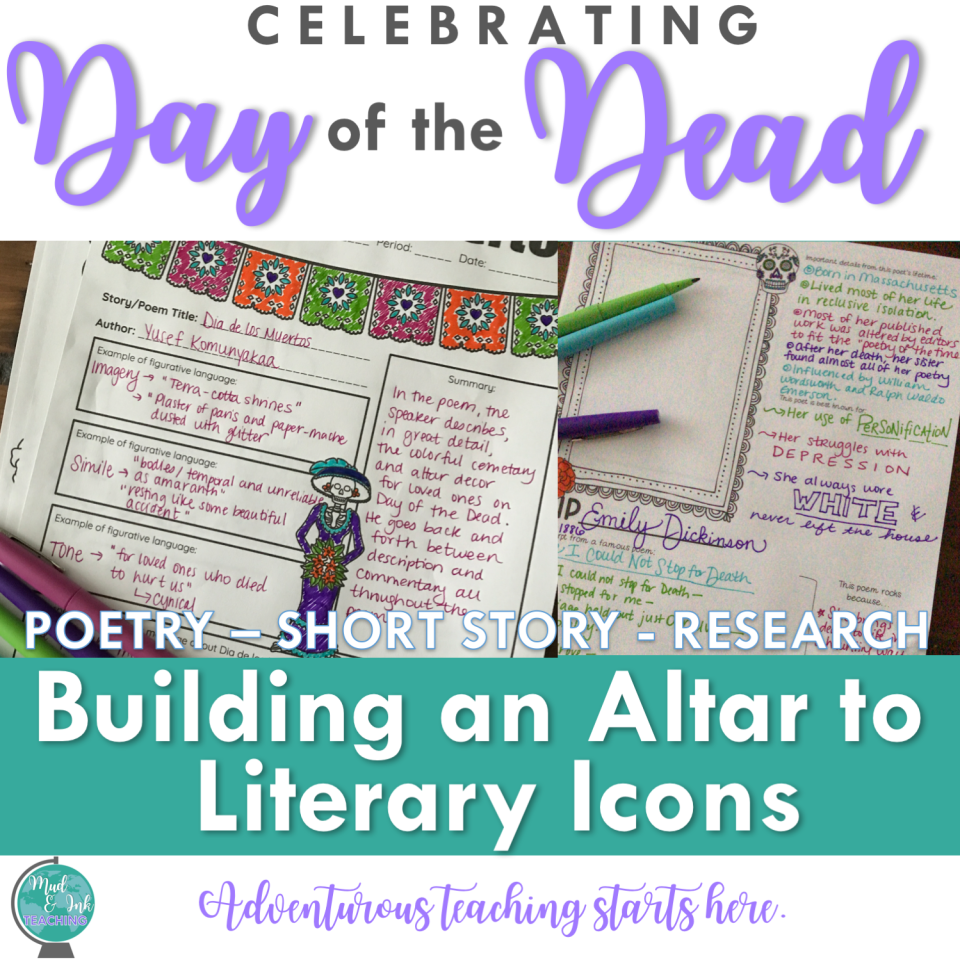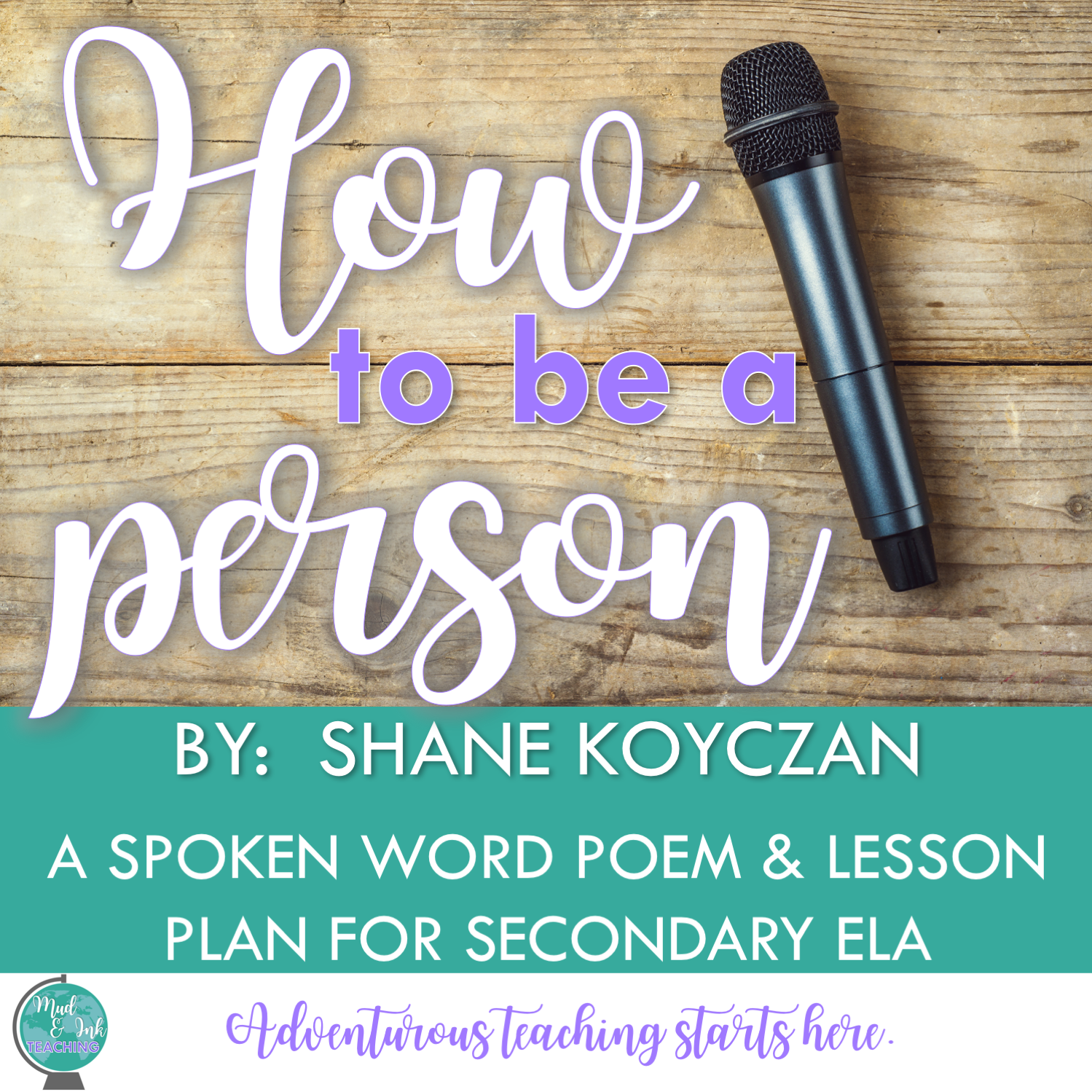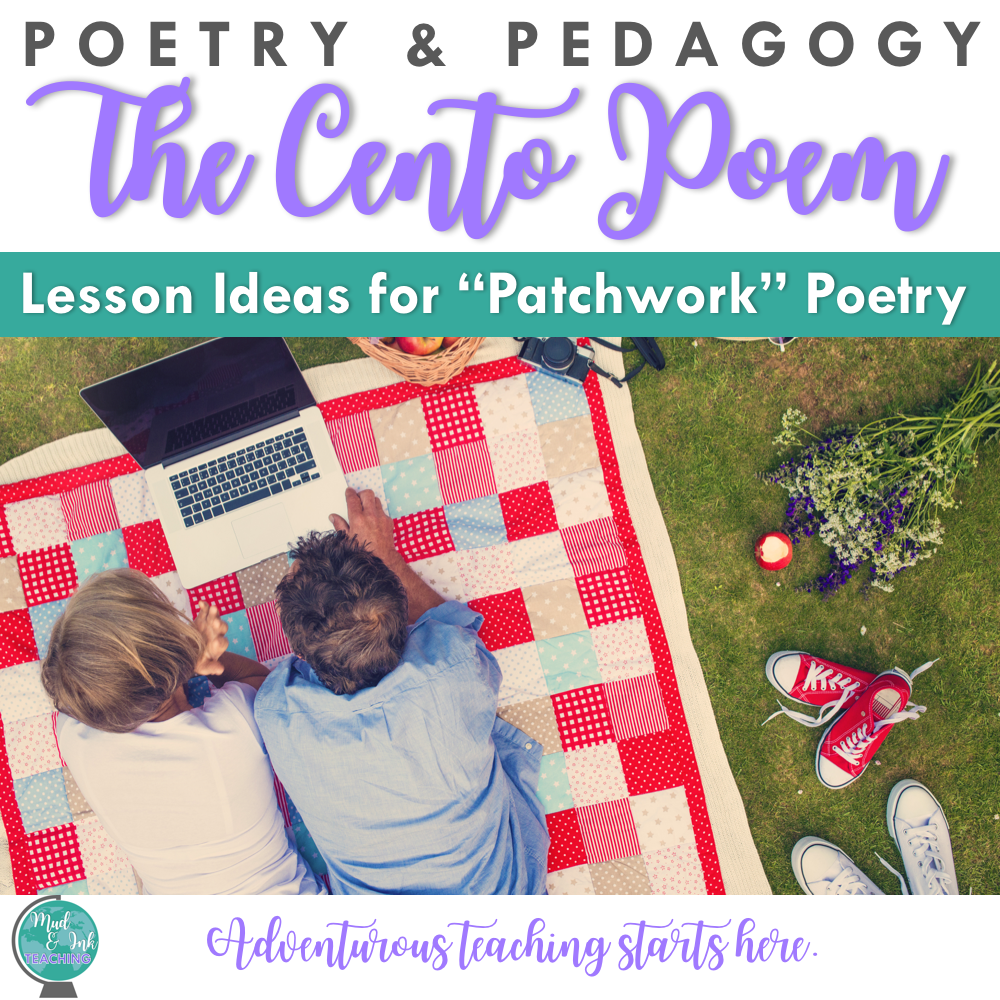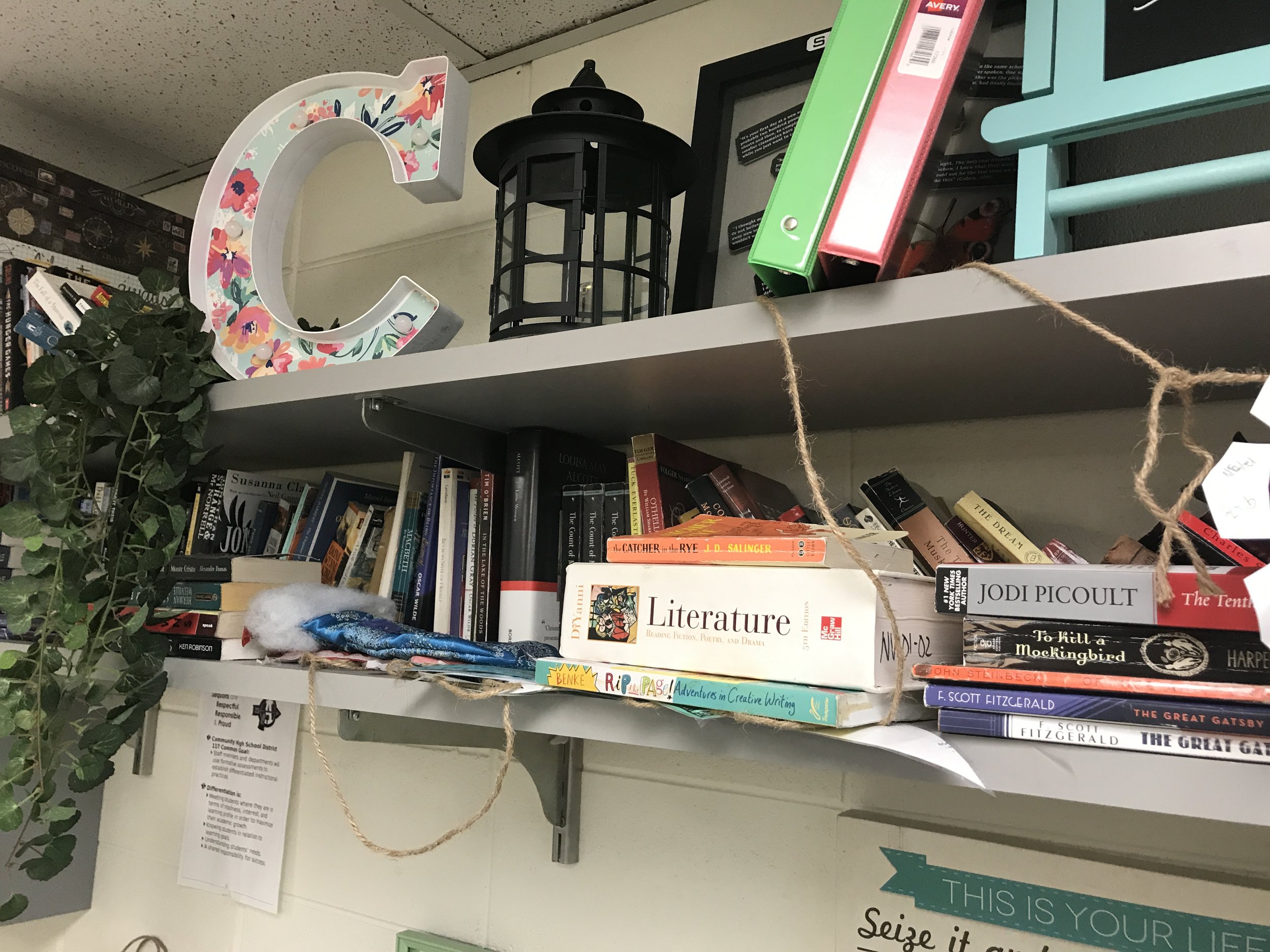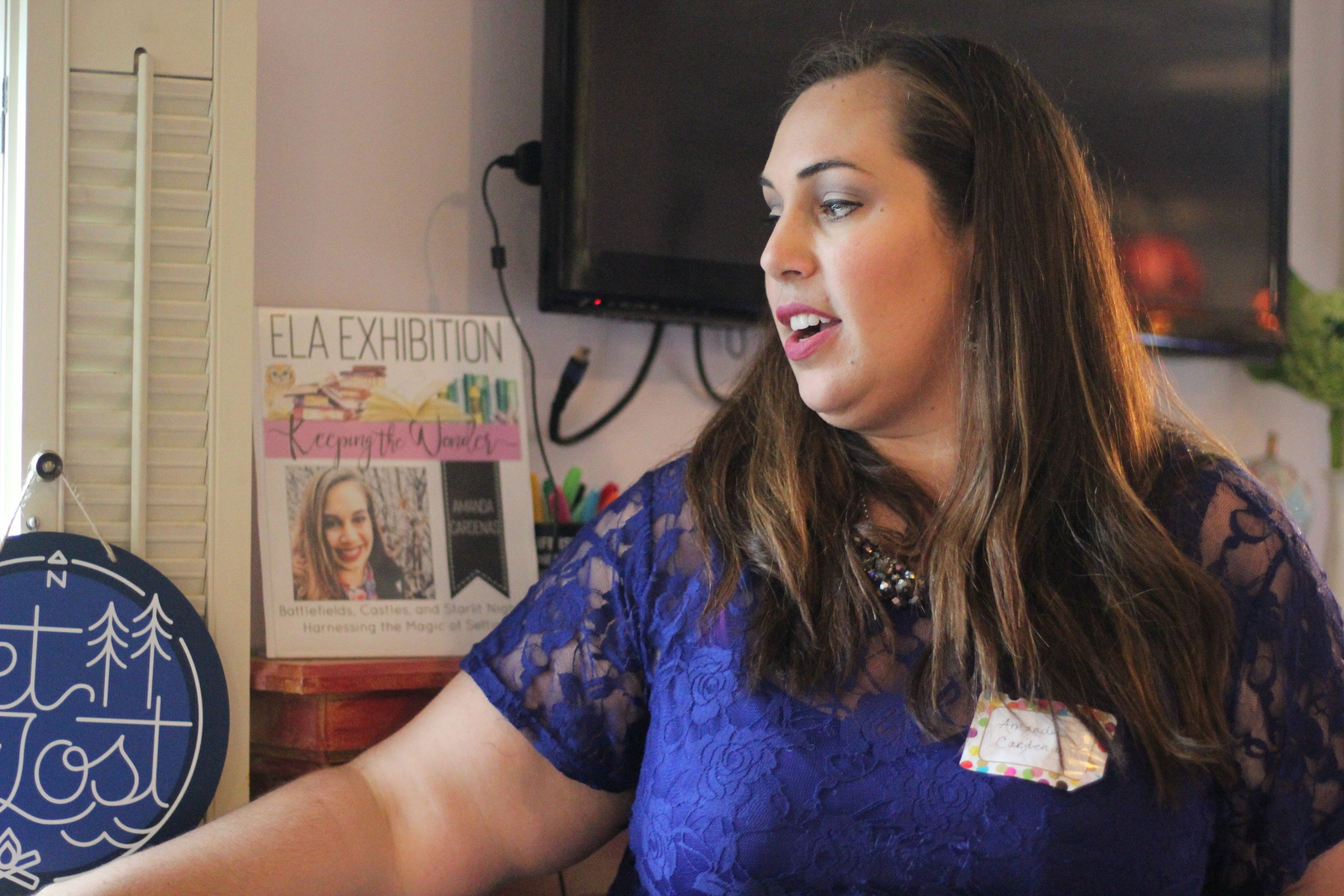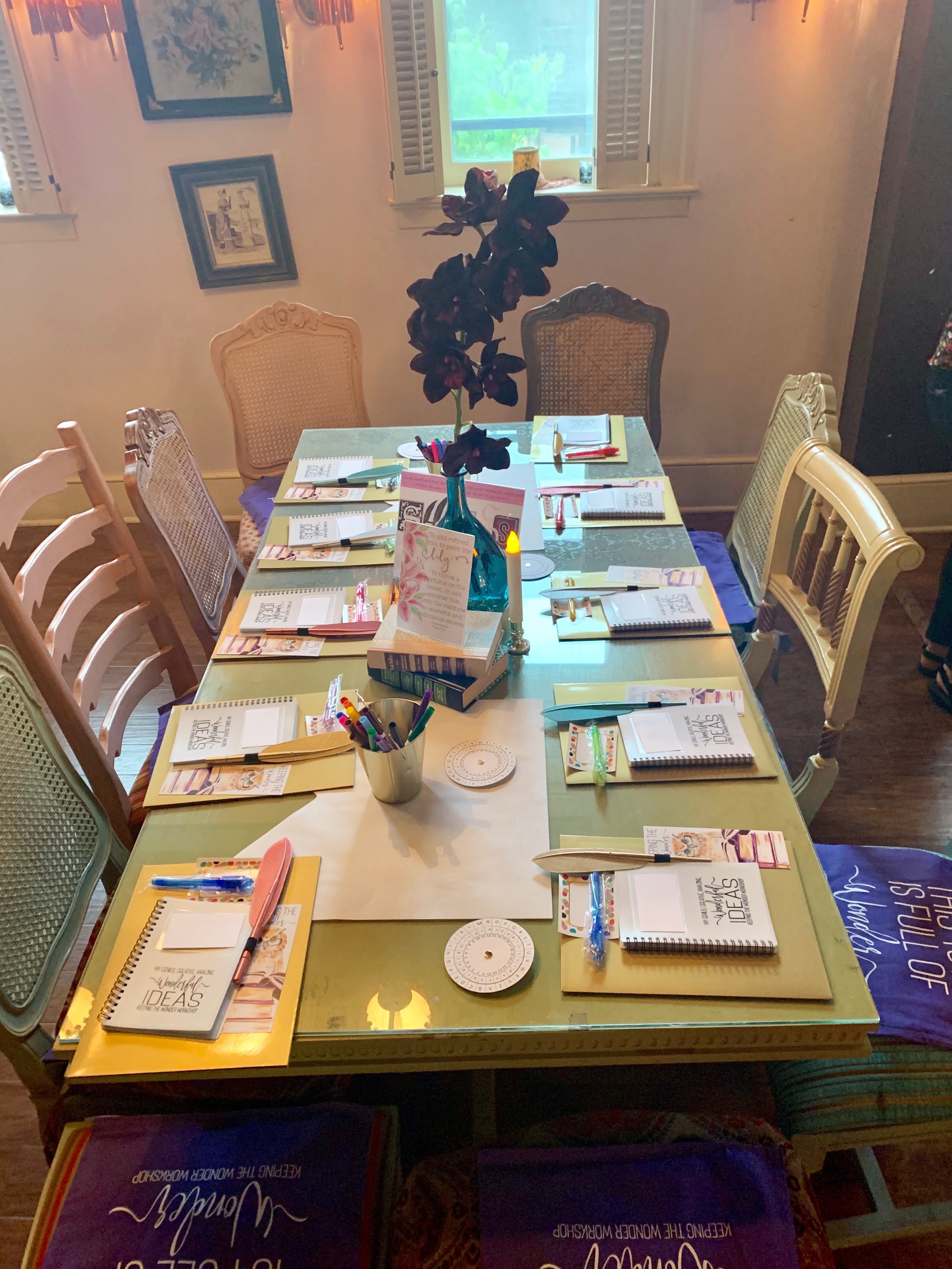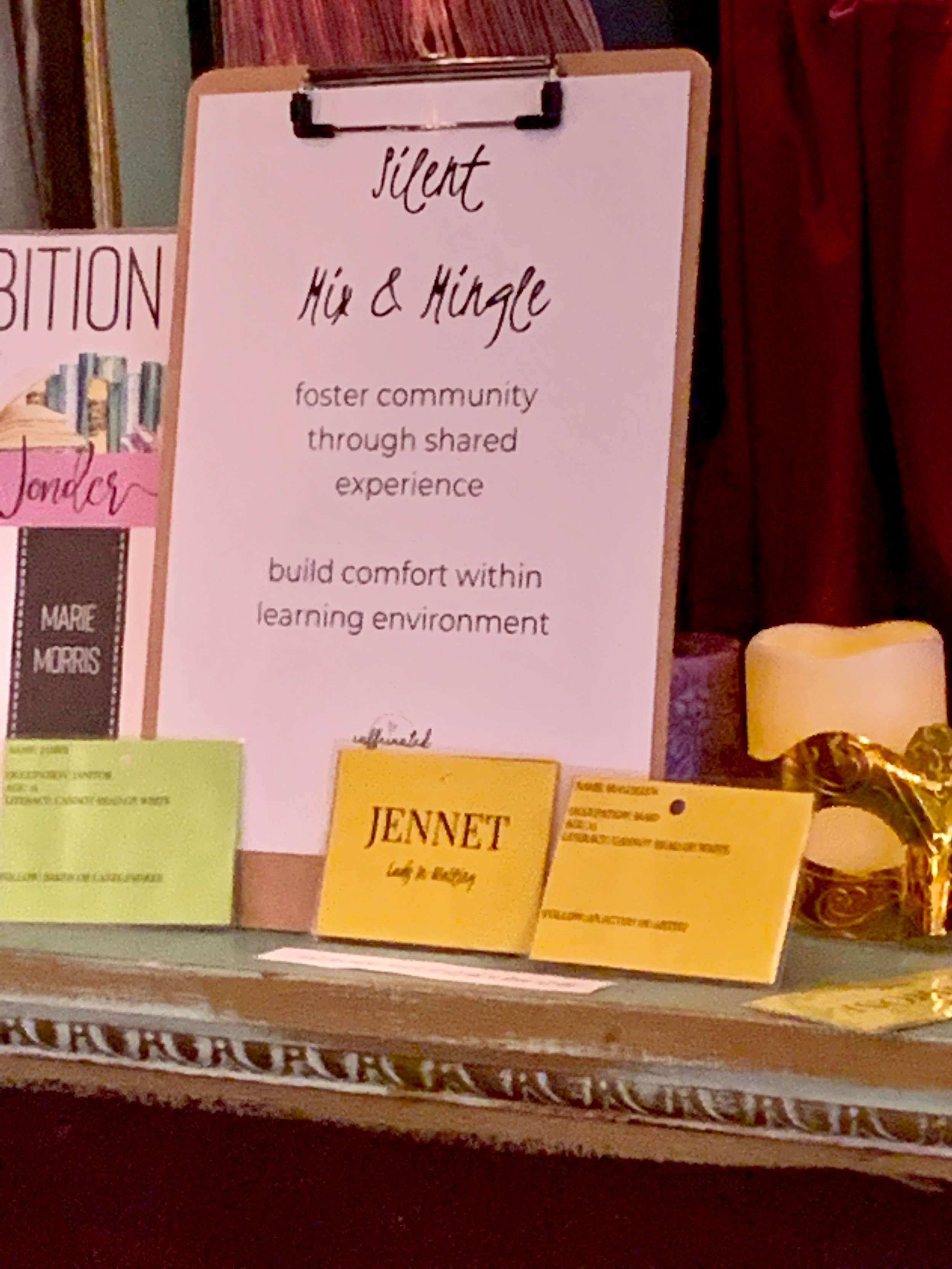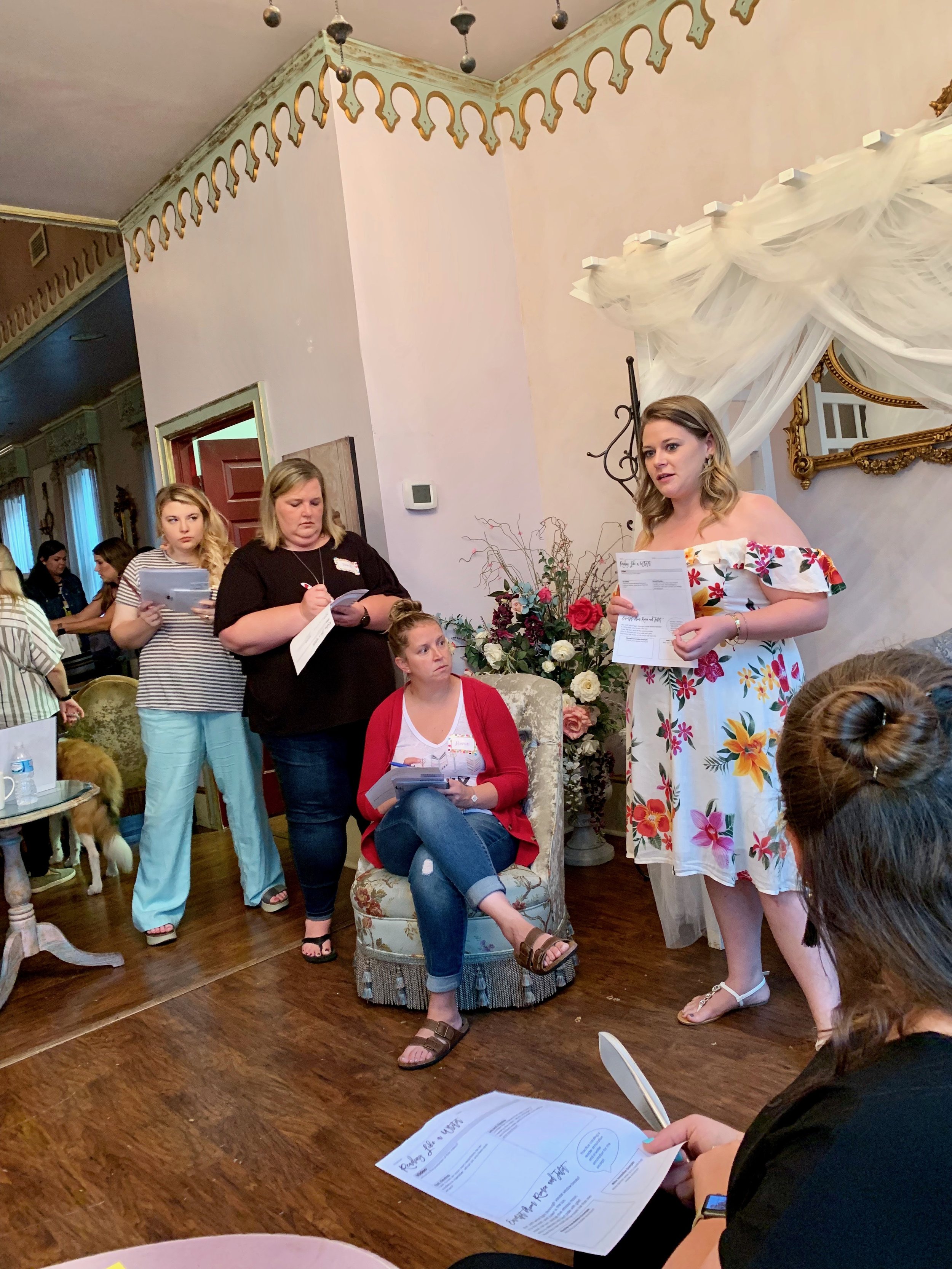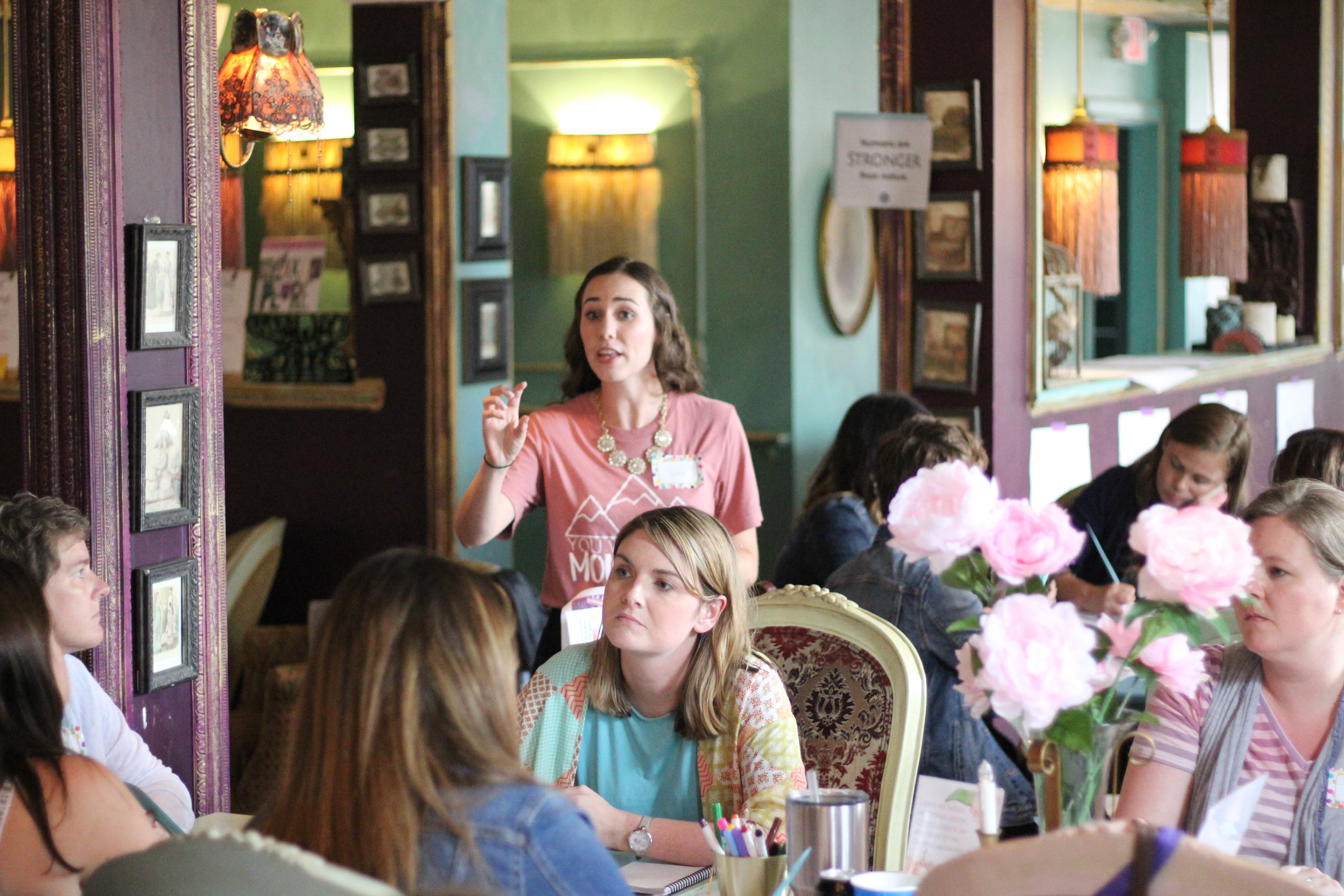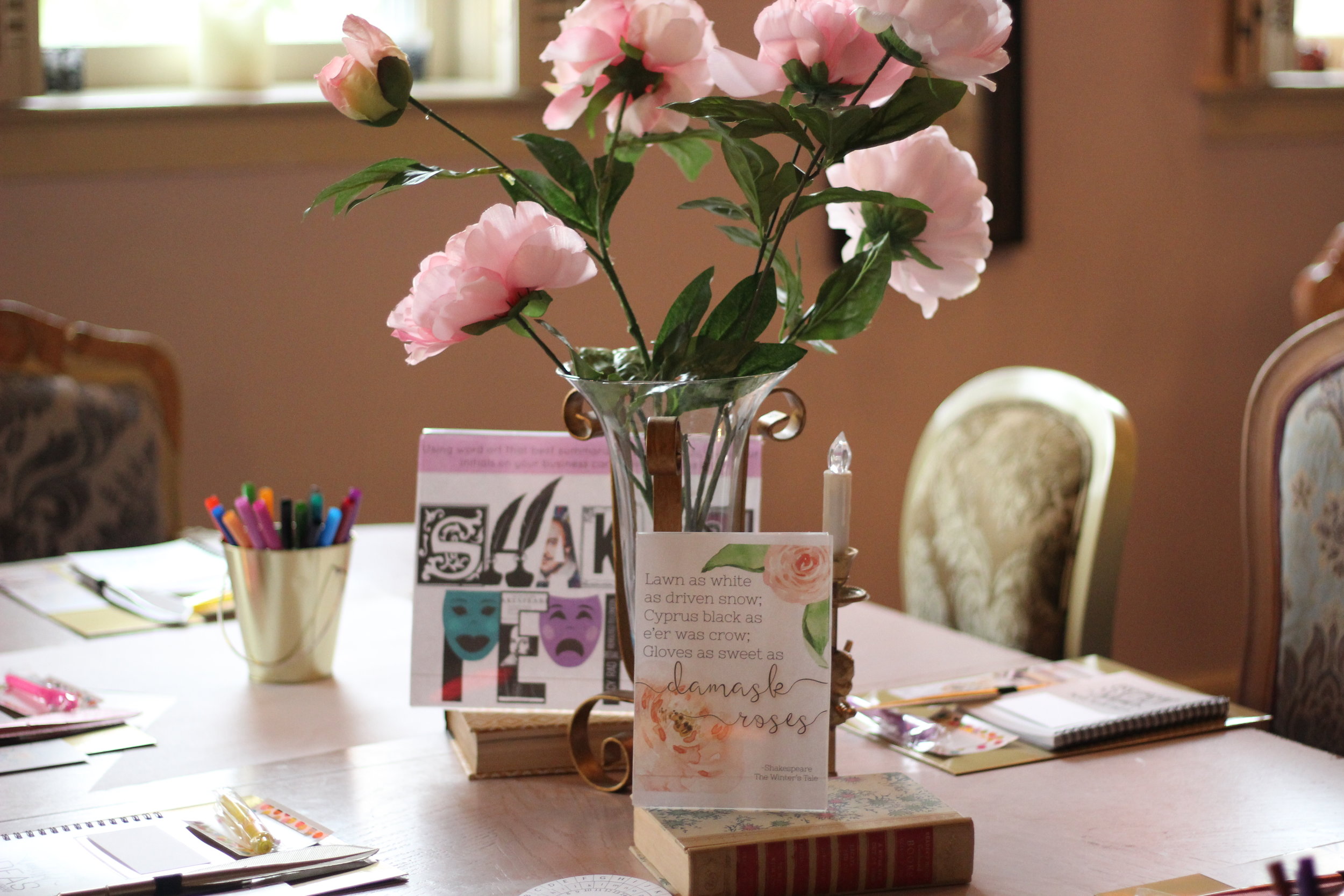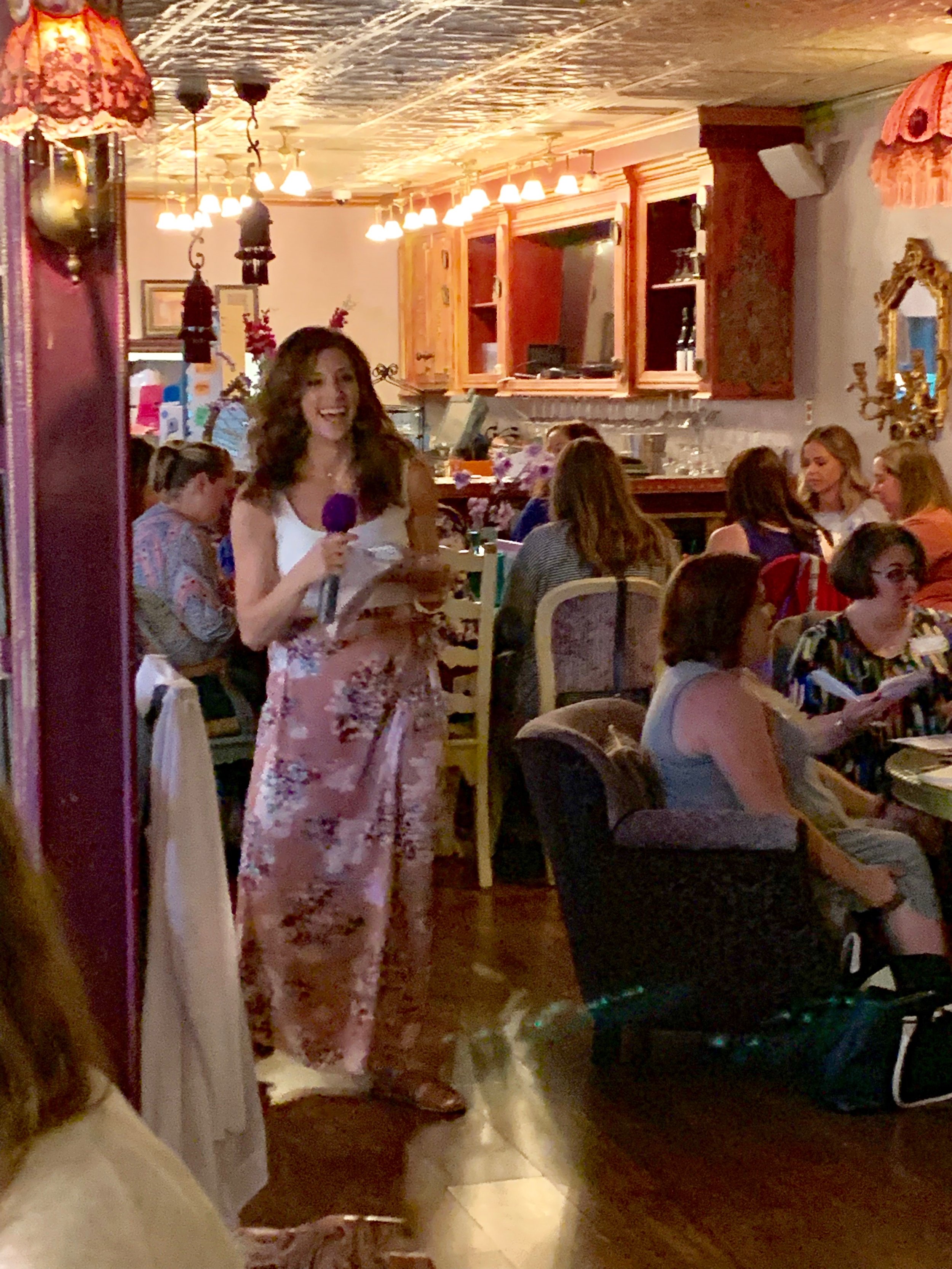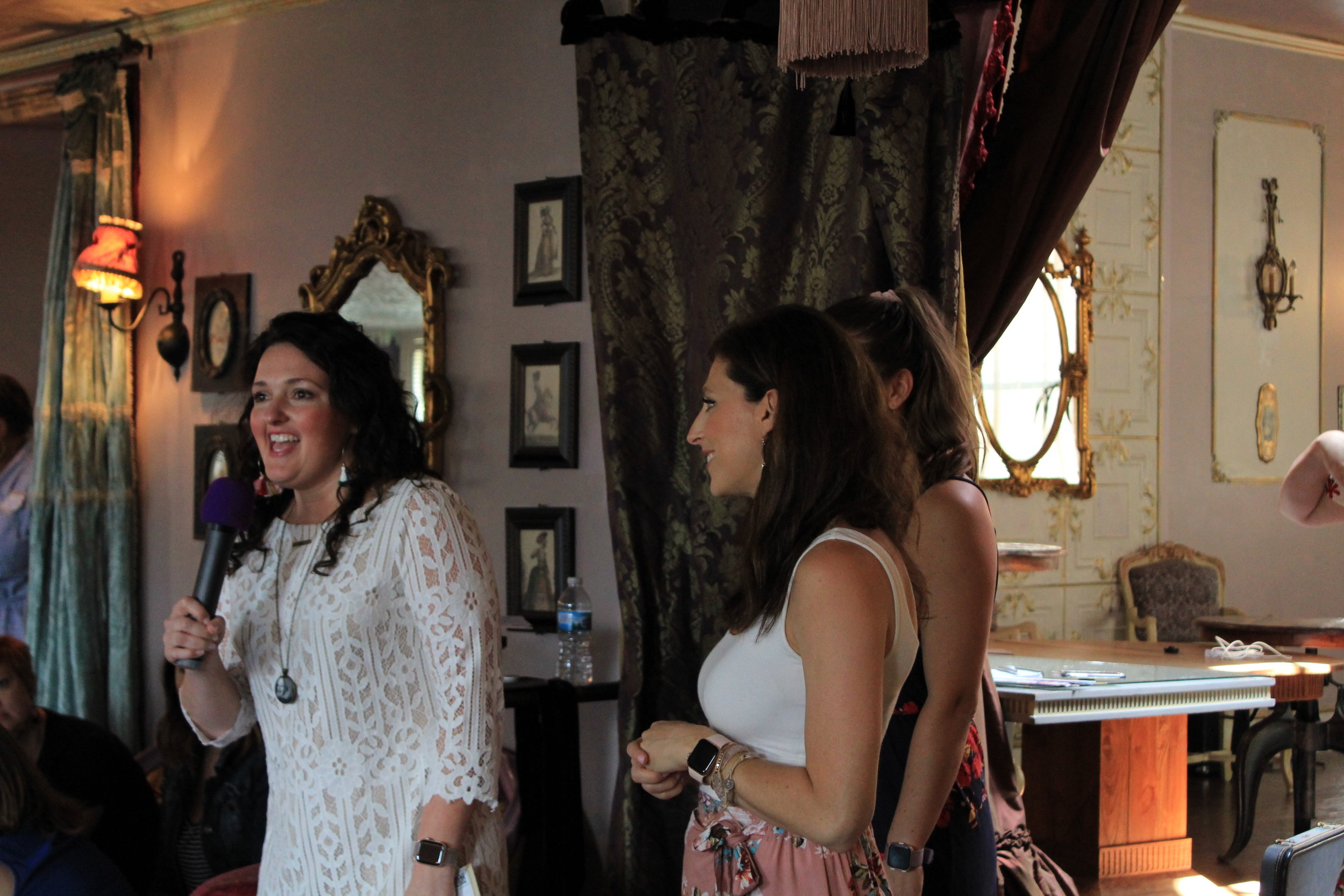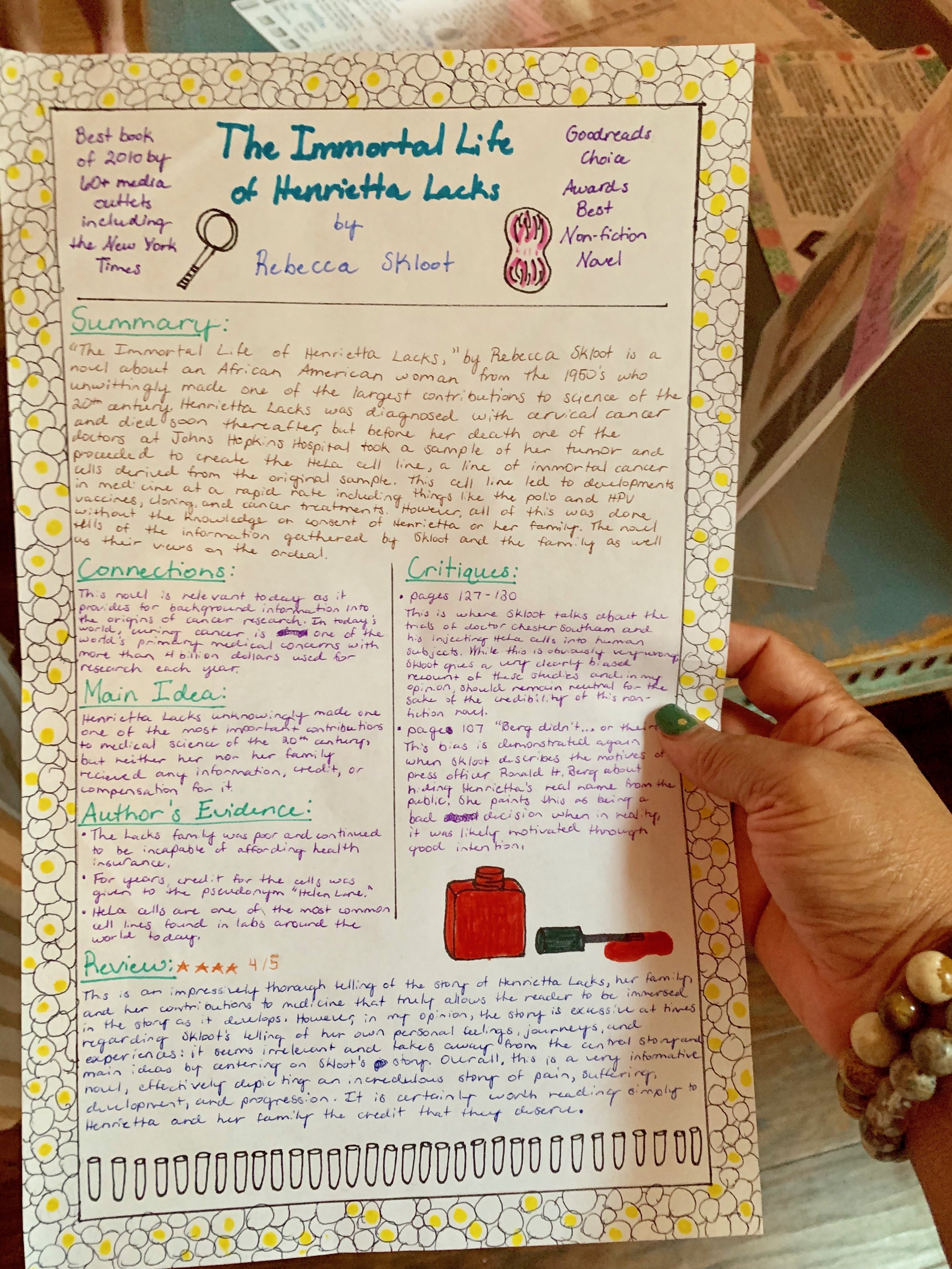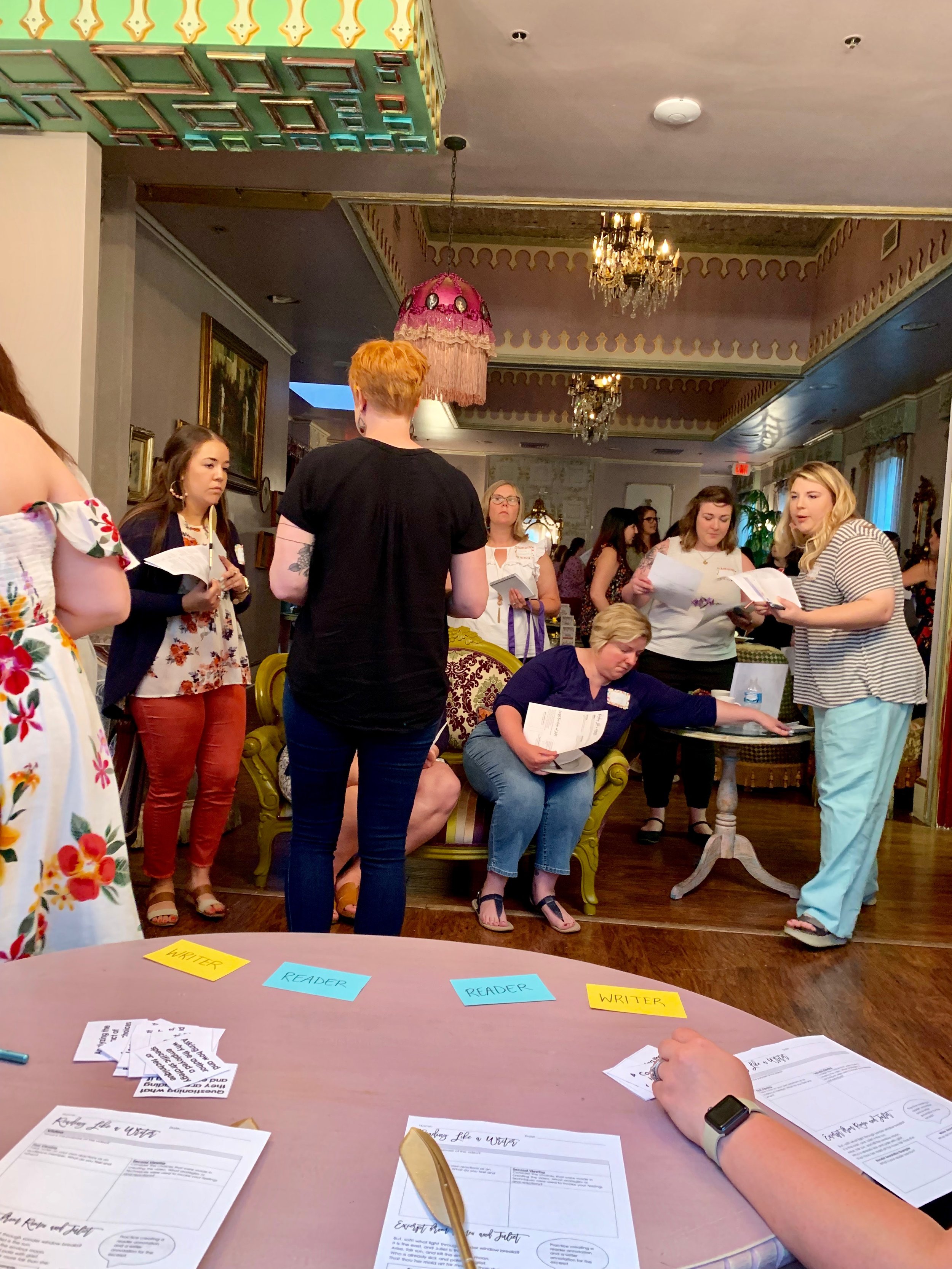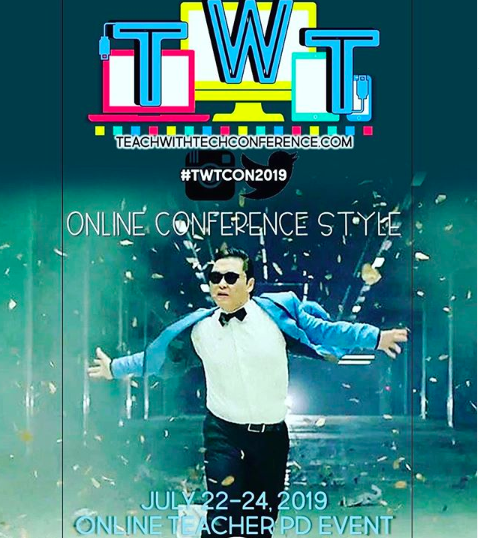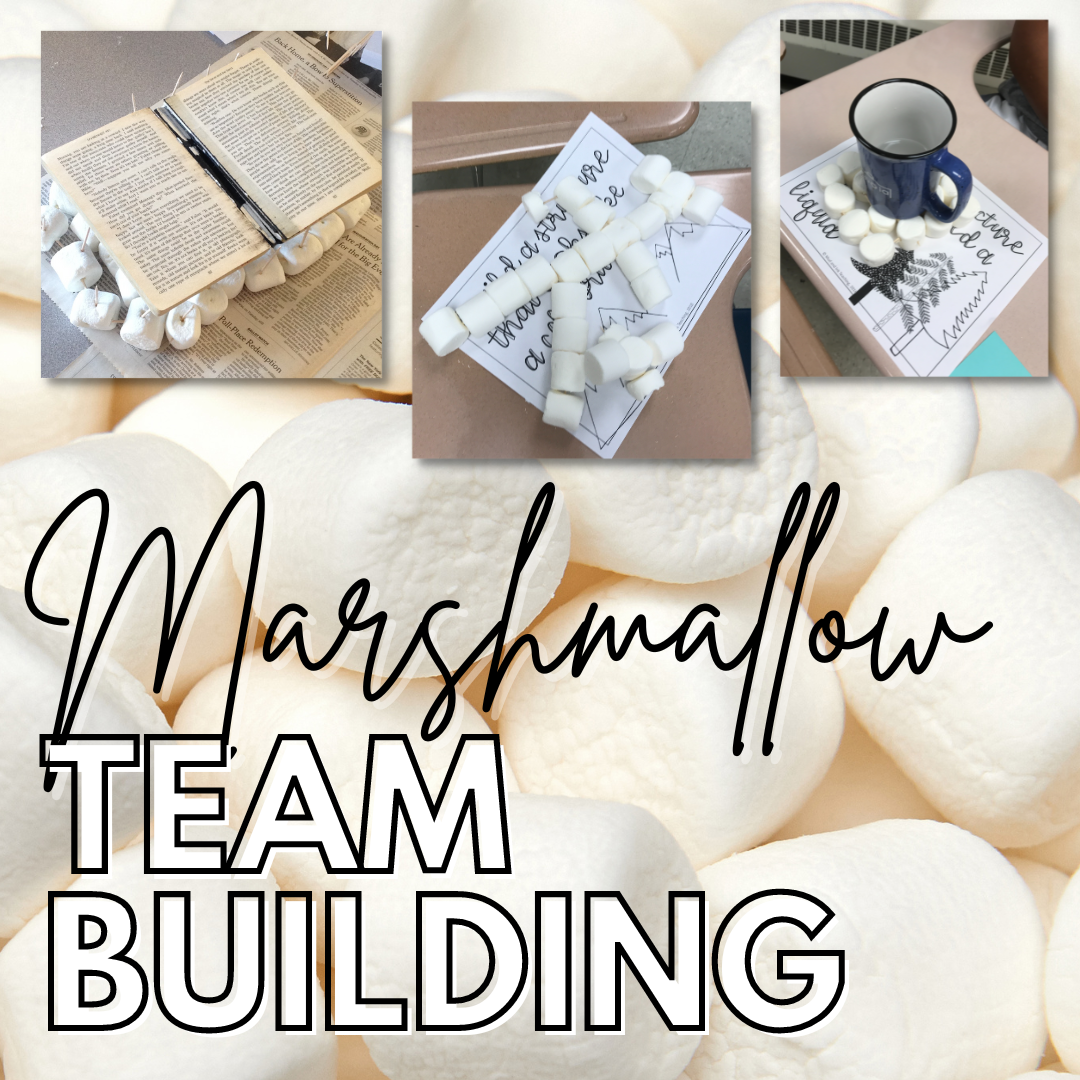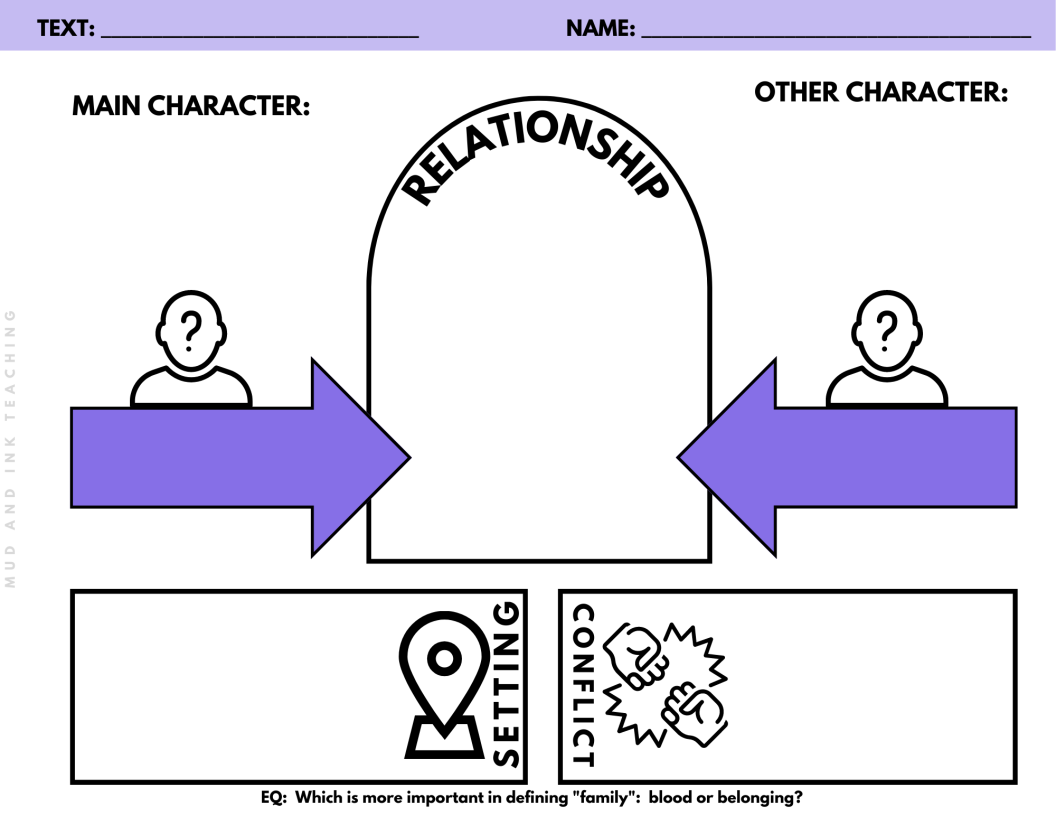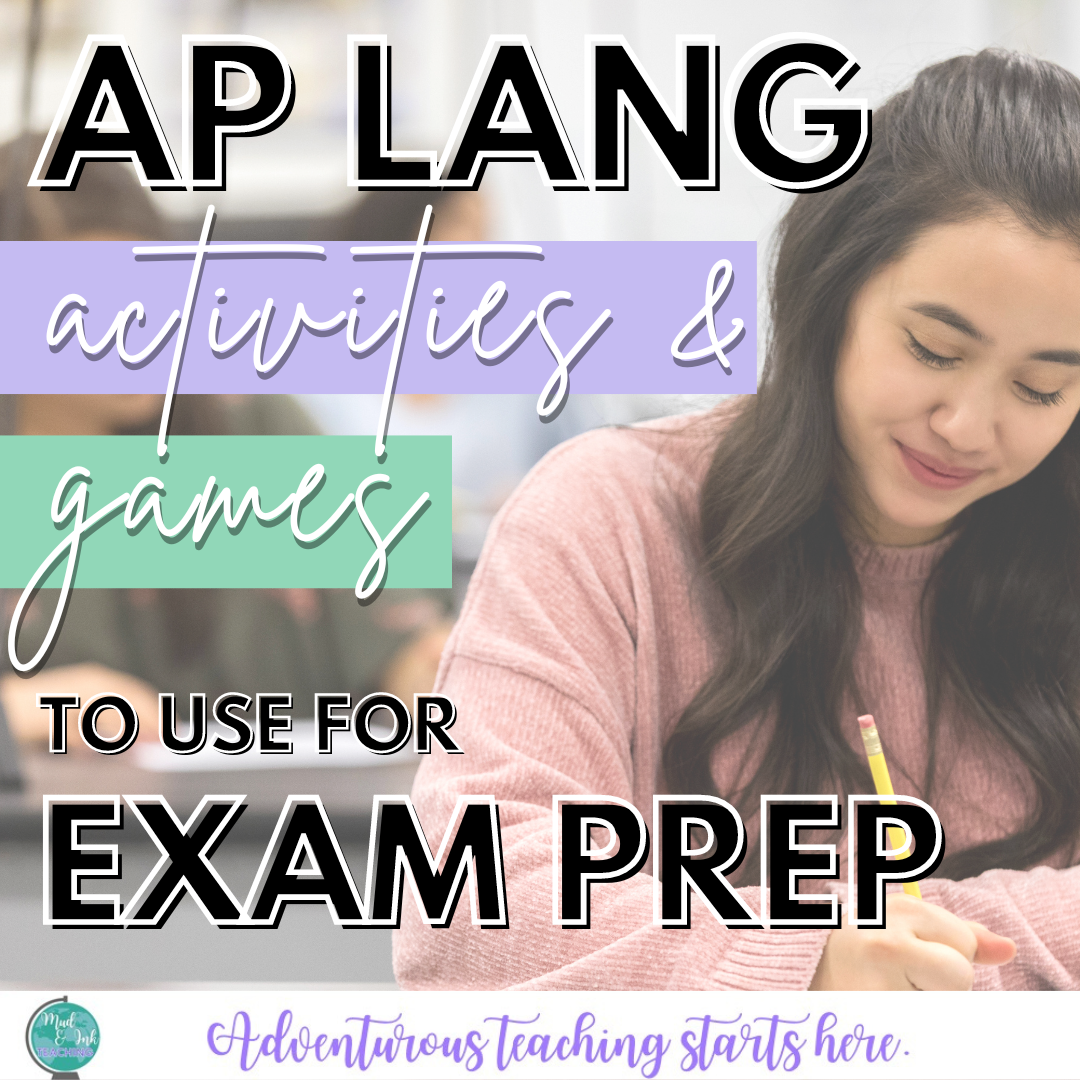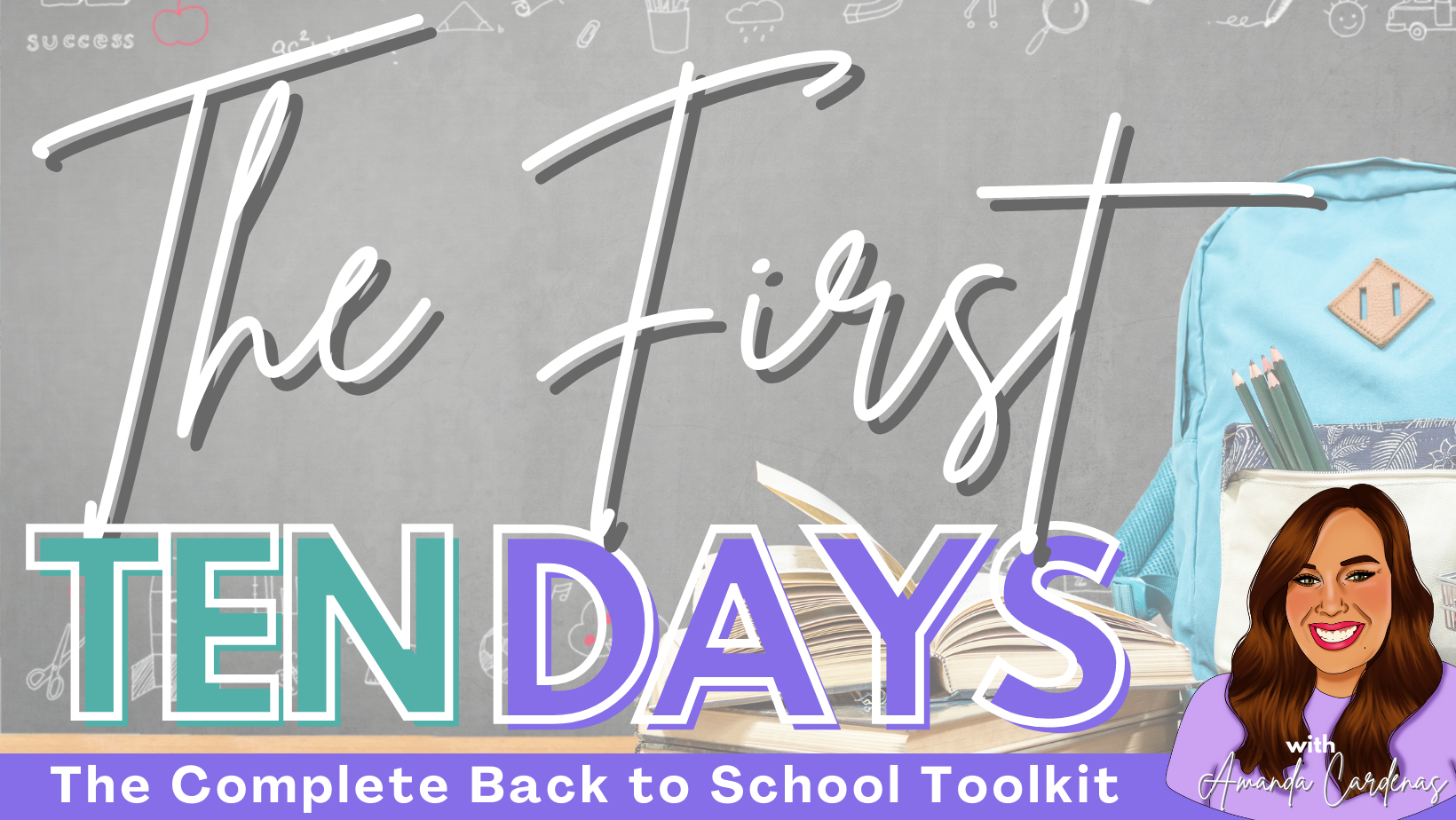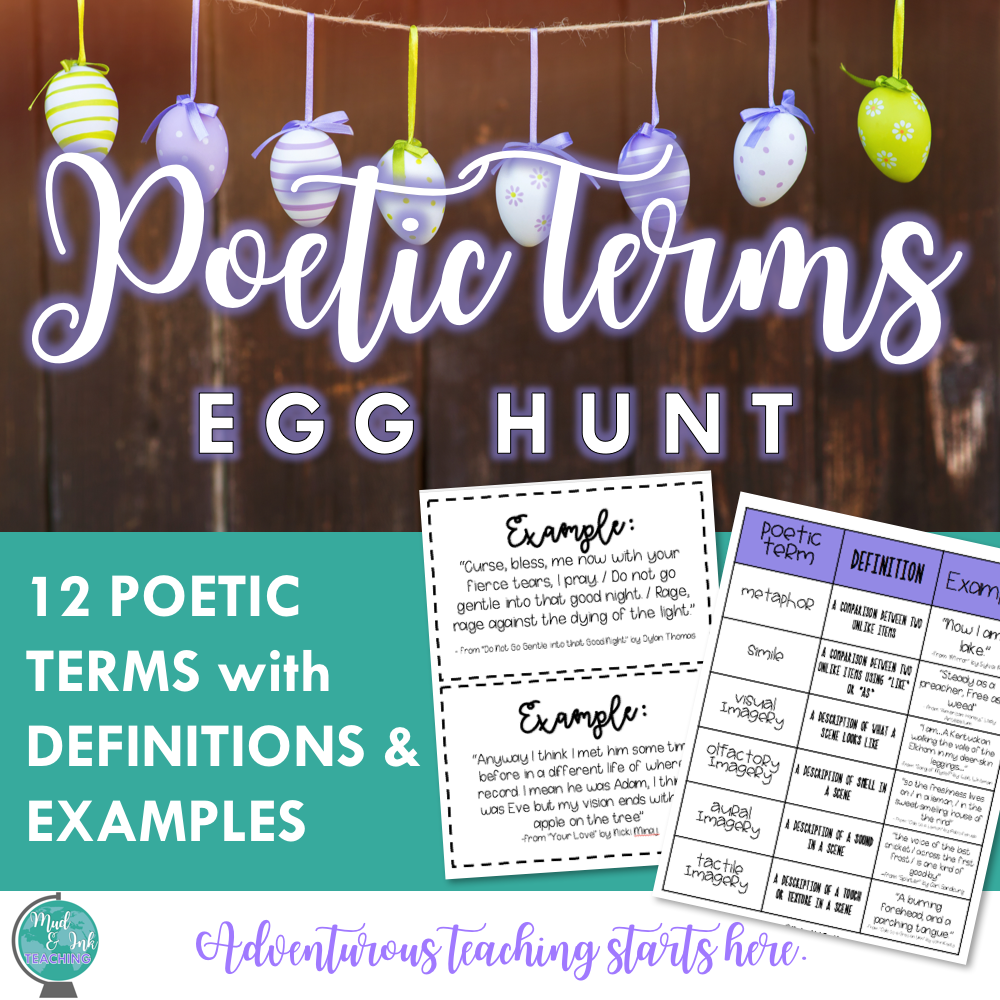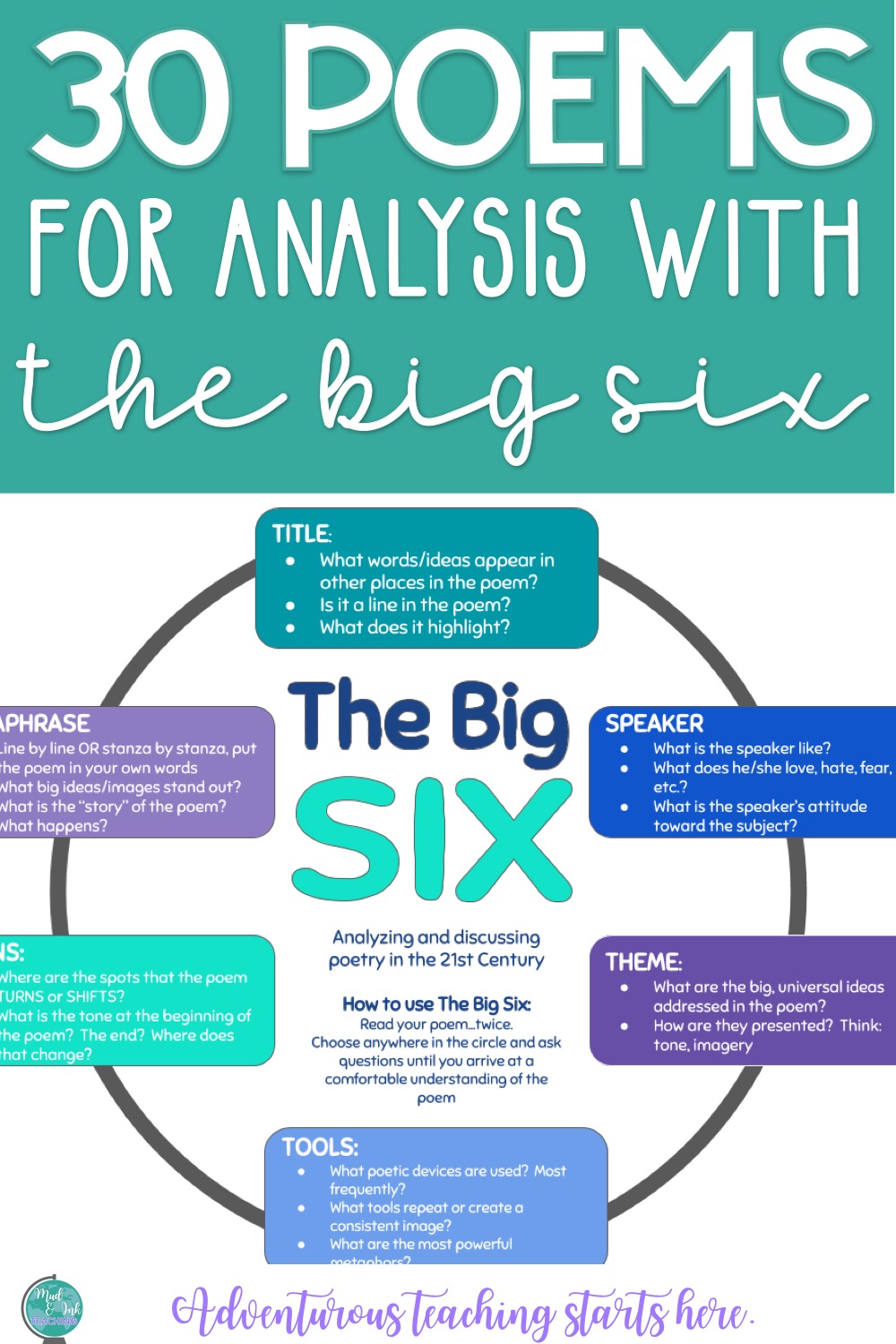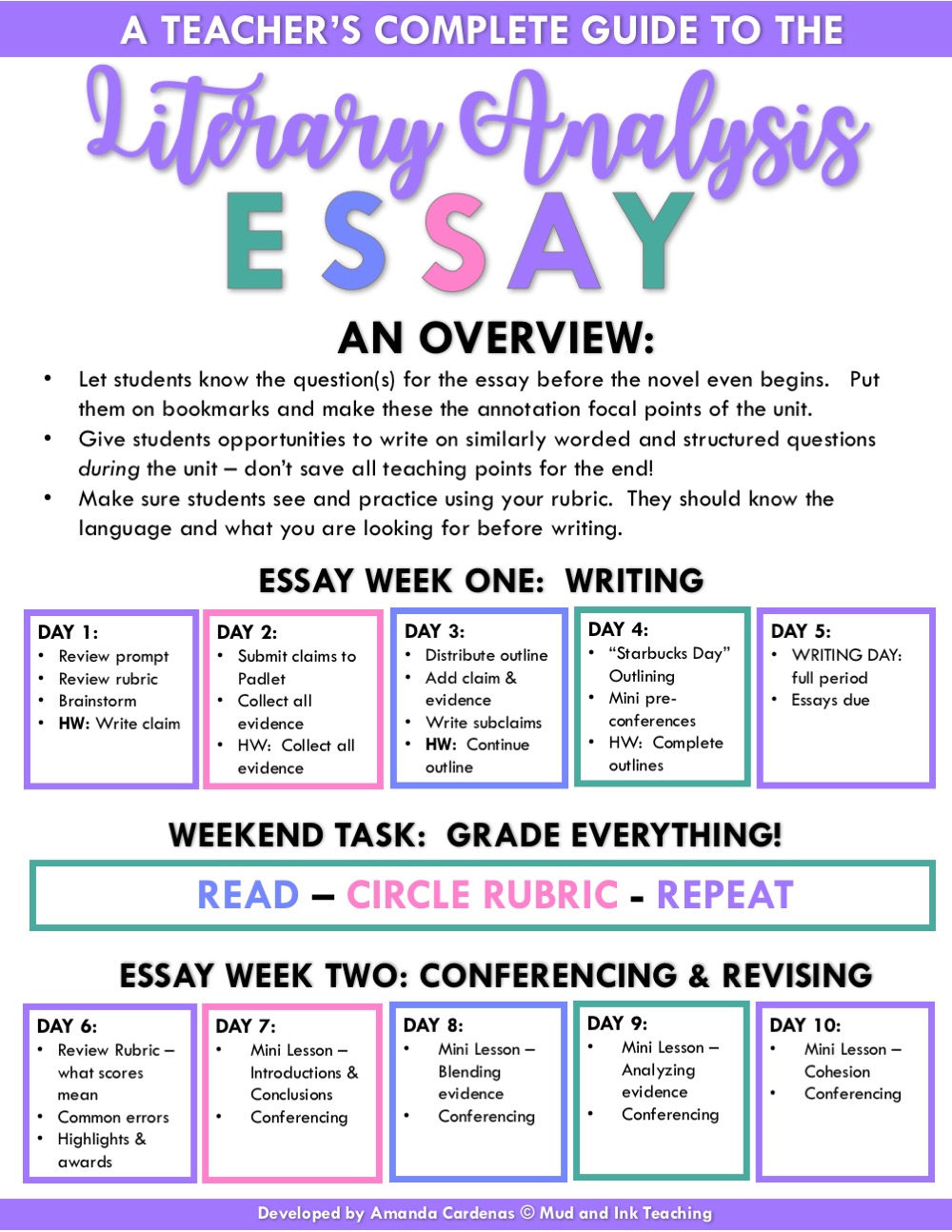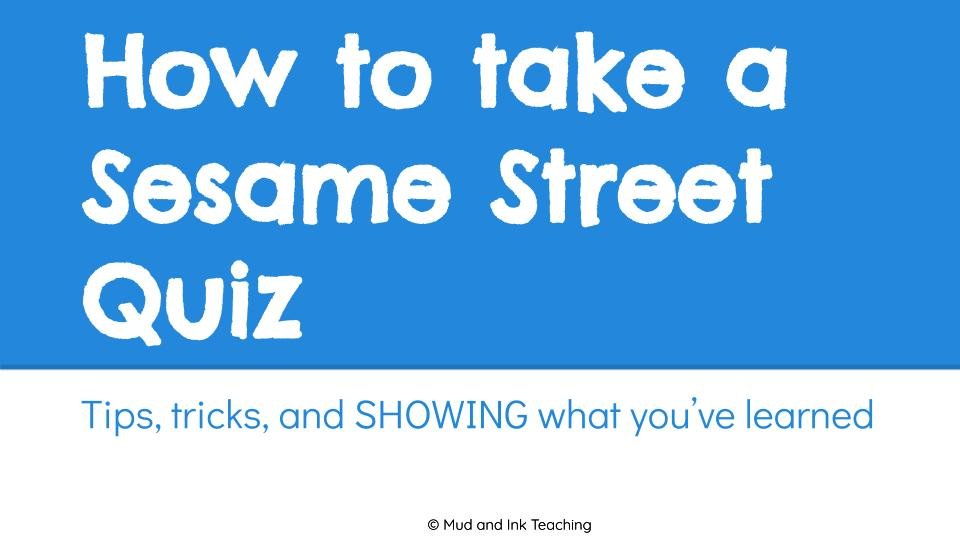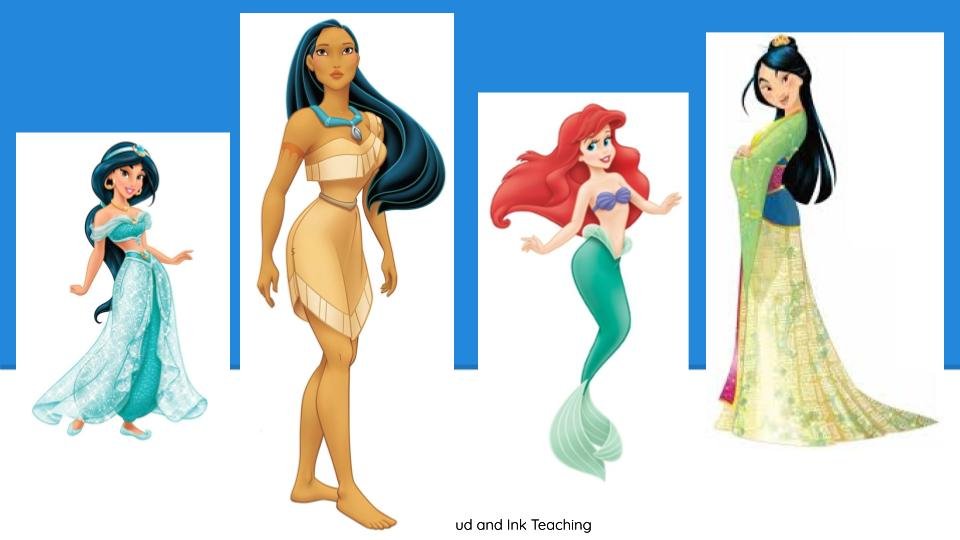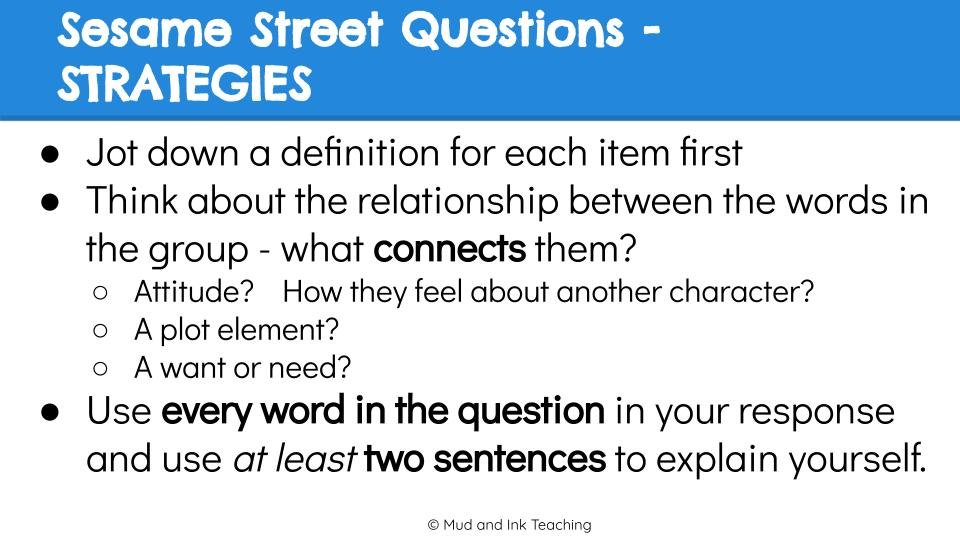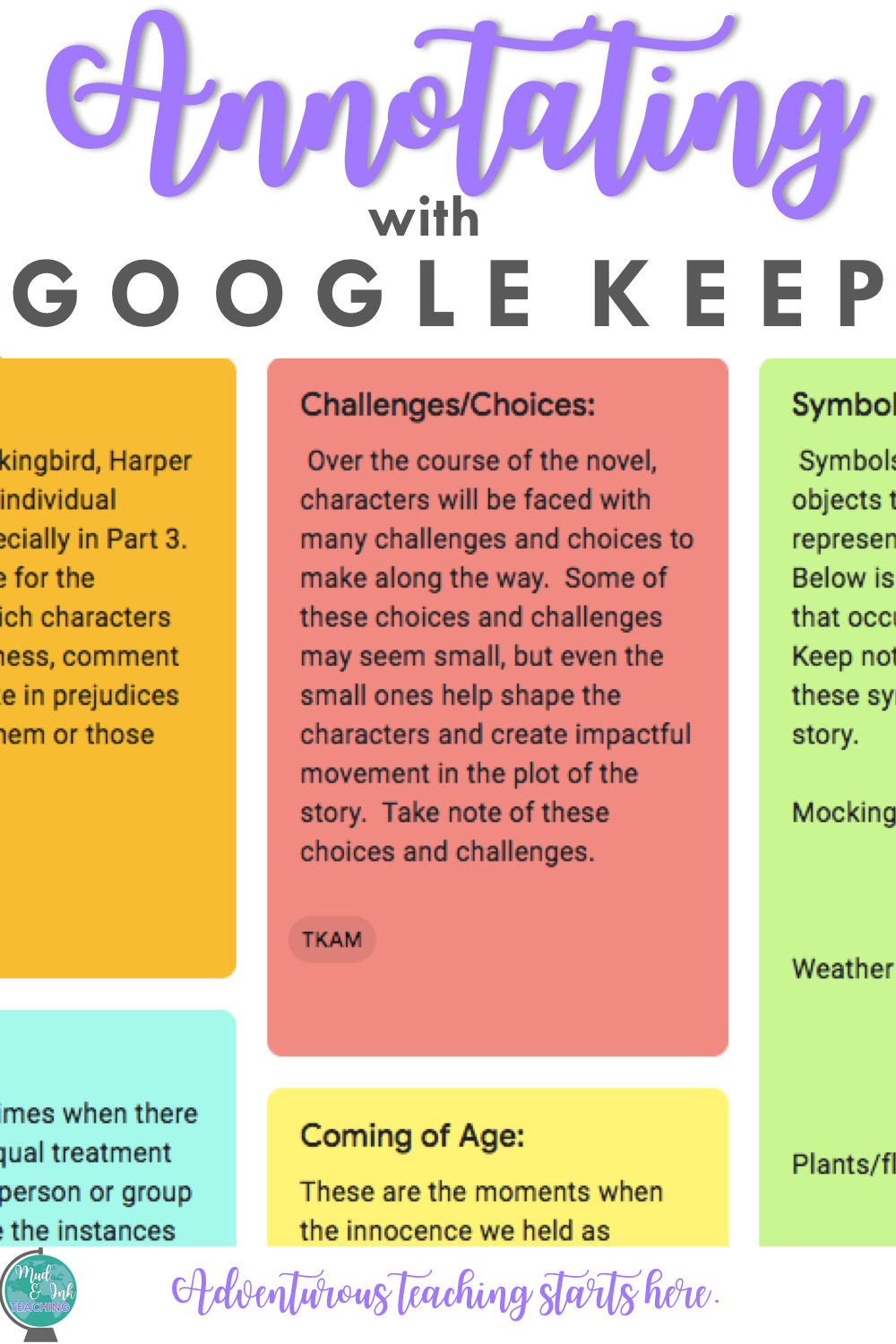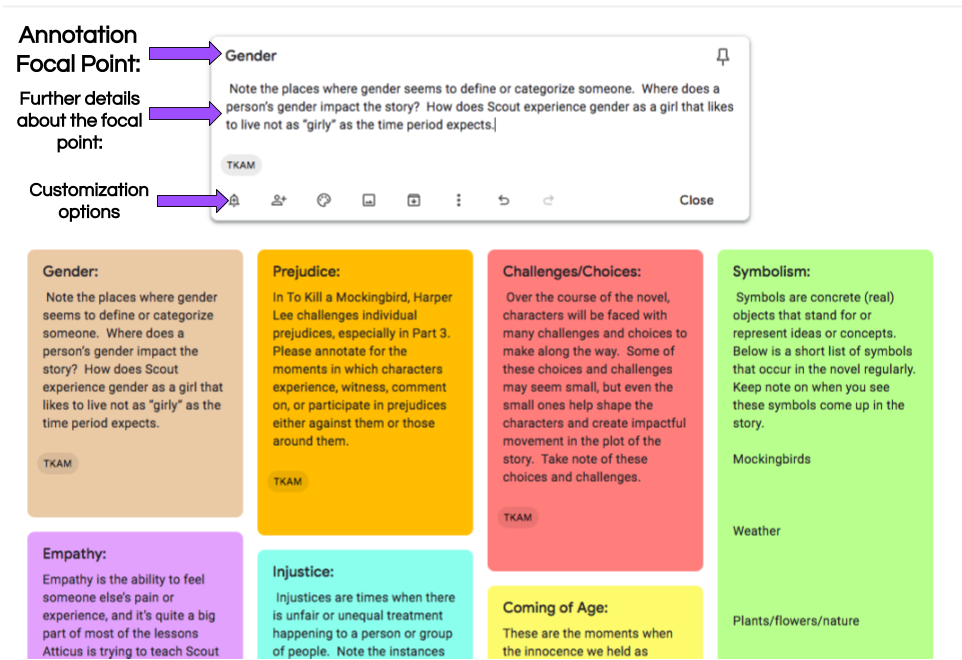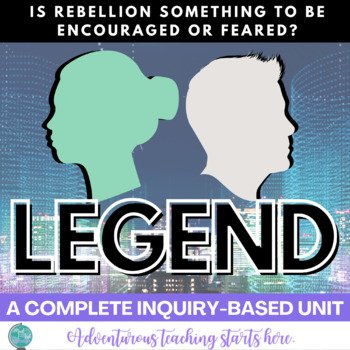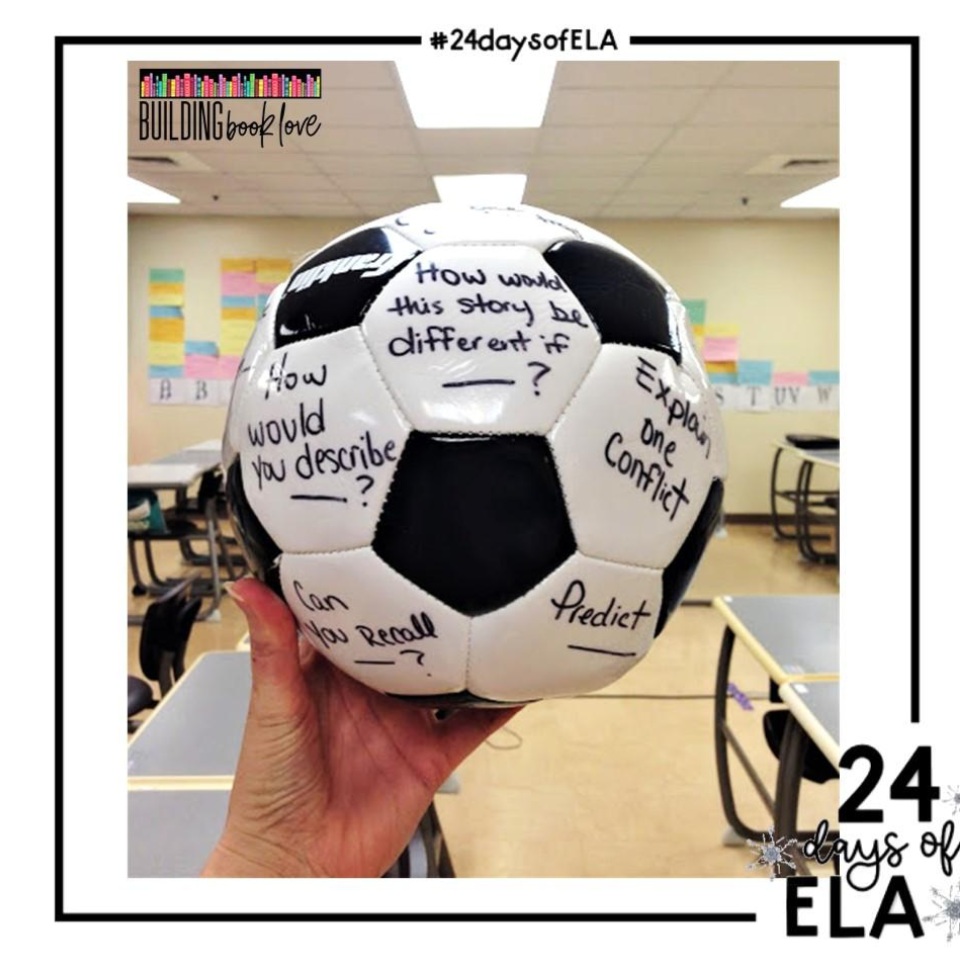
ADVENTUROUS TEACHING STARTS HERE.
The Best Essay My Students Ever Wrote
You guys. This is the first time in over a decade of teaching that I’ve gone through a stack of papers saying, “Yes! Yes! YESSS!!!!” I’m so proud of what’s been accomplished that I’m just dying to share with you how to make this happen in your own classroom.
You guys. This is the first time in over a decade of teaching that I’ve gone through a stack of papers saying, “Yes! Yes! YESSS!!!!” I’m so proud of what’s been accomplished that I’m just dying to share with you how to make this happen in your own classroom.
First, a concession:
I must begin by conceding an important pedagogical and curricular point: my students were not given proper writing instruction for this assignment. The success I’m about to share with you is limited by the situation that I am currently part of at this moment in time: a curriculum that focuses on novels and then assesses with essays. Most of us know this is nonsense: if we want students to become better writers, we need to not only use writing as a summative assessment, but we need to actually teach it, workshop it, and provide wide experiences TO BE writers.
What I’d like to share with you today is how my team and I were able to work within our parameters and still find huge student success.
So, for the purposes of this blog post, please know that I’m talking about writing AS assessment for learning.
And one more concession:
While on the whole this essay was a massive success, I still managed to find THREE instances of plagiarism. Each instance had its own unique set of circumstances, but still, I’d like to be transparent with you. Nothing is perfect.
Here’s what worked and what you can do, too:
ONE: The prompt was perfect
Having success in essay writing that is based off of an entire unit of learning means that your writing prompt has to be on point. Here’s the prompt I gave students after completing our study of The Great Gatsby:
How does Fitzgerald use style to examine dreams, and to what extent does he suggest they are inspiring or destructive?
This prompt was the cornerstone of student success. Here are two checkpoints you can use to assess the quality of your own essay prompts:
The prompt should truly ask students to use what they’ve learned.
Our study of Gatsby focused on a lot of author’s style elements, namely symbolism, characterization, and use of setting. We also spent a great deal of time discussing the American Dream and other issues relating to the thematic ideas around dreams. I didn’t want to write a prompt where students only examined one of those things, so I used the word “style” to broadly offer students options for their body paragraphs. Now, the paper would be led by the student’s choice of stylistic elements and the way in which they reveal the central theme. There are options that would be relatively easy to write about (even for students who read very little but maybe paid a bit of attention during class), but also more complex elements that students may have noticed or paid attention to on their own. The key here is RANGE and ACCESSIBILITY, while still holding them ACCOUNTABLE for everything we’ve learned.
The prompt should set students up for a claim that’s simple and clear (for those that struggle), but also has space for sophistication (for students ready to push)
For this prompt, there is a very simple, basic claim that students can write:
Fitzgerald uses ______________ and ________________ style elements to show that dreams are inspiring.
It’s lame, but it does the job. It sets a focus and even offers simple organization for two body paragraphs. This is so important for the students in your class who struggle getting started. But here’s the beauty: this prompt also can be answered with a great deal more sophistication. Here are a few interesting claims I got from students that went beyond the “fill in the blank” option:
“Throughout the story, Fitzgerald shows us many examples of how destructive dreams can be, using the symbolism of the green light across the bay, and the characterization of Gatsby himself.”
“As evident in the story, Fitzgerald uses the idea of dreams to represent something dangerous and not worth chasing.”
“In the novel The Great Gatsby by F. Scott Fitzgerald. Fitzgerald suggests that dreams inspire; however, some people can be blinded by their own self-centeredness.”
TWO: We tried a non-traditional outline
I’ve used dozens of different kinds of outlines over the years. The goal has always been to find an outline or two that students can internalize and use on their own and in their future that works for them. For whatever reason, this time around, I decided to switch things up a bit and try something totally crazy. I wanted the outlining process to be more TACTILE for students -- I wanted them to put their hands on the paper itself and be able to move it around. So, this is what I came up with:
I called it the “Hands-On Outline”. The directions were pretty simple. After breaking down the prompt, we had about five different angles students could take in their body paragraphs. The could look at: color symbolism, object symbolism, weather/temperature symbolism, characterization, or setting. To scaffold this process, I copied half sheets of paper with mini outlines for each of these potential subclaims. I also created mini outlines for the introduction and the conclusion. Now, students “simply” had to come up to the board and select their options for each body paragraph.
Whether you do a more hands-off version of this (just offer the cards, not the suggested subclaims) or not, I think what worked was PHYSICALLY getting up from their seats, PHYSICALLY making a selection and taking their cards, and then PHYSICALLY arranging the cards in the order they wanted to use for their arguments. Something about the movement hooked them this time. They were able to simultaneously break the paper into smaller, more manageable pieces, while also seeing the big picture.
THREE: The Timeline Worked
When we write essays, I always use the same timeline, but this time around, I made one VITAL tweak: the turn-in time. Here’s a peek at essay writing week (and remember, this is ONLY when we’re writing for assessment purposes)
Day One: The prompt & the claim {HW finish drafting claim}
Day Two: The outline & the evidence {HW finish collecting all evidence and put on outline}
Day Three: The outline & start writing {HW work on any writing you’d like}
Day Four: Writing & turn-in AT THE END OF THE PERIOD {THE END}
That was the game-changer: due at the end of the period.
As a writer, I so deeply believe in the writing process - believe me, I do! However, as an experienced educator, I must say that the more time I’ve given students to work on writing, it has not necessarily made the written result any stronger. In fact, with more time, my struggling writers tend to either procrastinate further, or, worse, overthink writing decisions that really don’t matter. And what’s worse? The frustration builds and I end up getting an unfinished product by the deadline.
A firm, hard end-of-class deadline can work in your classroom. Especially if you’ve planned time for revisions after the fact. The rule in my classroom is: if it’s turned in on time, you can always revise, so there’s very little risk involved in submitting work. Also, what’s important to remember is that this essay is writing for assessment, not writing for writing improvement. The goal of this paper is to show me what students have been able to synthesize and think about for the past unit, and it is CRITICAL that I have all papers turned in, almost regardless of quality. With a regular level and with struggling readers and writers especially, an end of class deadline ensures that you will have something of theirs to read and to assess.
You guys, that entire fourth day, I walked laps in the room helping students with last minute details and just riding the buzz in the room of writers working to meet a deadline. As soon as a student clicked TURN IN on Google Classroom, I let the student ring my classroom doorbell and we all cheered (more on the classroom doorbell here!). We kept the energy high, positive, and exciting. At the end of the period, two students still hadn’t clicked turned in and I made them sit at their tables and click that button right in front of me. It was tough love, and I’m okay with that. For my students with IEPs and 504s that would be too overwhelmed in that environment, they were working at a desk in the hallway with my cooperating teacher.
If you struggle with turn in and student work completion, make this change and you’ll be so glad you did!
FOUR: I graded them quickly
Fast, focused feedback is a critical component to improving student writing and helping students become better writers through revision. This year, I only had one section of juniors that got this essay, but even with more sections, I would have planned this the same way. After the essay was due, I scheduled THREE DAYS to watch the film. And the students understood the deal: you watch the movie and do the activity - I grade your papers and you get them back at the end of the movie. And I did it. In three class periods and a little time at home, I was able to get an entire class’s worth of essays graded the same week that they were written. As soon as the movie was over, we moved into revision.
I can’t tell you guys how good it feels to have successfully nailed this essay. I know this blog post was long and there are quite a few moving pieces, but I hope some of these principles and ideas can get you moving in the direction of essay success in your own classrooms. Let me know in the comments - have any of these strategies worked for you? What else would you suggest?
Here are some of my favorite lines that students wrote — some are simply fabulous writing and others are the best work I’ve seen from that particular student. I’m sure you can appreciate that! I also gave out awards for “Best Lines” and it was quite the celebration! So without further adieu, here’s me being a Proud Mamma Bear:
"The dreams we have are what inspire us to get up out of bed every day, love is what drives us to talk to others make those connections with others and find the one we love, but for some that drive gets too serious."
"Reading this, some might say that the green light represents the one goal that Gatsby wasn’t able to reach, but rather, I believe that it represents the one dream that kept him going in life. Gatsby had already attained every dream he wished, every dream but Daisy. However, his constant reaching for Daisy only helped to further him in life. Daisy was the reason that he wished to obtain such mass amounts of wealth, she was the reason he got his house, just across the bay from her; Daisy was Gatsby’s inspiration in life."
"He may be betrayed by the American Dream but his dream is deferred.. And then destroyed." (We read A Raisin in the Sun before Gatsby so I’m SUPER impressed with this allusion!!!)
"This billboard could have possibly been put here as an advertisement for a business, but was forgotten because no one took advantage of the offer. This killed a dream of the founders’, providing cheap and decent eye care for those that needed it."
"Not only does this piece of evidence describe Gatsby’s swimming pool, it describes the luxury Gatsby enjoys, the magnitude of sheer wealth protruding from every inch of his property"
LETS GO SHOPPING!
How to Guarantee a Restful Break
Preparing for your break is just as important as preparing for any other part of teaching, if not more important. These pro-tips will help you get organized before the break, be prepared for returning from break, and make sure that you go home feeling rested and not anxious about anything at school.
Or whatever break it might be: spring break, summer break, or winter break. No matter what, your coworkers, your students, and your friends need you happy, healthy, and rested!
Maybe Spring Break is just a few wakeups away, or perhaps you’re counting down the days till summer. . You might even be starting to hear bells-a-ringing and smell peppermint hot chocolate as you prepare for winter break. No matter the break, it’s critical that the time you spend away from school is time spent relaxing, repairing, and taking care of yourself - NOT working on school (I’ll work on my store, but only because that’s so much fun!).
Preparing for your break is just as important as preparing for any other part of teaching, if not more important. These pro-tips will help you get organized before the break, be prepared for returning from break, and make sure that you go home feeling rested and not anxious about anything at school.
1. PLAN FOR THE RETURN
Right now as I write this post, Thanksgiving is just around the corner, and believe it or not, I’m already starting to think about January. Seriously. I know how this semester is ending (finals, etc), but the start of second semester always looks a little different year to year. Between now and Thanksgiving, I need to make an important decision: what will I be teaching the first five days after break? Once I’ve decided, it's time to write materials, print, and copy everything! This is by far the biggest anxiety-reducing step you can take. Not sure what to do? Here are some possible ideas:
First day back: REFLECT. No one ever wants to be in school this day, so don’t try to force something too tough. There are hundreds of great reflection/new year types of lessons all over the internet and on Teachers Pay Teachers, so go find a favorite and COMMIT.
Try teaching “How to Be a Person”! It’s a great poem that has kids reflecting on the kind of person they want to be as they reset their attitudes for a new school year. Here’s a blog post with free lesson plans!
Start building historical background and context for a new unit. Planning a few days for a relevant documentary and some stations for student-centered learning would be relatively easy to knock out now!
Have a SOCRATIC SEMINAR! Here are the plans that we use with summer reading and returning to class and my typical plans for the first ten days of school.
2. PLAN YOUR END OF SEMESTER GRADING TIMES
When do you plan on grading your finals? What about the last assignments of the semester? Consider actually scheduling the time when you plan on accomplishing each of these tasks. If you leave it up to chance or “when you feel like it”, you’re not only never going to “feel like it”, but you’ll end up feeling like you’re drowning. Here are some helpful tips:
Make deadlines work for YOU. My students are turning in their final essay of the semester on a very specific day that works for me. I picked a day that I know I have time to grade (both in my school and personal life -- I’ve put it on my family calendar and my husband will be taking the kids to grandma’s that Saturday morning!) Scheduling this time helps me knock the grading out in just one or two focused sittings, rather than scattered times that make me feel like it will never get done. Here’s more on how I plan out my grading process…
Use rubrics that WORK. Yep...my kids are writing a paper for their final exam, but YEP, I’m also using a single point rubric that they know, understand, and are prepared to see in the grade book.
3. START INDIVIDUAL STUDENT TASKS EARLY
Need to write report card comments? Planning to give students a personalized gift or goodbye of some sort? No one said you need to wait until the end of the semester to get these things started. It’s made such a huge difference for me to get my report card comments done before Thanksgiving (or at least underway) so that when that final to-do list comes around right before the end of the semester, I already have one big item ready to check-off the list. I will occasionally make minor updates, but if you’ve been teaching longer than a few years, you know that the comments you make about a student aren’t really going to change between November and December, except for a few special cases.
4. CONFIRM FINAL ASSESSMENT DETAILS AND PREP
What’s the final assessment? What’s the final exam? Where is the answer key? Which kids will be using extended time or other testing accommodations? Ask questions like these early, get answers, and get going! Fill up your planner with the important details, make your exam copies, and take a deep breath.
5. PLAN SOMETHING FUN TO CUT THE STRESS
For the winter break, I make sure to keep my room cozy and jolly all throughout December, no matter how stressed out we all are. I have a blog post about how I keep the mood festive and I also have a super fun activity where students create stockings to represent their favorite character in literature. With the YouTube fireplace rolling and our character stockings hung, December isn’t too painful.
For the end of the school year, we do a “Final Lines in Literature Countdown” with paper chains up until the last day of school. With each passing day, we read a different last line from a famous work of literature and discuss the type of ending it is and rank our favorites.
I wish you the best of luck as you prepare yourself for a restful school break. You deserve this time off and we need you rested and ready to go when you get back! With everything graded before you walk out the door and five days worth of plans ready and copied for when you return, I guarantee your break is going to feel magnificent, and there will be no Sunday scaries the night before your return!
Girl Power and the Girl Scouts Gold Award
This post is sponsored by the Girl Scouts of the U.S.A.
GIRL POWER.
It’s the refrain that I heard throughout my childhood growing up in the 90s. It was the Spice Girls banding together, Missy Elliot rivaling male rap artists, it was the beginning of Beyonce’s reign, and there was never a moment in school or at home that I thought for one second that there was something that I could not do because I was a girl.
Of course, I grew up and times changed. I learned that despite all of the lip gloss and party music were waves of feminism and layers of injustice that I just had never understood. When I look at my daughter and when I look at my female students, I want so badly for them to grow up feeling empowered, fierce, and craving justice; I want them to feel the positivity of “girl power” with a healthy dose of the realism of what it means to be a girl in the 21st century.
One organization doing this incredible work is the Girl Scouts of the U.S.A. Girl Scouts teaches girls things such as science, technology, engineering, and math (STEM); entrepreneurship; life skills; financial literacy; and outdoor experiences—in the safe, all-girl environment of a Girl Scout Troop, where they can try new things, develop a range of skills, take on leadership roles, and feel comfortable failing, dusting themselves off, and trying again! This kind of support from an extracurricular activity is critical, and one that I hope more and more of my female students discover.
What I’m most inspired by is the Girl Scouts Gold Award. The Gold Award is the most highly regarded award in the world for girls. It’s the mark of the truly remarkable—proof that a girl can not only make a difference, but she already has. It’s a distinction that can open a girl's world to scholarships, preferred admission tracks for college, and amazing career opportunities. To earn this unique award, Girl Scouts tackle issues dear to them and drive lasting change in their communities and beyond. These girls are leaders in their communities, schools, and will bring those skills with them into the future. As a teacher, I’m so excited to share these stories with with my female students and see who is up for being part of this incredible organization.
The ten National Gold Award Girl Scouts were chosen by Girl Scouts of the USA and nominated by their local councils as ten exceptionally inspiring National Gold Award Girl Scouts. Their voices, their ideas, and their commitment to social justice is exactly the kind of girl power that makes me excited to see what this incredible generation of young women will bring into our world. Curious what these National Gold Award Girl Scouts have been recognized for?
Isabella: Wrote and directed a play to shine a light on violence against Native American women.
Taryn-Marie: Working to help foster kids make the grade in college
Ana: Using education to fight racism
Megan: Proving that girls + robotics = a perfect match
Kai: Reviving music education where it had been silenced
Gracie: Teaching kids about hand-raised food
Phoebe: Showing the world the diversity and depth LGBTQ+ community
Minely: Making sure the needs of the deaf community are met with dignity
Lauren: Giving cancer patients a sense of community
Mary Katherine: Helping to save the coral reefs
Story after story, it’s pretty simple: these girls inspire me. I know they will inspire my students as well.
To learn more about the research behind the leadership development that Girl Scouts of the USA have been working out, check out their in-depth report.
9 Amazon Back to School Products for the High School Classroom
When back to school season rolls around, I always have my guard up when it comes to shopping. There is always SO MUCH that I WANT, and so little that I actually NEED. What I’ve done for the past few years is this: I set a budget and I set a limit on my projects. The point of summer break is to recharge and relax, but for me, part of that recharging does involve some school work - the fun stuff that I never have time to get to during the year! But, also knowing myself, my list of projects can get unreasonably long, and so can my impulse buying at Target.
Here are a few questions I ask myself before making a purchase or starting a project:
What is the longevity of the item or project? Will it/should it last?
Does this help solve a problem or frustration in my classroom?
Does this contribute to a classroom management strategy?
How often will I make use out of this product?
How does this benefit students?
Armed with those questions, I spend my summer browsing. I use the save feature on Instagram, I get on Pinterest, and I mostly look for inspiration for things that will help me solve problems or pet peeves I have in my classroom. Now, this doesn’t mean that I never do things that are cute simply because they’re cute - I do! But I try my best to make sure my time and money are spent on things that are functional and long-term solutions for my classroom.
These are my top 9 Amazon purchases for my high school English classroom:
I did not make these purchases all in one summer; I have accumulated these items over time and I only recommend them because they’ve actually worked and I’ve been able to answer my questions above in purchasing them.
CLASSROOM MANAGEMENT: Wireless Doorbell
I can’t think of a strategy that I use more frequently than stations. At the start of the year, one thing I do is practice my routines (more about that here). As my students move through stations, I use the wireless doorbell to signal when it’s time to rotate. The kiddos get a kick out of it and love that I can change the ring tone.
3-Tier Cart for Classroom Library
This one was my new purchase for the 2019 back to school season. My classroom library had always been a disorganized mess, so I decided to reprioritize and makeover my library. I ended up with a mini library on this rolling cart. The money spent on this cart has solved so many problems that I once faced in my classroom and makes an impact on students every single day. Totally worth it!
My go-to classroom management strategy with cell phones is to use a charging station. Using a shoe hanger and a sweet power strip, I’m able to encourage students to stay off their phones and focus on the work we need to get done. More on that policy here!
CLASSROOM ATMOSPHERE:
Vertical String Lights & Fairy Lights with USB
For ten years, I taught in a classroom with enormous, gorgeous windows. I never turned my lights on and I never needed any lighting solutions for my classroom. Then, I changed schools and my new classroom is a box with some tiny little windows around the upper perimeter of the room, and when my lights are off, it’s a dark place to be! I can’t stand flourescent lighting and floor lamps are obnoxious with teenagers, so I opted for a sting light solution. These lights I hung across my ceiling and they are BEAUTIFUL. They bring plenty of light into the room and set a peaceful mood in the room. Paired with these fairy lights (they come in a two-pack...I bought them for my house and only needed one set!), my room twinkles and glows.
And, for whatever reason, my classroom (and schools in general) always have such a distinct, unpleasant smell. Enter: essential oils diffuser. This one is my favorite and I use whatever oils I have lying around. The scent is light and I’ve never had a student complain of the smell being to overwhelming, so so far, a win!
CLASSROOM SUPPLIES
Crayola boxed marker set & boxed colored pencils
This is the list that tempts me the most to overspend, but, simply put, after over a decade of teaching, these are my three favorite school supplies. The boxed Crayola markers and pencils last the entire school year. They’re already organized in their own box (no more supply caddies per table!). I can put them away and take them out easily, there’s plenty to share, and it’s a one stop shop. They’re a little expensive (I always make sure to request them from my department - don’t pay for them yourselves!), but I used to just run out of supplies halfway through the year and have to replenish anyway. I’ve never had to do that with these boxes!
Bic intensity dry erase markers
Now these dry erase markers fit virtually none of my listed criteria that I shared with you at the beginning of this post, however, they’re still my favorites! These dry erase markers on Amazon are only 12.00 (and there are 12 markers), they’re bold, and they seem to last forever. You should just try them and see for yourself!
Looking for more favorites? Check out the rest of my Amazon favorites here!
My Classroom Library Makeover: Downsizing & Prioritizing
In my own classroom, the library has never really functioned the way I wanted it to in my dream scenario. The time, effort, and focus that it takes to truly run the library the way it deserves to be run never really seemed to be worth it. I am already dedicating so much time to other things that the classroom library feels like a chore. That corner of the room is always a disaster. I never know what’s there -- it seems like all of the good, favorite books disappear and I’ll I’m left with are the random books from garage sales that I’ve never read (and no kids want to read either!). But when I was a young teacher, I believed that MORE BOOKS meant a BETTER LIBRARY. I have decided that this simply cannot be true.
The power of the classroom library cannot be ignored (I hear you, NCTE), but, I admit, for a long time I haven’t been a huge fan. Something about their popularity on social media always rubbed me the wrong way. So often I see new teachers posting, begging, and desperate for ideas for how to collect enough books for their libraries, and I’m frustrated that there’s just one more thing on our plate to take responsibility (not to mention, more money!). I see pictures of color coordinated, gorgeous spaces in August followed up by pictures of the same area covered in construction tape come November, and I can’t help but wonder, what’s the point?
I can remember this panic as a first year teacher: how on earth was I going to get enough books to fill my classroom library? Then, I scoured garage sales and Goodwill to find titles to fill the random shelves left in my classroom from the retired teacher who “lived” there before me. Fast forward about three years and those shelves and the dream classroom library scenario that I had imagined was a hot mess. I never actually found time to catalog anything. We had a “go grab something to read” policy that wasn’t fostering a love for books. Nothing was organized, and as I’m sure many veteran teachers can remember, there were quite a few other things on the table that took precedence over maintaining order over the classroom library. I tried putting students in charge, I tried tending to it one day a week, but without dedicating serious time and energy to the library, it just became more and more frustrating to maintain. What WAS working, however, were BOOK TALKS. Conversations about literature between me and my students, between the librarians who visited my classroom and the students, and other adults in the building sharing their love of reading: that was time well spent. Alphabetizing and reorganizing the mess in the back? Not so much.
The library clutter right around June 1st…
Then, after ten years in that school, it was time to move. And guess what? There was NO WAY I was moving all of those books. I kept the ones that were nearest and dearest to my heart and gifted the rest to students and the teachers who would inherit my classroom. It was time for a new approach.
I’d like to share with you today how I revamped my classroom library and gave it a total makeover. From the physical space to the philosophy and purpose behind the library itself, I’ve done a lot of renovation to create something that will be effective and practical in my busy teacher life.
CLARIFYING PURPOSE
For me, the purpose of a classroom library is not really about access to books. For my teaching career, I’ve worked in schools with incredible librarians and school libraries that are well stocked, diverse, and engaging with students. Because of this, I needed to define the exact purpose of my CLASSROOM library. Why have my library if the one down the hall is incredible? The answer to this question is the driving purpose behind each of the decisions I made in my library makeover: to share a passion and love of stories and to pique curiosity.
THE PHYSICAL LIBRARY
So, if my goal is to share my passion and love of stories and pique curiosity along the way, there’s no need for a massive library space. We don’t do silent sustained reading, my kids aren’t looking for cute reading furniture (that’s just not how my 50 minute high school periods go!), so I was focused on finding one furniture item that would allow me to house the books that would accomplish my purpose.
Enter: the three tiered rolling cart.
I love this cart for so many reasons. It was easy to put together, it’s portable (hello wheels!), and it’s naturally sectioned off for me to create categories.
I really like this one on Amazon, or even this one as a cheaper option (it would be so cute with some Dollar Tree bins!)
Since I wanted to pique curiosity, I will be implementing a shortened version of the First Chapter Friday practice with my own First PAGE Friday. I want the book that I read from to be easily visible for students, so I opted to pick up this cart topper so that the top of the cart was more like a shelf. Then, the next Friday, I can toss the book(s) from the previous week into the top bin and move on to the next book!
FIVE STAR BOOKS ONLY!
My dear friend Ashley Bible is the queen of all things tidy. She hosts a Clean Classroom Challenge through her Instagram account a few times a year, and when I read through the challenge, this idea stuck with me: five star books only. Ashley made a decision to cut the clutter in her classroom library by only affording shelf space to the best books in her collection. The others were given away or donated. Read all about her system here.
So, with that in mind, my library will take on the same attitude. Again, my purpose is to pique curiosity and share passion, so what better way to do that than with the books that I’m seriously crushing on and that I know kids are drooling over? I used to think that if I didn’t spend my summer weekends scouring garage sales, writing grants, and creating donors choose drives, I would never be able to replenish my library. I’m done with that! All that time I now spend working on other things that more tangibly affect the overall growth of my students and their literacy skills. Also, I spend more time on ME relaxing and taking care of myself before the next school year rolls around.
Any books that don’t fit in my small little library either are at my house or in a closet at school. Students will still be able to see that I own them by accessing our DIGITAL library. More on that in a bit!
ORGANIZING THE SYSTEM
QR codes are seriously my friend. I use them for everything, especially now that our school is 1:1 with chrome books. With QR codes, my little portable library gives students access to the extra books I have at home (using the app Libib), the books in our school library (just links to their online digital catalog), the books in our school ebook library (again, organized by my fabulous librarians!), as well as a YouTube playlist of book recommendations, trailers, and reviews (grab that playlist here). To display these QR codes, I simply created some templates (I used a mountain/outdoor theme to match my classroom), printed, backed on cardstock, laminated, and attached them directly to my cart!
How the Keeping the Wonder Workshop Can Change the Future of Teacher PD
We have all been to our fair share of professional development that has felt like a total waste of time. Yes, even a PD junkie like me who finds the sunshine in everything can admit that. But boring PD doesn’t have to be that way, and admin needs to know this. This summer, I had the pleasure of both presenting and attending one particularly groundbreaking event: the Keeping the Wonder Workshop. This full-day workshop is leading the charge as an example of how PD for English teachers can be invigorating, inspiring, and infectious.
Keeping the Wonder teachers, presenters, and world changers.
We have all been to our fair share of professional development that has felt like a total waste of time. Yes, even a PD junkie like me who finds the sunshine in everything can admit that. But boring PD doesn’t have to be that way, and admin needs to know this. This summer, I had the pleasure of both presenting and attending one particularly groundbreaking event: the Keeping the Wonder Workshop. This full-day workshop is leading the charge as an example of how PD for English teachers can be invigorating, inspiring, and infectious.
If you don’t have time to read through this entire article, here’s the biggest takeaway: professional development FOR teachers is best when it’s ORGANIZED BY teachers. When consultants from the newest program or speakers with no classroom experience stand in front of teachers, admin, you can pretty much bet the takeaways will be minimal. It’s not that the information isn’t valuable - it’s that teachers are a really complicated breed of human being. We like intimacy, but not always the spotlight. We want to be creative, but we also want to be resourceful. We want to push every student to their absolute academic potential, but we also want to make sure to provide for their mental and social health. Simply put, the format of one speaker to one giant audience of teachers is a formula bound for struggle. Teachers need (and want!) smaller, more frequent, more personalized PD. How do you do that for us? Find the expert teachers in our school or even in the education social media sphere to work with staff.
Keeping the Wonder (or KTW) proved the need for smaller, personalized PD on so many levels. I’ve narrowed it down here to a few lessons to be learned from how Ashley Bible, Jenna Copper, Abby Gross, and Staci Lamb (the KTW team) ran their workshop.
Here are four ways that Keeping the Wonder can change the future of teacher PD.
1. Worry Less About Research and More About Authenticity:
Marie Morris (AKA The Caffeinated Class) presents on bringing theater into the ELA classroom. Photo Credit: Angelyne Collins
Yes. Researched based strategies like CRISS and UbD are critical components of continuing teacher education, but be careful about the way in which these pedagogies are presented to the staff. If a company is sending a trainer, it’s likely that trainer is coming with a binder full of talking points rather than planning an experience for teachers.
At Keeping the Wonder, presenters shared strategies that were both research based AND classroom tested. BOTH kinds of strategies are valuable. I’ve done plenty of lessons in my time that weren’t based solely on one specific body of research and they’re been lights out, killer lessons. That’s because teachers know how to teach. Their experiences should be just as valuable and worth the stage as the research. Strive for balance in what you bring to your teachers and they will thank you for it.
KTW participants said:
“When I go to more ‘traditional’ PD I feel like the presenters spend a huge chunk of time simply validating their presentation and grounding it in research. While of course that is important, for me Keeping the Wonder just got down to brass tacks. The sessions were the perfect length and jumped right in with the HOW. Honestly, as a teacher at this point in my career I don't care so much about the WHY -- I know the presenters are legitimate and masters in their craft. In other words, I trust them! On a broader level, I often feel like those presenting ‘traditional’ PD are doing it to inflate their resume.” --Noel Cordle
“Everything about it was just so valuable and intentional and practical and useful. Not like the stuffy commercialized, forced upon you PDs that teacher usually have to attend. It was what PD should be. It was so worth the trip. Truly made me love teaching even more.” --Chasity McGee Ivy
CHECK OUT MARIE MORRIS’ VLOG OF THE EVENT!
2. Keep Sessions Short & Flexible
Amanda Cardenas (AKA Mud and Ink Teaching) presents to a small group on the magic of setting. Photo Credit: Angelyne Collins
At the school where I began my career, I can remember getting the back to school letter in the mail with our agenda for PD on the first two days. We always started those days with a two-hour long session. Seriously. We jumped into the newest initiative before we even said, “Hi! How was your summer? Did you have fun on your trip to…” and then BAM! Two hours in our seats “listening” to a presentation that we all took very seriously (I mean, no one was on their phones or laptops or daydreaming about the million mile long to do list for the first day...hasn’t anyone told you yet that teachers are the worst students??).
At KTW, sessions were organized in small chunks and anticipated the needs of teacher participants. The organizers looked at their participants as students, and then, using best practice, planned a day that would be effective for their students. It seems like such common sense, but it’s so rarely happening during PD time in schools! With the day broken down between large group, small group, rotations, flexible seating, snack time, etc., teachers happily learned at a pace that kept them engaged the entire day (making it worth the money invested). This is an easy fix for schools looking to up their PD game.
KTW participants said:
“I think the timing of sessions was also very well planned. At previous PD I’ve attended, sessions will go for over an hour, and I struggle to remain focused. Having a variety of session formats (the tours, the whole class sessions [the suitcase and mind maps presentation, the presentation on escape rooms, etc.], the breakout sessions) and keeping them under an hour was very helpful in making it effective for me as a teacher learner.“ --Sarah Danielle
“What I loved most was that the ideas were all easy to implement in the classroom without having to revamp units wholly. A lot of pd sessions I’ve attended pretty ask you to approach your curriculum in a completely new way that is unrealistic for what requirements exist at a school that has certain regulations on curriculum. To sum: Real teachers. Real lessons. Real learning. Other things I liked was that there was so many things to learn bc the pace of the day was quick and always moving. I was never bored. It was affordable and worth the cost (that is not usually something I say about PD.)” —Angela Vasquez
Workshop seating setup for guests. Photo Credit: Angelyne Collins
3. Include Active, Excited Teachers as Presenters
It can be really hard for a room full of educators to get excited about a presentation from someone who hasn’t been in the game and can’t honestly relate to the day-in-day-out lives of teachers. If you can’t find expert teachers in your district or area, reach out to the teacher authors who write and share about teaching online and on social media. Keeping the Wonder mastermind Ashley Bible is starting to travel for PD, Jennifer Gonzalez is an expert teacher I’d love to have in my school, Jen Jones from Hello Literacy travels the country working with schools, and I’ve also started working the PD circuit myself. You might even consider doing an EdCamp model and letting teachers teach each other in a more off-the-cuff fashion. Real, engaging, and excited teachers are out there, but they have probably been busy teaching and haven’t done 25 years of research. Ask your teachers who they follow on social media or what books they’re reading. They’ll let you know who they’d like to see.
KTW participants said:
Jessica Martin (AKA The Whimsical Teacher) shares her secret strategies for using root words. Photo Credit: Angelyne Collins
“KTW was so much better than the “traditional” style of professional development. The biggest difference is that everyone who was involved is an active teacher. All of the ideas and techniques have been used and tweaked in the classroom. There was even one session where the presenter said, ‘This crashed and burned a few times, but isn’t that the nature of teaching? We just try again the next day and try to make it better.’ They are real people who understand the needs of teachers because they ARE teachers themselves. The material shared with us was something we could use to enhance our teaching practices without adding extra work, extra items on the to do list, or extra time away from our personal lives.” --Alexandra Rodriguez
“All the presenters I’ve watched are actually USING the strategies, and not just regurgitating research or mundane language about their activities. I think the best pd comes from the teachers...I [was able to] pick and choose what I want to learn instead of listening to one presentation for 3 hours straight!” --Rachael Salvucci
“I liked that there were a variety of strategies and methods shared, and I appreciated experiencing it from a student’s perspective through the modeling. I think this provides a clearer picture of how the activity goes and is meant to be experienced. I also loved being a “student” because it kept me engaged and, most importantly, made it fun PD!” --Sarah Danielle
4. Let Teachers Stay in PJs with Eighteen Cups of Coffee
Even when the PD is strong, teachers still need to go to school to get the training. Does that really have to be the case? Other industries have moved to a more remote, work-from-home lifestyle, and education has yet to follow suit. Professional development would be an amazing place to start giving teachers a flexible work schedule by using virtual options. The Keeping the Wonder Workshop (among others!) are starting a trend of offering online virtual conferences.
It’s worth considering: how many days of the school calendar are used for teacher PD? How many half days? What would happen if, instead, teachers were asked to participate in virtual PD and could go home for the afternoon? Or were offered an extra day off for mental health recovery? Or teachers could work in their classrooms while listening to their PD via a podcast? Certainly there is a need for in-person PD where teachers are together, but what worries me about so many current approaches to PD is that, as a teacher, I feel like I’m not trusted with my own desire to grow. I feel like I have an ankle bracelet on. Teachers are corralled into trainings and attendance is taken: is the point of PD that teachers are physically there, or that they are inspired, learning, and excited to go back into their classrooms?
Virtual conferences are popping up all over the place, and they’re cheaper than going to big, national conferences. Other than Keeping the Wonder, Carrie Conover from educators 2 educators has put on two free conferences for teachers with presenters from all over the education world. The Teacher Reboot Conference took place over the winter break and served to help teachers both boost their self-care priorities as well as inspire their craft for the upcoming year. In the summer, e2e will host the Summer Teacher’s Conference with presenters sharing their areas of expertise. Also this summer, Danielle Knight and her team are hosting the Teach With Tech virtual conference. Over 60 different presenters will be sharing their best educational technology strategies and also be available on Facebook for interactive discussions. How could your school take advantage of these types of conferences, or even, create your own?
KTW participants said:
“As a virtual attendee of Keeping the Wonder, I do think it’s the wave of the future. We got so many different personalities and styles of teaching. The activities came with everything you needed to start tomorrow. For me, the virtual is perfect. I can go back in October and rewatch the black out poem for The Raven to refresh my memory. Educators want to feel excited and overflowing with ideas. That’s what we got with Teaching the Wonder. It was Not bland, boring workshops with presenters who have exactly zero passion on topics that don’t apply. It was for secondary ELA and every bit was applicable, relevant, and sparked a fire that made me wish school started tomorrow. Amanda’s setting pd was amazing. The presentation drew me in from the start. I immediately opened my google slides and began creating for setting in several texts we will be reading.” -Jennifer Smith
“I participated virtually and I have been telling everyone that this is the BEST PD I have ever done in my 11 years of teaching. 1) these are strategies used by current classroom teachers so they WORK in practice- not just theory. 2) they are creative, student centered, standards based activities, 3) each session is set up so you can take the handouts/templates/etc and implement the strategy- the majority of the hard work is done for you so it’s not as overwhelming because you’re not starting from scratch 4) it is SO easy to incorporate these strategies into what you’re already doing- it’s not like you have to scrap everything you’ve ever done in order to utilize these strategies and 5) I personally loved the virtual option so I can view at my own pace and go back to the sessions over and over as needed. 6) the creativity and energy that each presenter brings gets me pumped up to try these strategies in my classroom. I mean it’s summer and I’m willingly and excitedly planning for next year!” --Danna Hathaway Jones
So there you have it. Four ways teacher PD could be exponentially improved. I hope these ideas spark a discussion in your schools. Pass this along to an administrator. Make a suggestion at your next department meeting. Remind each other that education is about shaping the future, and the teachers need to continually be inspired to do so!
For more information on Keeping the Wonder, visit their website.
If you’d like to talk about one of my professional development sessions coming to your school, let me know!
10 Must-See Back to School Teacher Supply Hauls
I don’t know about you, but I LOVE WATCHING HAUL VIDEOS. Truly. Grocery hauls, Target hauls, makeup hauls, you name it, I LOVE IT! There’s something so satisfying about watching other people unpack their shopping.
These back to school hauls I watched straight through in one afternoon and I knew that I absolutely had to share about them here. Because these are teachers doing back to school hauls, there’s something even more satisfying about watching these videos: each video gave me a unique idea to take into my classroom, and not all of them even required shopping!
10 Must-See Back to School Teacher Supply Hauls
I don’t know about you, but I LOVE WATCHING HAUL VIDEOS. Truly. Grocery hauls, Target hauls, makeup hauls, you name it, I LOVE IT! There’s something so satisfying about watching other people unpack their shopping.
These back to school hauls I watched straight through in one afternoon and I knew that I absolutely had to share about them here. Because these are teachers doing back to school hauls, there’s something even more satisfying about watching these videos: each video gave me a unique idea to take into my classroom, and not all of them even required shopping! Some gave me organizational ideas, others gave me design ideas, and others flat out sent me straight to Amazon.
Check out these teacher hauls and let me know what ideas you get in the comments!
LET’S GO SHOPPING!!
The First Ten Days of School - Routines, Rigor, and Relationships
It’s every teacher’s most stressful, most highly anticipated, and most powerful time of the year: back to school! After over a decade of first days back to school, I’ve finally found a plan for the first ten days that streamlines the three most important things for me: routines, rigor, and relationships. Here, I will outline for you the importance of routines, rigor, and relationships, then, provide my daily plans for the first ten days.
The First Ten Days of School - Routines, Rigor, and Relationships
It’s every teacher’s most stressful, most highly anticipated, and most powerful time of the year: back to school! After over a decade of first days back to school, I’ve finally found a plan for the first ten days that streamlines the three most important things for me: routines, rigor, and relationships. Here, I will outline for you the importance of routines, rigor, and relationships, then, provide my daily plans for the first ten days.
It’s not the most pinterest-worthy or “cute” part of the job, but routines from these first two weeks are, I would argue, the top priority. Yes, even above building relationships. I can say this because I’ve been there before: it’s really hard to build relationships in a class where the classroom management is out of control. By establishing key routines, you’ll be setting the tone for a classroom that is respectful, runs smoothly, and can operate on its own while you take time to meet and confer with students on a need-to basis.
Here are the routines that are essential to establish in my first ten days:
Start and End
The daily starting and ending routines of my classroom are the most important. To start my class, I’ve always aimed to have a routine that students can do independently, silently, quickly, and meaningfully. And, an added bonus if it doesn’t need to be graded immediately! Enter: BELL WORK! Every year I tweak exactly what we do, but I always end up using a version of one of these two systems: my vocabulary bell work notebook and my digital bell work notebook. Students have access to the digital notebook on their chromebooks and I control the exercise that they will complete each day. Sometimes students are creating a meme based on the reading from the night before, sometimes they’re writing a personal reflection, and other times they’re looking up the perfect song on YouTube to capture the mood of a poem. No matter what, they’re able to read my screen at the front, take out their chromebooks, start and complete the assignment independently, silently, quickly, and meaningfully. I need this time to do so many other important micro-tasks. I’ve used this first 5-7 minutes to return work to students, have a one-on-one conversation with a student in the hall, take a few deep breaths, send a quick email to a parent about an issue from the previous class period…you name it! I NEED these minutes, but I am not willing to waste them, either. So, bell work has been my solution. Since it’s assigned digitally, I collect it via Google Classroom at the end of a unit (or end of a week depending on the class/level/task), so I’m able to look at their over their work all at one time and it’s not another daily to-do.
To end class, I have three clear directives: “It’s time to pack up!” I take time practicing this with students - they are not packing up their things until they hear this phrase. It is a HUGE pet peeve of mine, and on the whole, I’ve learned that pet peeves can be solved by creating and practicing routines, so this is one of them! After they hear me say that, they remain “cheeks in chairs”. Yup. That’s high school talk for sit in your chair and DON’T LINE UP AT THE DOOR. Finally, when they hear “Have a great day!” (which I usually say with the bell), they are dismissed.
This probably sounds like a lot. And it is. You’re only four paragraphs in to this post so far. But trust me: figuring out your version of what works for your starting and ending routines are what save you down the road. They improve the quality of your lessons, they foster respect, and, not to mention, they’re things that visitors to your classroom notice (AKA observations!). Check out my TpT store for lesson ideas for your next observation or to kick off a new semester!
Movement
We use stations ALL the time and having students know how we do stations is essential for my classroom management. We practice stations during these two weeks and I train my students to move with this doorbell from Amazon. When they hear the bell, they know it’s time to move. When they’re at a station, they are to stay on task until the bell has rung, then, they have a break. They can move, hi-five someone from across the room, but then at the second bell, they should be at their next station prepared to work.
You’ll also want to consider the ways in which you want to permit students to move in and out of your classroom (hallways, bathroom, etc.). I use a QR code attached to a Google form to track tardies as well as students going in and out of the bathroom.
Work Submission
Do you have all of your work collected on Google classroom? A turn in folder? A combination of both? Whichever it is, make sure that during these first two weeks you assign multiple items so that students can practice your turn-in routine (and you can practice how you hand things back!). Don’t assign work just to assign it - it should be meaningful - but make sure the assignments are handed in and scored in a way that reinforces your routine expectations! I always assign a letter of introduction for my students to write and I use this opportunity to teach my turn in policies: if it’s assigned on Google Classroom, it must be turned in on Google Classroom. On the day the letter is due, I go right into Classroom and put the assignment in the gradebook: checks for turned in and ZEROS for anything not turned in. This sets of a red flag really quickly, but more importantly, a teachable moment. It takes students a few assignments to get over the “but I didn’t click turn-in” or “I thought I had to print it, but there were no working printers, and my grandma was visiting from out of town, and my turtle escaped from his tank, so I couldn’t get it to hand in to you” excuses. Every single time an assignment comes in, we go through the same routine. If you’re pulling out your hair in December about something that drives you crazy, create a routine that solves it, then implement that routine in the first two weeks. Dedicate time and energy to this routine as much as you can and you’ll find that the rest of the year is so much more tolerable!
Technology
I have students using their Chromebooks every day in my classroom, so establishing a daily routine of taking out your CHARGED Chromebooks needs to happen! I purposefully plan Chromebook related activities to make sure that students are in the habit of bringing it every day to my room ready to go. Even if the assignment is as small as an exit slip, purposefully scheduling time for students to need their Chromebooks is essential.
Ready for the next level?
If you’re loving this blog post, but could use more support, you need to check out my COMPLETE Back to School Toolkit - The First 10 Days! This course will hold your hand through over a dozen asynchronous video trainings led by me. I’ll share with you the why, the how, and the when for planning and implementing the best back to school season ever!
During the first two weeks, students get several assignments from me, each with a specific purpose. Some of them help me teach routines (see above!), others help me demonstrate my grading policies and what I have outlined in the syllabus, but the others are designed to help me craft an atmosphere of high expectations and rigor in my classroom. In the first ten days, I assign both “classwork” (assignments that are checked-in pass/fail) and “assessments” (assignments that are graded on a rubric). I train students to read their gradebooks accordingly. In these first ten days, I will assign the following:
Classwork:
Student/Parent Syllabus signature
Cell phone policy contract
Email etiquette assignment
Assessments:
Bell work (graded at the end of the unit)
Letter to My Teacher
Socratic Seminar
I think sometimes high expectations and rigor can be misinterpreted as “teacher-centered” or being inflexible. For example, with one of my first assignments, the letter mentioned above in the ROUTINES section, I set a hard line on work that is turned in late. Zeros go in the grade book if the assignment is not turned in on Google Classroom. Period. When students come with excuses, I simply respond, “That’s fine! I just have this zero here as a placeholder and reminder to you and everyone who can see this 24/7 internet-based gradebook that I have not received it from you. When I do, that zero will change, but until then, it’s just gonna stay that way.” This might sound harsh - how could I do this when I don’t even know my kids yet? How could I do this when I don't know what hurdles they could be facing outside of school?
We can’t build strong relationships around lax routines and procedures - we have to start strong with firm expectations. Remember, being firm and clear in building a strong academic culture in your classroom doesn't mean that you’re ignoring student needs. Expecting responsibility, strong worth ethic, and a commitment to high standards DOES MEAN that you care about your kids, deeply.
And, while we’re on the subject, this is a good time to think about your curriculuar approach for the year — have you made the shift to inquiry-driven instruction? A makeover of your short story unit might be a great place to start…
With an efficient, respectful set of routines established and an atmosphere with high academic expectations cultivated, powerful relationships grow. At the start of my career, I thought relationships were the only thing that mattered. I wanted to reach every kid and know everything about their lives, their families, their backgrounds, their struggles. And I did. I went to games, I called home, I did surveys, I wrote personal letters, I sponsored the clubs that no one else would sponsor, and I did it: I built GREAT relationships! But, there were some consequences to this approach that I didn’t see coming.
First was the burnout. I was weighed down with so much emotional baggage and physical stress (the only way to do all of these things for my students was to completely ignore my own health, of course) that I burned out fast. I’m a happy person that burned on adrenaline to survive, but as close as I was with my students, it was the worst I’ve ever felt physically in my life.
The second is the more embarrassing one to admit. Most days in my classroom were a total flop. Since I prioritized relationships above all else, I never really considered how I was going to control the workflow of my classroom and be everyone’s “cool” teacher all at once. Since I knew everyone’s issues, I was willing to forgive bad attitudes, accept work (extremely) late, and let students take fifteen minute bathroom breaks. I thought I was meeting their needs and caring for them. But in reality, the learning environment was not one of respect: it was one where my kindness and flexibility were taken advantage of. I was too close to push my students to meet their academic potential and too much time was wasted. It took me years to find that routines and rigor were truly the foundation to building the kind of relationships that I really wanted in my classroom.
Here is the kind of relationship I’m committed to having with my students: one where they know I care so much about them that I want not only to support them in times of need, but also where I can push them to grow in ways they may have never gone on their own. One where I can say, “Listen, I know what’s going on at home is really tough on you right now, but here’s what else I know. I know you can do this. I know you can handle this assignment and feel really proud about what YOU did, and not sad about the other things going on that are out of your control. If you need an extension, we’ll make that happen, but I really believe in you and I believe you can do a great job.” Take time to think about how you want to define your relationships with students. Then, build the kind of classroom that will help those kinds of relationships grow.
Day 1: Marshmallow Team Building (RELATIONSHIPS)
Our first day is typically a shortened class period, so I always have this lesson ready to go. Marshmallow team building is a quick way to get students working together, being creative, and establish a classroom culture of student-centered learning. I have a handful of other possible options listed here!
HW: None
Day 2: Debrief, Expectations, Syllabus (RIGOR & ROUTINE)
The next day, we debrief the marshmallow team building exercise. What was the experience like? How did your team work together? What were the struggles? I let this conversation flow into an overview (not word-for-word reading!) of our class syllabus. I’ve done more interactive versions of this, but I’ve found that I want to be very clear and direct the first time through our expectations, so I give it to them pretty straight. We reinforce and practice these different parts of the syllabus later, but this day is typically pretty dry - on purpose! One thing that helps has been moving my syllabus to a digital format. Instead of reading a paper syllabus, my students receive their Google Classroom codes and open their syllabus that I’ve created using Google Sites. This allows us to look through the “boring” stuff, but also watch book trailers for the novels we’ll be reading and experience the other interactive elements on the site.
To close class, today we practice our closing routine: “Time to pack up”, “Cheeks in chairs”, and “Have a great day!”
HW: Parent & student syllabus signature (on a Google form attached to the syllabus)
Day 3: Meet the Teacher / letter to your Teacher (ROUTINE, RIGOR & RELATIONSHIPS)
I continue establishing relationships on Day 3 by sharing a few pictures and stories about my life. I tell students that it’s important to me that they know who I am, who I love, what I care about, what makes me laugh, and what my life is like outside the classroom. It’s important to me that they’re not coming to a classroom to learn from a stranger. I share with them, very transparently, my journey to becoming a teacher and how much I love coming to work every day, but also how I love going home to my family and traveling the world. I want them to see me as a whole person, and then, I ask them to do the same. Students then write me a letter of introduction (routine - turn in on GClassroom; rigor - graded on a rubric as an assessment; relationships - getting to know their stories).
Today is the second day of practicing our closing routine.
Day 4: Intro bell work routine / Pocket Points tutorial / First Text (ROUTINE & RIGOR)
On Day 4, we begin our most important routine (and one that takes quite a bit of practice!): bell work! This takes about three times as long as normal, so we go slow and practice. With the remainder of the class period, we discuss and practice our cell phone policy and practice it with a text (short story, quick article, etc.) . This year, we will be experimenting with Pocket Points, so the plan is for students to get logged in and do their first reading session in a small group. The text we will use during this session will be connected to their upcoming socratic seminar and I’ll have them reading with a small group.
This is the third day we practice our closing routine.
HW: Continue Letter to My Teacher
Day 5: Bell work / classroom stations (ROUTINE & RELATIONSHIPS)
Class starts again with bell work training. We slowly start trying to increase independence and reduce time spent on the task. The plan for the rest of the day is to do one of my favorite activities: classroom stations! Each year this varies, but basically the goal is for students to get a tour of my classroom while using the classroom routine procedure of stations. My six stations include:
Technology Station: register for Actively Learn accounts
As students move through the stations, we practice movement (as stated above!) using the doorbell from Amazon.
Of course, we close class by practicing our closing routine again!
HW: Finish Letter to My Teacher
Day 6: Intro Socratic Seminar (ROUTINE & RIGOR)
Bell work continues.
Collect Letter to My Teacher.
Socratic Seminar is one of my absolute favorite types of assessment. I first heard about seminars a while ago, so I observed many in action and did some research. My go-to for seminars, however, is from the incredibly talented Esther Wu on Teaching Channel. I love how she does seminar and I’ve been doing an adapted version for years!
On this day, I teach students what seminar is, show them a seminar in action, go over our rubrics and expectations, and assign them a short list of texts that we will be discussing. Each year, this list changes. Last year, our seminar was designed around summer reading. This year, it will be tied to our first unit’s essential question. Either way, I design the questions (and students write questions to add) that are both text-dependent AND opinion/experience-based. I want students to do a lot of things in a seminar, but for the first one, I really just want everyone to TALK.
Here’s the video I show students and the resources that I learned from.
Closing routine continues.
HW: Read through one text on the list & annotate
Day 7: Seminar Prep Day (routine & rigor)
Bell work continues.
The next day we will spend preparing for seminar. Depending on the age and level of the students, this day might be spend heavily on reading additional texts to help our conversation, it might be spent taking a more in depth look at the video from the previous day, it might be an interactive presentation of the rubric so students know how they’ll be assessed, or some combination of all of these things. Either way, students usually need a day to get read for seminar rather than just jumping right in. I usually also take this day to practice more routines (if needed) or do a small partner exercise (for relationship building).
Closing routine continues.
HW: Complete reading texts for seminar; complete seminar prep sheet
Day 8: Day 1 Seminar (routine & rigor)
Bell work continues.
Collect seminar prep sheet from Day 1 students.
If you had a chance to look through the Teaching Channel video linked on Day 6, you’ll know that these seminars are broken into two days. The group for Day 1 will seminar today. While students are in seminar, I am taking notes and giving feedback.
Closing routine continues.
HW: Complete role sheets & coaching sheets
Day 9: Day 2 Seminar (routine & rigor)
Bell work continues.
Collect seminar prep sheet from Day 2 students.
This day looks identical to the previous day, but the students in the center circle have shifted. I continue taking notes and giving feedback on the discussion.
Closing routine continues.
HW: Complete role sheets & coaching sheets
Day 10: Socratic seminar reflection & goal setting (routine & relationships)
Bell work continues.
Collect any remaining role sheets and coaching sheets.
On the day after our first socratic seminar, we take time to reflect and celebrate. Typically, I’ll have students do a silent chalk talk and share their experiences on the board. Anything you like to do for reflection would be great here, but make sure you find time to also set group goals for the next seminar! How did we do overall with incorporating evidence? Did seminar sound like everyone reading their homework out loud or an organic, meaningful discussion? What can we do to improve for the next seminar? These are important questions to address together, so be sure to find time to do this!
Closing routine continues.
I hope this article has helped you start to envision the first ten days of your own school year. I’d love to hear your version of these critical days - how do you set these days up? Have any of these ideas worked for you? Be sure to share in the comments - I can’t wait to connect with you!
LET’S GO SHOPPING FOR YOUR CLASSROOM…
Summer Reading: 5 Problems & 5 Solutions
The “summer slide” is a powerful force that knocks students off track who were making progress. Students struggling with literacy all school year fall further behind during the summer months when the “faucet” (an analogy described by the Brookings Institute) is turned off. We NEED to do something, but in high school, we face a plethora of challenges.
For this article, I interviewed teachers on social media and drew from my experiences at two different districts. Here are the problems I found and some solutions that I propose. I’d love to hear your feedback and additional suggestions because we are in this together!
Summer Reading:
Five of the most common problems and five solutions that just might change the summer reading conversation at your school
*This post contains affiliate links. I may be entitled to compensation if you click these links and purchase the products*
In the first decade of my teaching career, I think the number one most hotly debated issue every year was SUMMER READING. When I was new, everyone seemed so opinionated and fired up, so my tendency was to crawl into my little shell and stay quiet.
Then, something changed. I gained more experience. I learned about the lives of my students. And I finally began to see how important a summer reading program was for my students -- especially my minority and low-income students. Suddenly, I started to feel the fire, too. The “summer slide” is a powerful force that knocks students off track who were making progress. Students struggling with literacy all school year fall further behind during the summer months when the “faucet” (an analogy described by the Brookings Institute) is turned off. We NEED to do something, but in high school, we face a plethora of challenges.
For this article, I interviewed teachers on social media and drew from my experiences at two different districts. Here are the problems I found and some solutions that I propose. I’d love to hear your feedback and additional suggestions because we are in this together!
NEED A QUICK WIN?
TRY SUMMER READING BINGO!
1. THE KIDS DON’T READ.
This one needs no explanation. We’ve all seen it. We’ve all heard the excuses. We know they’re faking it. We know they’re using every website on planet earth to pretend they read. We know some won’t even use Sparknotes to fake it -- they’re straight up refusing.
A zoomed in look at my BINGO card! For more motivating ideas, check these out!
SOLUTION:
First of all, maybe it’s time to start reconsidering what constitutes a summer reading program. Must it always be novels? Research shows that while reading is a critical component to preventing summer slide, in the bigger picture, it's’ really about literacy and exposure to language in many contexts. Maybe we need to think bigger than a summer reading list and develop a program that encourages students to encounter and explore other kinds of literacy, too:
If you’re committed to a reading list, consider expanding the list to include popular nonfiction.
If you have requirements, try adding optional additions or accompaniments. For example, if you have students reading Fahrenheit 451 over the summer, pair it with the podcast Limetown. If the kids skip reading the bigger reading assignment and just do the smaller one, at least they’ll have exposure to the genre and something to talk about in August!
Try thinking of summer reading as a PROGRAM rather than an ASSIGNMENT. I like to share summer slide statistics with my students and give them a BINGO sheet to attempt to complete over the summer. I have them bring the sheet back to me at the start of the school year for some silly (free or inexpensive) prize and we talk about their summer vacations. We’ve also used hashtags to stay in touch over social media, such as #stopsummerslide.
Come to terms with the fact that some kids aren’t going to read. They’re just not. What we CAN control, however, is the program and the HYPE. If we keep our expectations high, praise and get excited about the kids who are into it, most kids will join in. But yes, some won’t. And that’s okay. Plan a day for teachers to go visit future students and talk about the books. Create Snapchat book trailers. Build a summer reading energy that can’t be missed!
Don’t throw everything out the window because you know some of the kids don’t read. Check out #3 for more on the fakers and nonreaders...
2. PAYING FOR (OR MAKING KIDS BUY) THE BOOKS.
This one is uncomfortable and difficult. What to do? Expecting all kids to purchase the book can seem unfair in some contexts, but in others, it sets an academic expectation. But, then, there’s no money in the budget to send every kid home with a book. But we’re still going to expect them all to read (so many emojis could go here…) Then we have the kids who want to get library books and audiobooks: English teachers panic because HOW ARE THEY GOING TO ANNOTATE?!
SOLUTION:
A: Decide how much you really care about annotating. And as you think about that, be honest with yourself: even though it’s “best practice”, which of your kids is taking a highlighter and pen AND their book on vacation? Probably not your struggling readers -- and if we’re honest again, that’s really who needs this reading experience the most. If you can eliminate the annotation barrier, there’s one less thing standing between a reluctant reader and summer reading. This also opens up several options for FREE BOOKS.
Audible: The first book on Audible is free!
Project Gutenberg: 58,000 ebook titles for free, yo!
B: If you really DO care about annotating, consider making a colorful, bound annotation journal. When the annotating or reading reflection takes place in a separate booklet, no post-its are required and a library book is a-okay.
C: Create a list or allow students as much choice as possible. Encourage them to find hand-me-down or cheaply purchased books from thrift stores. The Goodwill in our area always has a huge selection of paperbacks for .50 each, but you’ll need an open mind when it comes to approving titles that kids find.
D: If your school can find a small budget for books, try to create a list your team can stick to for a few years. This ensures that there will be books every year and you’ll only have to replace a handful at a time
3. CHOOSING THE BOOK(S).
Do we do one book one school? Books that connect to the start of the next year of English? Total free choice? Easy or rigorous? Choosing books can have English departments at a standstill. I’m going to offer a solution that I like, but that certainly doesn’t mean there isn’t a great deal of merit to other choices!
SOLUTION:
If you’ve been reading my blog for a while, you’ve probably already guessed my solution: it’s all about the ESSENTIAL QUESTIONS! I think the best bet for any department, the best way to offer balance between choice and focus, “beach-reads” and rigor, is to harness the power of the Essential Question. Create a list of books (as short or long as you like!) that all respond to an Essential Question. You could have one question as a whole department and the same list for all grade levels OR each level could come up with their own Essential Question and their own list. There are a lot of reasons why I like this option, but here are a few just to start:
A strong Essential Question creates an umbrella. For example, imagine an English department decided that the summer reading Essential Question would be: At what point is it critical to speak up in the face of injustice? Here’s what the reading list could look like, and I don’t know about you, but this list looks pretty exciting to me:
...and any other nonfiction short pieces discovered over the holiday are good to go, too!
A strong Essential Question offers choice, but also offers a focal point for assessment. Now that all students are on on a quest to answer the same question across a variety of texts, the stage is set beautifully for thoughtful assessments such as socratic seminar, one pagers, gallery walks, screencast videos, and other digital media. So, instead of feeling the pressure to scaffold the reading list, teachers can simply scaffold the difficulty of the assessment given in the fall. Continuing with the example given above, an AP course could as some tough questions in a socratic seminar, whereas a freshman course might do some work with characterization or plot diagramming to help them arrive at an answer for the Essential Question.
4. SUMMER READING ASSESSMENTS START THE SEMESTER OFF WITH BAD GRADES.
For a while, I remember teachers (myself included!) giving ridiculously hard multiple choice quizzes on the summer reading. I guess we thought that we could shame and punish the kids for not reading over the summer and send a message that the class was going to be tough and they better start reading...but, I also don’t really remember that working. The consistent problem is that if we assign summer reading, we have to assess it. And if students are perpetually NOT doing the reading, then their first assessment grade will be in the toilet. And no one likes starting the year with half of their students failing…
Projects like one-pagers offer students a creative, yet thoughtful way to showcase their understanding of themes and essential questions. For more assessment ideas, check this out!
SOLUTION:
I’m takin’ it back to Essential Question based assessment, or, at least, project based assessment. When students are assigned a project and asked to use a text to respond to a question, it’s no longer a “gotcha” kind of assessment. Here are some ways to help make it work:
Give the assignment before students leave for the summer. If all classes are coming back to create a digital media project, let them know! Knowing that they’ll be expected to produce something creative might light a fire under a few of them that weren’t really planning on reading in the first place.
Assign projects that take several days to complete in class. Hint, hint: this gives the non-summer readers a few extra days to knock out a good chunk of the book without you *technically* knowing. If the book is read June 4th or during the first three days of school, does that really matter to you? No, because they finally read something!
Choose projects where you can assess more than just their reading comprehension. If a student didn’t read but still participated actively in a socratic seminar discussion, his grade might not be an “A”, but it also won’t be an “F”. Projects, discussions, and other types of creative assessment give students a chance to showcase their thoughts on the Essential Question which will help them connect to their classmates, your course, and keep them in an acceptable grade range. I usually offer them five choices in assessment types and then grade them all on one rubric that focuses on theme, big ideas, and the essential question.
5. COORDINATING LOGISTICS BETWEEN COLLEAGUES AND DEPARTMENTS.
There are always students moving between levels or between schools that somehow arrive to class in the fall and have (or claim to have) no idea what was supposed to be happening over the summer. I taught at a school with a huge ESL program for a long time, and it was always difficult to get the right reading list to the right teacher for the right student graduating into a specific course level.
SOLUTION:
See Solution #3 & #4 - an Essential Question based *suggested* list makes it easy for kids to hop in, prepared or not, to the assessment by simply drawing from their reading background from other classes. If, in fact, the student did actually move to the district during the first week of school, no problem! Hop into this assignment and tell us what you think about standing up in the face of injustice. When assessments are Essential Question based instead of plot based, you’ll give yourselves a bit more flexibility in this area.
I hope some of these solutions are helpful at your next department meeting as you attempt to tackle the monstrous responsibility of summer reading. Whether you’re working on it as a team or solo, know that your work is important. Making reading fun, exciting, and AVAILABLE to kids all year round is an important extension of our work in the classroom. Keep up the great work and let me know what else you’re doing that’s WORKING!
The End of the Year in ELA
As the school year comes to a close, you might be looking at your calendar thinking, what on earth am I going to do with these random extra days? Or maybe you have room on your calendar for a final unit, but no idea what to do with your students. I’ve got your solution right here! Here is a roundup of 13 ideas for ELA mini-units and lessons that can effectively and meaningfully fill between 3-5 days at the end of the year.
The End of the Year in ELA:
13 Last Minute Lesson Ideas
As the school year comes to a close, you might be looking at your calendar thinking, what on earth am I going to do with these random extra days? Or maybe you have room on your calendar for a final unit, but no idea what to do with your students. I’ve got your solution right here! Here is a roundup of 13 ideas for ELA mini-units and lessons that can effectively and meaningfully fill between 3-5 days at the end of the year. My friends Amanda, Melissa, Danielle, Caitlin, and Jackie helped contribute to this list and I love what they had to add! Have other favorite ideas? Share them in the comments below!
1. Skechnotes Reflection:
I love using a visual, artistic way for students to reflect on their learning and their lives. These sketchnotes are the perfect kick off to a quick, mini-unit to end the year. Spend one day reviewing and brainstorming what students have learned and how they’ve grown during the year. Then, introduce the sketchnotes and let student start designing. Finally, have students present their sketchnotes on your projector at the front of the room for a quick speaking and listening grade. After each presentation is done, hang them up on a string of twine with a clothespin to make a great backdrop for an end of the year class picture!
2. Cento Poem & Performance:
This poem is essentially the poetry version of making a patchwork quilt. Think about the school year and all of the characters you’ve met, books you’ve read, and experiences you’ve had as a class. Using this blog post to help you, send students back through their favorite moments of the year to create a cento poem that reflects their fondest memories of a particularly powerful theme that ran through the course. From reflecting, drafting, writing, and then performing or design a printable version of the poem, there’s an inspiring, reflective, and meaningful end of the year week!
3. How to Be a Person:
This is a great poem that can be used to have students set goals for the future. Use this post to guide students through a several day lesson that has them analyze the poem, write their own imitation, and potentially even create their own video to accompany their new creation.
4. Check out Netflix documentaries and films:
Netflix is constantly coming out with new, beautiful documentaries that are appropriate and, in some cases, important for students to see. Using a simple KWL (what do you know, want to know, and what have you learned) for a handout, your students could end the year learning something brand new. Some of my favorites include: The Boy Who Harnessed the Wind, Our Earth, 13th, and Miss Representation.
5. End of Year Stations:
This one’s only a one-day lesson, but it will have your kids up, moving and making one last memory together! Throw together a quick and easy photobooth, use up all of the paint chips you promised yourself you were going to use for a lesson, and copy these handouts for a station rotation activity to tame those little squirrels. For another idea and approach to end of the year stations, be sure to check out the option from Room 213 - these involve a bit more classwork review!
6. Camp S’More Writing
Using the metaphor of summer camp, Caitlin & Jessica from EB Academics use their classroom transformation skills to motivate and excite students to review their learning at the end of the year. Check out the fun summer camp decor and games they’ve put together!
7. A Mini-Memoir Unit:
I love the idea of ending the year on a personal writing project. They’re meaningful, rigorous, and can be paced out in a way that keeps students focused on a daily task up until the last day of school. One mini-unit that I’ve particularly enjoyed is one that I do on the concept of LEGACY. I begin the unit with a lesson on what legacy is and the famous legacies that many well known figures have left behind. I have the kids then choose a person whose legacy they admire and then participate in a short “speed-dating” activity. Next, we start brainstorming, drafting, and writing our own memoirs. Depending on how much time you have, there’s then plenty of time to submit, revise, peer review, and publish!
8. Help Seniors Say Goodbye:
I’ll admit it - in this blog post, I actually suggest planning a senior prank WITH the seniors. I also have some other, less reckless ideas for how to bond with and support seniors as they’re making their way out the door.
9. Encyclopedia Memoirs:
This super cool project comes from the Amanda Write Now blog. Here, she gives detailed instructions for how to guide your students through this creative project where students create a memoir using the letters of the alphabet as a guide for their writing. She has an example and simple, easy to implement instructions on her website! This could be such a fun week: spend one or two days drafting and brainstorming ideas, another few days designing the pages of their encyclopedia books, and the remainder of the mini-unit presenting and having a publishing party to share the end results!
10. CROT Poetry:
This poetry activity comes from my buddy Melissa at Reading and Writing Haven. She told me, “At the end of the year, I love throwing some creativity into the mix. Students are often involved in passion projects, mini research assignments, or fun reading units. This creative response to nonfiction is the perfect way to blend research with abstract thinking. With this assignment, students research a topic of interest and convey what they have learned by synthesizing multiple sources. The final product is a combination of prose, poetry, and art. Students analyze white space, fonts, colors, and alignment as they combine fragments of thought to craft an overall theme. This lesson is icing on the cake for research, poetry, and author's craft units. Because of the short snippets of thought, it provides an opportunity to add rigor to creative writing. Not only are students synthesizing research, but also they are using crots and blips (purposeful fragments of thought) to create an overall emotional impact and thematic message. If you have a few extra days at the end of your school year, try this outside-of-the-box activity with your junior high or high school students.”
11. Start the college search:
The College Board website (referred to as Big Future) has some amazing college search planning tools. Have students create an account, go through some of the guided tutorials, begin the search process, and write or speak about what they discovered by the end of the week.
12. Create Vision Boards:
When I talked to my friend Danielle about the end of the year in her classroom, she shared this with me, “In the classroom, you can use the vision board many times during the year. Think about times when there are ‘new beginnings’ in the classroom. Do you end the school year in May or June? Instead approach the end of the year as though it’s a new beginning. Create a vision board at the end of the school year to create goals for the upcoming school year. Students can use this tool periodically during the summer to “check in” to make sure they’re on the right path for the future they want for the upcoming new school year.”
13. Take Class Outside:
Embrace the great weather with these fun ideas from Room 213. From writing lessons to creative projects, here are some great ways to open the walls of your classroom. And here’s another cool writing project that takes students through a park looking for items to describe and write about!
LET’S GO SHOPPING FOR YOUR CLASSROOM!
The Cento Poem
The word CENTO means “patchwork”. The goal of a cento poem is to pull together lines and phrases from the writers and world around you and arrange them in a meaningful way to create something new. If scraps of fabric can form a brand new object (a quilt), then so can language form a brand new poem. And that’s what I love to teach my high school students.
POETRY & PEDAGOGY: THE CENTO POEM
Lesson Ideas for “Patchwork” Poetry
I love the art and beauty of poetry as a person, not just as a teacher. I initially fell in love with poetry in high school thanks to the influence of some truly phenomenal English teachers, but everything changed for me when I got to my freshman year creative writing experience.
At my university, we had something called “May Term”. For students who wanted to take an extra course before going home for the summer (I think we took four in the fall semester and four in the spring), we could elect to take a May Term - a three week long class that met for about four hours a day Monday through Thursday. Man, do I miss college! So to get a leg up, I enrolled in May Term Creative Writing as a freshman. This meant that I had nothing but poetry and beautiful prose four days a week for an entire month. It. Was. A. DREAM.
One thing I learned in that class was how important it was to explore and write poetry out of my comfort zone and to also write in styles and forms that didn’t already feel like they were my “type” of poetry. The more I did things that I didn’t know, the better I wrote!
And the second thing that I learned about poetry was that sometimes the composition of the poem can be more interesting, more challenging, and more fascinating that writing the words. In all of my previous poetry experiences, teachers had always focused on the language and the writing of the poem. When I learned about the CENTO, all of that went out the window.
The word CENTO means “patchwork”. The goal of a cento poem is to pull together lines and phrases from the writers and world around you and arrange them in a meaningful way to create something new. If scraps of fabric can form a brand new object (a quilt), then so can language form a brand new poem.
For an example, I showed my students what could happen if I pulled some of my favorite lines from some of my favorite poets, songs, artists, and plays. These lines don’t necessarily have anything in common, but that would be my challenge later as I attempted a cento with these lines:
She’s all states, and all princes, I, Nothing else is. (Donne)
About suffering they were never wrong (Auden)
She let him look, sure that he wouldn’t see (Frost)
The lights begin to twinkle from the rocks (Tennyson)
A man and a woman and a blackbird (Stevens)
Old age should burn and rave at close of day (Thomas)
I keep inside a pumpkin shell (Cisneros)
These hips have never been enslaved (Clifton)
Kicking the leaves, I uncover the lids of graves (Haas)
and my skin has betrayed me (Lorde)
He is one of them now (Oliver)
But that’s the point: he musn’t know! (Ibsen, “A Doll’s House”)
That’s just Chicago, though (Hansberry, “A Raisin in the Sun”)
Thinking from a Psychoanalytic Perspective
The potent poison quite o’er-crows my spirit (Hamlet)
Nobody in the lane, and nothing, nothing but blackberries (Plath)
To children ardent for some desperate glory (Owen)
It hides our cheeks and shades our eyes (Dunbar)
The yellow fog that rubs its back upon the window-panes (Eliot)
I was six when my mother taught me the art of invisible strength. (Tan)
So, with brave, fearless clicks of the keyboard and mouse, I took these twenty lines, cut, pasted, and rearranged them (right in front of the kids!) to compose the following poem (masterpiece):
A Cento
By Amanda Cardenas
But that’s the point: he musn’t know!
Thinking from a Psychoanalytic Perspective
my skin has betrayed me
It hides our cheeks and shades our eyes
About suffering they were never wrong
That’s just Chicago, though
I was six when my mother taught me the art of invisible strength
The yellow fog that rubs its back upon the window-panes
Nobody in the lane, and nothing, nothing but blackberries
Old age should burn and rave at close of day
A man and a woman and a blackbird
To children ardent for some desperate glory
The lights begin to twinkle from the rocks
Kicking the leaves, I uncover the lids of graves
These hips have never been enslaved
She’s all states, and all princes, I,
let him look, sure that he wouldn’t see
I keep inside a pumpkin shell
The potent poison quite o’er-crows my spiritHe is one of them now
Nothing else is.
We then took this experiment a few steps further. What would happen if we crafted centos that contained lines all from the same source? Could we discover a theme? An artist’s thumbprint? So I set off to investigate. The following cento is composed only of lines from Nicki Minaj songs. It turns out, not so surprisingly, that most of it is complete and total nonsense, which begs the question...
Why Does Nicki Minaj Make More Money Than Your Teacher?
By Amanda Cardenas
Yes my name is Roman, last name is Zolanski
I ain't paying my rent this month
We're overdosing
I mean my,
my, my, my...
you're like pelican
fly!
Let's go to the beach
beach!
Look bubbles,
go back to your habitat
Let's go get away
Rip it off, no jokin'
Like your name Hulk Hogan
He can tell I ain't missing no meals
Quack quack to a duck and a chicken too
Put the hyena in a freakin' zoo!
Raah raah like a dungeon dragon
Can't stand it, but I still love you
Hang it up, flatscreen
…plasma…hey Nicki, hey Nicki
…asthma
I pull up and I'm stuntin' but I ain't a stuntman
Might pull up in a Porsche, no boxster though
My ice is so cold, it should come on a cone
If you could turn back time…Cher
You used to be here now you gone…Nair
You a stupid hoe, you a, you a stupid hoeSources: All text above belongs to Niki Manaj
This exercise in poetry is also really useful when teaching a novel. One assignment I love to give is the Novel Cento. In this assignment, I ask students to choose a character or theme from the novel we are reading. Then, I send them off with a highlighter in hand to go back through the story looking for lines that are the best representations of that character or theme. Students create a nice long list (20 lines or more is best!) and then take those lines to compose their poem. I also have had students compose these poems over a weekend where they’ve collected snippets of conversations that they overhear, lines and phrases from the places they go, and any other language they encounter. Then, on Monday, they write for me “The Weekend Cento” and we discuss what their poems reveal about their environments.
What I love about teaching with the cento is that it takes away the fear of “writing” for students who are intimidated when asked to write a poem. This form seems approachable for almost all kids and I tend to get high buy-in. It also gives you a chance to teach the nuances of stanzas, line breaks, and building the emotional curve of a poem without the stress of ALSO writing the words of the poem itself.
If you try the cento in your classroom, be sure to come back and tell us all about it! I’d love to hear how this gave your students a new opportunity for critical thinking, artistic expression, and even some end of unit assessment options! Also, be sure to check out my Amazon Poetry Favorites - each of these books has been INVALUABLE in my poetry teaching experience!
LET’S GO SHOPPING FOR YOUR CLASSROOM!
30 Poems to Teach Using The Big Six
I love this poem. I love the imagery, the title, the metaphor, but most of all, I love how teachable it is. The poem has a great deal of mystery and room for debatable discussions about author’s intent, but it’s also accessible to students who might feel intimidated by poetry - or even just intimidated by language.
That was the goal I had in mind while making this list: I wanted to find poems that were challenging and worth discussing in class, but also poems that could be tackled by students in one or two class periods. As a guide, I used The Big Six as my foundational analysis tool . If you’ve never used it, get on board!
“More than the fuchsia funnels breaking out
of the crabapple tree, more than the neighbor’s
almost obscene display of cherry limbs shoving
their cotton candy-colored blossoms to the slate
sky of Spring rains, it’s the greening of the trees
that really gets to me. When all the shock of white
and taffy, the world’s baubles and trinkets, leave
the pavement strewn with the confetti of aftermath,
the leaves come...”
I love this poem. I love the imagery, the title, the metaphor, but most of all, I love how teachable it is. The poem has a great deal of mystery and room for debatable discussions about author’s intent, but it’s also accessible to students who might feel intimidated by poetry - or even just intimidated by language.
That was the goal I had in mind while making this list: I wanted to find poems that were challenging and worth discussing in class, but also poems that could be tackled by students in one or two class periods. As a guide, I used The Big Six as my foundational analysis tool. If you’ve never used it, get on board!
THE BIG SIX
The Big Six is a tool that I developed in graduate school to help teachers take a consistent, rigorous, and focused approach to teaching poetry analysis. When teaching poetry, the goal for teachers is simple: GET OUT OF THE WAY. The worst damage we can do as teachers is setting the stage for teacher-led and teacher-dictated conversations about poems, what they mean, and how they should be interpreted. Yes, there are ways that students can veer of into wildly off-base territory, but for the most part, if the can be anchored by a few key concepts, most students are more than capable of discussing and thinking their way through a poem.
The Big Six components are meant to be entry points, or doors, into analyzing a poem: students can enter from any place they choose or feel most comfortable. Let’s stay your students just read the above poem by Ada Limon. One student might be curious about the title’s relevance and impact on the rest of the poem, another student might be laser-focused on the use of color imagery, and yet another student might have picked up on some of the themes suggested in the subtext of the piece. Now, those three students have three different places to start: title, tools, and theme.
TEACHING WITH THE BIG SIX
Here are my favorite ways to use The Big Six:
STATIONS: This couldn’t be any easier - create six stations, one for each of the components. Assign or keep a single colored marker at each station (title - yellow; turns - blue, etc.). Have students move through the stations annotating for each different element in the designated color. Once students have moved through all six stations, come back as a whole class and start the conversation!
SMALL GROUPS: Put students into six different small groups. Assign each group a different element of The Big Six. Read the poem together as a whole class at least twice (be sure to define difficult language and answer preliminary questions), then, have each group analyze for their element. Come back together as a whole class and have a spokesperson from each group share out their findings.
30 POEMS TO USE FOR ANALYSIS WITH THE BIG SIX
After lots of thoughtful consideration and practice in the classroom, I’ve found these to be my thirty favorite poems to use when analyzing with the Big Six. The poems I’ve selected are poems that I would use to specifically teach ONE element of the Big Six. When you’re introducing the tool, it’s critical that students are able to practice the tool, not just glance at it and start discussing all six elements from the get-go. Spend a few days and poems working on title. Dig into the nuances and subtle (and not so subtle!) ways that title can impact a poem. Do the same for the other elements! Then, once students have really LEARNED the tool (not just been handed a copy of it), the best analysis conversations and writing are ready to take place.
TITLE:
“Design” by Robert Frost
“Oranges” by Gary Soto
“Instructions on Not Giving Up” by Ada Limon
“How to Be a Person” by Shane Koyczan
“In a Station of the Metro” by Ezra Pound
SPEAKER:
“Shooter” by Lamar Jorden
“Pig Song” by Margaret Atwood
“Skinhead” by Patricia Smith
“Totally, Like, Whatever, You Know?” by Taylor Mali
“Facing It” by Yusef Komunyakaa
THEME:
“Remember” by Joy Harjo
“Ode to the First White Girl I Loved” by Jose Olivarez
“B” (If I Should Have a Daughter)” by Sarah Kay
“Phenomenal Woman” by Maya Angelou
“New Clothes” by Julia Alvarez
TOOLS:
“Ode to a Lemon” by Pablo Neruda
“Invisible Workforce” by Bobby LeFabre
“Shoulders” by Shane Koyczan
“My Papa’s Waltz” by Theodore Roethke
“Chicago” by Carl Sandburg
MORE POETRY IDEAS FOR YOUR CLASSROOM
TURNS:
“Stopping By Woods on a Snowy Evening” by Robert Frost
“You Fit Into Me” by Margaret Atwood
“We Real Cool” by Gwendolyn Brooks
“‘Hope’ is the thing with feathers - (314)” by Emily Dickinson
“Awkward Scars” by Robbie Q. Telfer
PARAPHRASE:
Queen Mab speech from Romeo and Juliet
Prologue from Romeo and Juliet
“Her Kind” by Anne Sexton
“One Art” by Elizabeth Bishop
“Let America Be America Again” by Langston Hughes
I hope you found these poems to be useful as you work on your essential question units or your poetry unit! Let me know which ones you taught, how The Big Six is helping you teaching poetry, and what you’re up to in your classroom these days!
SHOP THE MUD AND INK STORE
The Literary Analysis Essay: A Teacher's Guide
Teaching essay writing is no simple task:
The pressure is on: this is a skill that students need, are tested on, and will need to harness for the next grade level all the way into college.
Students somehow forget what they’ve learned in between assignments. I mean...how many times do I have to teach you what CLAIM is?!?! We JUST went over it!
There are just TOO MANY skills all depending on each other. Every time we teach an essay, we feel compelled to teach and grade everything, from selecting best evidence to writing a correct MLA header!
Teaching essay writing is no simple task:
The pressure is on: this is a skill that students need, are tested on, and will need to harness for the next grade level all the way into college.
Students somehow forget what they’ve learned in between assignments. I mean...how many times do I have to teach you what CLAIM is?!?! We JUST went over it!
There are just TOO MANY skills all depending on each other. Every time we teach an essay, we feel compelled to teach and grade everything, from selecting best evidence to writing a correct MLA header!
You get the picture. We’re in this together. This article is the first in a series of articles that will break down into detail ways to handle these problems and to focus your instruction in a way that’s helpful to students and life-saving to your weekend hours with your friends, family, and social life!
CREATING A GAME PLAN
Design the rubric
You might be thinking, why is the first part of a game plan the last thing I look at in the process? Rubrics are for grading, so why make that the first step? Well, beginning with the end in mind is not only best practice in curriculum design, but it’s going to make the grading process (yes, the dreaded stack ‘o’ papers) a lot less painful! Here are my top tips for designing your writing rubric:
Design ONE rubric that you can use all year long. Yep. One that works for ALL kinds of writing or can have just one row adapted to fit the writing task. This gives students the opportunity to learn your rubric - to internalize each of the criteria and the feedback. When students know their rubric, it lets you lean on the language in the rubric more than leaving the same comments over and over again!
Use student friendly language. If the rubric communicates clear, concise writing goals, again, you can lean more on the rubric when it comes to giving feedback.
Eliminate points. Label your grading scale with a ranking scale that let’s students know where their skill level is - not how many arbitrary points they’re worth. You can still use points in your grade book, but on the rubric, they’re more distracting to students than helpful. I use “Distinguished”, “Proficient”, “Basic”, “Below Basic” and “Missing”. Other teachers use A-F or 1-5.
For your skill rows, try to group skills into big categories (think: holistic) rather than breaking things down into tiny tasks. For example, if you have two rubric categories, one for MLA and one for Grammar, consider combining them into an “MLA & Grammar” category. Again, this will help with providing helpful feedback that doesn’t take you weeks and weeks to come up with.
Stop keeping the essay question a secret
For a long time, it’s seemed like it was a big secret to find out what the essay question would be at the end of a unit. Knowing what we know now about curriculum design, it’s important to reframe our older perception of this experience. In my earlier years of teaching, I was also guilty of starting a novel without even knowing what the question was! I now call this “teaching into a black hole” and it’s just as scary as it sounds. We NEED to know what the assessment will be before we begin teaching the novel unit - PERIOD. Whatever the question may be, whether it is a literary analysis skill or based on the unit’s Essential Question, this question should be the guidepost for us as we are designing lessons all throughout the unit. Put the question on a bookmark. Discuss it at the beginning and middle of the story and see how student perceptions have shifted. Create annotation exercises around the question. Keep track of evidence using Google Keep. Ask different versions of the question in discussion, in smaller writing assignments, and for quick little homework assignments. The more exposure and practice the students have with the question, you’ll be able to spend more time on teaching writing at the end of the unit and less time making sure everyone understands the question and knows how to approach the essay. By the way, you’ll also read MUCH BETTER ESSAYS. You’re ensuring that your students are already thinking about and processing the essay all unit long.
Systematically plan your writing week
Instead of letting your writing week turn into a mish-mosh of drafting and brainstorming, create a specific goal for each class period leading up to the essay writing day. What are the skills (priorities) that require whole-class direct instruction? For me, those skills are claim writing, finding best evidence, and thinking through the structural packaging of the essay in an outline. So, when we finish our novel unit and are ready for writing week, my students go through a four day pre-writing workshop. Each day has a mini lesson, work time, and a homework assignment. I’d love to send you a copy of my calendar - sign up here!
Know the difference between grading and providing feedback
I know this is what everyone wants to know: what’s the secret ingredient in the quick-essay-grading sauce? Well here, the secret: grading fast depends on everything I’ve talked about prior to this: a well designed and clearly understood rubric, writing practice, and targeted lessons that precede essay turn-in make for a much faster and more focused grading experience for you. For me, grading is circling items on the rubric and getting that rubric back in the hands of students quickly (I collect on Fridays and hand back rubrics on Mondays). Feedback, however, comes in the form of a conversation that I have with students on the whole-class and individual levels.
To grade quickly, there are of course the practical tips: turn off your phone, isolate yourself from the outside world, and don’t start until you’re ready to chug through uninterrupted. Speed in grading is reliant on the rhythm you develop as you read responses one after another. You’ll start to see your students papers holistically and you’ll even start to see your class as a whole. This is the goal: let go of the nitty gritty issues in grading full papers. Hone in on subject-verb agreement and other grammar and style based details when students write shorter pieces. If you have a grammar or MLA component in your rubric, make it worth the least amount of points. You want to make sure that you can quickly, almost at a glance, assess the OVERALL quality of each category. If you can let go of how annoyed you are to see ANOTHER lowercase “daisy” in your stack of The Great Gatsby papers, the faster you’ll move. If the errors are distracting (overall) students should receive a lower score in that category, but you need to free yourself to move on to the bigger issues. Does the claim build and stretch throughout the paper? Did the student create a cohesive argument? Are the chosen pieces of evidence convincing and well analyzed? These are the things that deserve your attention.
When you’re ready to get down to business, allow yourself to read, circle the rubric, and repeat. Don’t slow down. Don’t second guess yourself. Don’t write a single comment. Get in the zone and start to absorb the papers. After about 10-15 papers are read and rubrics are circled, add a few quick notes to a post-it on some of the common errors that you’re noticing. Remember, try to leave the grammar and style issues alone (unless they’re rampantly glaring!) and focus on the bigger picture writing skills that you’ve been practicing. If you’re noticing that students are struggling with something that you haven’t really taught, first, you shouldn't be surprised, and second, there’s no need to critique it now. Put it on the list to teach for the next round of writing. You don’t need to cover everything in every paper - focus on the priorities you set out from the beginning. I use these common errors as discussion points in each of the reading conferences that I have after essays are returned.
I hope these ideas can start a thought provoking discussion in your department or on your curriculum teams. Share this article with your teacher bestie and have a debate. There is so much more to say and I promise more is to come in this series. Let me know your thoughts in the comments below or come over and hang out with us on Instagram @mudandinkteaching.
Want a copy of A Teacher’s Ultimate Guide to The Literary Analysis Essay? I’ve got tips and a two week calendar all arranged for you in a printable PDF. Just tell me where to send it below and I’ll keep you in the loop about future posts and conversations on this topic.
How to Teach a Long Novel
No matter whether you love or loathe the long novel you teach, the same struggles pop up every time we come around to teaching it year after year. For me, it’s To Kill a Mockingbird. It’s a 400 page monster! It’s fun dawdling around with setting and making maps of Maycomb and then rolling through Boo Radley anecdotes. Before we know it, August has turned into December. I’m kidding, of course, but time truly does have a way of slipping away as we work through a long text. And there’s nothing worse for kids than dragging out a book for too long! Here are my best suggestions for getting through your version of my Mockingbird.
How to Teach a Long Novel:
Keeping Readers Involved & Engaged
No matter whether you love or loathe the long novel you teach, the same struggles pop up every time we come around to teaching it year after year. For me, it’s To Kill a Mockingbird. It’s a 400 page monster! It’s fun dawdling around with setting and making maps of Maycomb and then rolling through Boo Radley anecdotes., but before we know it, August has turned into December. I’m kidding, of course, but time truly does have a way of slipping away as we work through a long text. And there’s nothing worse for kids than dragging out a book for too long! Here are my best suggestions for getting through your version of my Mockingbird.
Start with a killer Essential Question
An Essential Question is the cornerstone of a great unit, no matter how long the novel is, but when working with a long text, having an essential question helps serves as an anchor point that keeps everyone focused. Leading into your novel with an essential question helps answer the question “Why are we reading this book?” and helps you decide which lessons to teach and which to leave out. For more ideas that will help you get started with writing Essential Questions, check out this blog post!
Consider teaching PARTS rather than CHAPTERS
For a long tie, English teachers have subscribed to the instructional method of assigning chapters for homework followed by reading quizzes. This is pretty much (with some variation) what I do with The Great Gatsby, but it’s only nine chapters long! Assigning chapter by chapter reading in a book with 20+ chapters, to me, seems to make the reading already feel like a chore. Consider this: break the reading up into larger parts and give students more time to read. These parts might already exist in the novel or you can make them based on the page numbers that need to get covered. Now, students are reading Part One over a 1-2 week period, giving you a larger territory to use for bigger picture, thematic lessons, and students have more autonomy about where and when they get their reading accomplished.
This method often makes teachers panic. Here are a few of the concerns I always hear:
What if the student’s don’t read? Well, the truth is, students probably weren’t going to read your nightly assigned chapters, either, so we have to think about solving that problem in other ways. Why not give them the sense of independence by only having three “assignments” due rather than fifteen?
Won’t it be too hard if I don’t check in more often? Use your best judgement because, yes, this might be the case. There are a lot of texts, however, that benefit from understanding the big picture rather than zooming in on every single detail. Mockingbird is a perfect example of this. I’m really not concerned with students having a perfectly accurate read for every single chapter or every single character. What’s really important to me is getting to the point in the novel where we can start to have really serious conversations about justice, privilege, and symbolism. If we stop to examine every prank the kids pull on Boo, we’ll never get there. By grouping those chapters all together, we’re likely to come together as a class at the end of the allotted time for reading and hit the major ideas.
Won’t they forget about specific details? Think about the first time YOU read a book. Did you catch all of the details that you’re so desperately holding on to for your students right now? Probably not! We need to give ourselves permission to not feel the burden of “covering” every single magnificent literary moment in a text. Stick to the details that illuminate your essential question and if some of your favorite lines or moments get glossed over, IT’S OKAY! Remember, we’re teaching teenagers with shortened attention spans. We need to pick the best of the best, get in and get out! Just keep swimming...
Casually check in with reading progress using Google Forms/Classroom
Especially when I give a lengthier chunk of text for students to read, I like to send them a quick little (ungraded!) check in. I simply create a Google Form that asks students things like this:
About how much of the reading have you completed? (0%; 25%; 50%; 75%; I’m done!)
What points of confusion have you found so far?
How can I help make the reading more clear for you? More enjoyable?
Which character do you like the best so far? Why is that?
Are you liking the book so far? Why or why not?
Questions like this are sneaky :-) Students who are really reading will voice their concerns and give you solid answers and you’ll get great insight into a students’ reading experience. On the other hand, students who are not reading or are struggling with the reading will reveal that pretty clearly, too. This gives you a chance to pull a student aside individually and talk to them about what’s hindering their reading progress. You’ll be able to catch issues before your reading quiz or before the due date for the assigned reading.
Set up a reading calendar...and stick to it!
I know this sounds basic, but it’s the best way to keep your pacing on track. Make your calendar, print it, hand it out to students, and post it on Google Classroom. Your close reading lessons could also be included here, helping to establish a practice and develop a routine. This calendar commits you to finishing each piece of the novel on the timeline you established in your initial planning. Sure, you can always make adjustments if you have to, but for the most part, having the calendar will force you to keep moving. I’m the first to want to extend a chapter after I had a great idea in the shower the night before, but then my units turn into twelve week long nightmares! Make your calendar and stick to it.
Offer multiple types of assessment formats
If you want to keep the energy moving, assess the students with some variety. Here are a few things that I like to incorporate:
Two Truths and a Lie: Just like it sounds - give the students two true statements about the reading paired with a lie and let the discussions begin! It seems very elementary on the surface, but once students start debating, be prepared for some really thoughtful discussion.
Door Quizzes: I like to throw “pop” door quizzes every now and then. In this type of quiz, students are stopped at the door with a quick and easy comprehension level question and students cannot enter the door until they can answer the question . If they get an answer incorrect, they stay in the hallway, take out their books, and reread until they can figure out the answer! Students who get the answer correct are allowed to enter the classroom. Once inside
FlipGrid: Simple questions about character and plot take on a whole new energy when they’re answered on FlipGrid. Ask the easy questions or do something more adventurous like putting students into small groups or pairs to reenact a scene!
Socratic Seminars: circle up the desks and let’s get talking! Socratic seminars come in many shapes and sizes, but here’s why they’re great for long novels: big picture questions can be answered from so many different places in the novel. With shorter texts, sometimes students repeat similar examples to answer questions, but with a longer novel, students have more to draw from. Bonus? Grade on the spot as students are talking - no take-home work for you!
Sesame Street Quizzes: They’re by far and away my favorite type of quiz. Listen to the Brave New Teaching podcast episode that walks you through them and share your info below and I’ll send over my quiz template and practice lesson!
Stagger the unit with high interest non-fiction, poetry, and visual text
I know this sounds contradictory: add more reading to the unit with the longest book. While that’s true, we know that we also need to keep our texts relevant. Clips from movies with strong connections, news articles from around the world, and poetry that speaks to the experience of a character all make for a more enjoyable reading experience and help build connections for kids as they read. Also, these text might be the ONLY text that are read by certain students. Remember those kids we talked about earlier? The ones you’re worried won’t read the book? They might not be reading as much as you hope, but they WILL close read a poem with you in class. They WILL talk about the article that you put in front of them that makes a connection. Sometimes, these little moments inspire kids to want to know what they’re missing in the novel and offer important big picture considerations that might be missed otherwise. With To Kill a Mockingbird, I love to show the documentary 13th from Netflix and read about the wrongful imprisonment of Kalief Browder.
Hopefully, these ideas can make teaching your long novel a joyful skip through a field of wildflowers instead of trudging through the 8th circle of hell. Trust me, I’ve been there! What are the long novels that you teach? What struggles to you face? What strategies have you tried that have worked well for you? Let us know in the comments below!
SHOP THE MUD AND INK TEACHING STORE
Teaching Annotation with Google Keep
Over a decade of teaching, I feel like I’ve heard it all! This year, however, I feel like I’ve found a new and sustainable way of reframing how I look at annotation. Yes, it does involve some tech, but don’t be intimidated! It’s a low-tech approach and works on multiple devices.
Teaching annotation to high school students is an ongoing struggle for so many teachers. It’s one of those skills and I find myself continually reinventing ways to teach it and explore it with students. I have faced so many different roadblocks on the path to teaching annotating. Do these scenarios sound familiar?
Students can’t write in their books - they are library copies
I have three classes and only one class set of novels
Students complain about annotating taking too long
Students refuse to mark in their books
Students lose the annotation bookmark I’ve given them to focus their notes
Students “fake” their annotations just to get credit when I “grade” them
Any other good ones? Over a decade of teaching, I feel like I’ve heard it all! This year, however, I feel like I’ve found a new and sustainable way of reframing how I look at annotation. Yes, it does involve some tech, but don’t be intimidated! It’s a low-tech approach and works on multiple devices.
What is Google Keep?
Google Keep is an app I’ve used forever, but only really for personal to-do lists. It’s a sticky-note type of app that allows you to create notes, color code them, check off items on a list, and even share notes with others. Google Keep is connected to all of your other Google products (slides, drive, docs, etc.), so all it requires for your students is a Google login.
Getting Started with Annotation Focal Points
This may seem obvious, but when it comes to annotating, students should have a direct, clear purpose for doing so. Yes, it’s nice to have students mark “C” when they notice a characterization trait, but is that what you’re assessing at the end? For example, when my students are annotating in To Kill a Mockingbird, it’s for major topics (for which they will later create theme statements). On their annotation guide/handout, I tell them to focus on: coming of age, prejudice, empathy, gender roles, and symbolism. That’s it. Those are their Annotation Focal Points.
Using Google Keep to Track Annotations
Now that students have their Annotation Focal Points, they will create as many Google Keep notes as you have focal points (if you have four focal points, they’ll have four Keep notes).
Send students to keep.google.com
Make sure students are logged into their student Google accounts
On the left hand side of the screen, have students click EDIT LABELS. There, they will create a new label titled with whatever book you are studying.
Click on that new label so that it is highlighted on the left hand side of the screen. You are now creating notes under that label, so they will be nicely sorted when students need to access them later.
Where it says “Take a note”, have students copy and paste (or type) their first Annotation Focal Point into the note. The Title can just be a one-word topic and then the note can be the longer version of the focal point that you gave them.
Have students repeat this step for each focal point.
Now, their notes are ready! Every time they read or every few lessons, students can stop here to add to their notes.
Personally, I like to encourage students to annotate for general items in their books as well as these focal points. I tell the students that we are using Google Keep as a highlight reel of the BEST pieces of evidence that match up with our focal points. Good annotating means consistent interaction with the text, so I want them to practice that as well, but as we discussed earlier, sometimes, that’s just a pipe dream. Google Keep is a great alternative that offers an organized, focused approach to monitoring important concepts while reading, but it’s not the perfect solution, either.
Assessing Student Annotations
Since each student is keeping track of their own annotations, there are a few ways you could collect or assess the annotation on Google Keep.
Create an assignment on Google Classroom. Have your students:
Take a screenshot of their Keep notes and submit that image.
Copy and paste the notes they have for one of the categories that YOU select
Give students question that requires they use their notes from Keep - no books allowed!
There are lots of other ways you could assess their annotations, but these are a few that I’ve tried and liked so far. My favorite part? I will NEVER collect books to check-in annotation ever again!!
How else have you used Google Keep in the classroom? Share your strategies with us below in the comments! I’m actively using this while teaching my Great Gatsby and To Kill a Mockingbird units and loving it so far!
Don’t forget - if you love trying new ideas and getting inspired by others who are adventurous just like you, join our Adventurous Teaching Academy on Facebook!
SHOP THE MUD AND INK STORE:
How To Build A New Novel Unit From Scratch
After teaching for ten years and then switching schools, I was very quickly reminded of how much work goes into writing curriculum from scratch. For a long time, I was in a happy place of continual revision of curriculum that I liked, but was tweaking here and there for relevance, rigor, and for fun.
Now? It’s the Wild West. It’s intergalactic chaos. It’s constant guessing and unpredictability. All that aside, however, it’s also invigorating and exciting. I would call myself “a curriculum person” because this kind of blank slate challenges me in a way that sparks joy in my life, despite the chaos, so I’d like to share with you how to most easily navigate through a first attempt at writing and implementing a new curriculum for a new novel in your secondary ELA classroom.
After teaching for ten years and then switching schools, I was very quickly reminded of how much work goes into writing curriculum from scratch. For a long time, I was in a happy place of continual revision of curriculum that I liked, but was tweaking here and there for relevance, rigor, and for fun.
Now? It’s the Wild West. It’s intergalactic chaos. It’s constant guessing and unpredictability. All that aside, however, it’s also invigorating and exciting. I would call myself “a curriculum person” because this kind of blank slate challenges me in a way that sparks joy in my life, despite the chaos, so I’d like to share with you how to most easily navigate through a first attempt at writing and implementing a new curriculum for a new novel in your secondary ELA classroom.
1. Read the novel
I know this sounds obvious, but really having a chance to get through the novel from start to finish before the kids do is critical. I have tried to muddle through a new book by just staying ahead of the kids, but let me tell you, the stress of that life is unbearable. In the very best case scenario, try to ensure that you have enough time to get through the novel before the kids start so that you have time to think about the priorities of why it’s important to teach. While reading, consider the following:
What are the patterns that I find myself annotating? Are these the things I want students to look for, too?
What does this novel offer to students that no other novel has? What is uniquely special about this particular story that is a “must teach” because they won’t likely see it again in such a clear way? (Things like parallel plot structure, extended metaphor, motif, a really strong example of foil character, etc.).
How have I been enjoyably reading this book - in larger chunks or chapter by chapter? What is the most natural way to break up the reading for the kids?
2. Consult Your Team
“Accumulating resources is different from constructing a unit. ”
Some of us work on course teams. Some of us work solo. I find that I plan best when in conversation with a lot of people about the book I’m teaching. I talk to teachers at my own school who teach or have taught the novel in the past, I call my friends from my old school and talk to them about the novel, and I’ve even been known to put out the “bat signal” on Instagram to hear what the amazing teachers across the globe have been doing with the novel. After those three sources are consulted, I usually have WAY MORE than what I could possibly handle and I’m sparked with ideas for the unit. A few reminders:
Just because someone gives you something doesn’t mean you have to use it
Accumulating resources is different from constructing a unit. I know teachers don’t want to “reinvent the wheel” (which I find insane - I love reinventing that stupid wheel!), but regurgitating someone else resources for your students is not best practice.
Look at the resources through a critical lens - which resources address similar issues? Which resources are BOTH rigorous and exciting to use/teach? Can any of the resources be grouped together to address a big, conceptual question?
3. Create a Curriculum Map Vision Board
This is a new idea that I just started using for my unit on To Kill a Mockingbird. After reading the book and pouring through recommended resources, this is the place to visualize the patterns, issues, skills, themes, and questions that you’d like to address somewhere in the unit. I think there’s potential to use this in class at some point, but for now, I just make these for myself as a draft before I commit items to an actual curriculum map.
4. Draft Your Essential Question*
THIS IS THE MOST IMPORTANT PART OF THE PROCESS!! I wish it could go higher on the list, but it’s hard to write a high quality essential question without having processed through the steps above. If you’ve never gone through this process before, I recommend purchasing Essential Questions: Opening Doors to Student Understanding (affiliate link) by Grant Wiggins and Jim McTighe (they’re the original gurus) or at least checking out the abbreviated version on their publisher’s website.
Your unit needs ONE essential question. One question that captivates curiosity, applies to a broad spectrum of texts, and begs your learners to uncover an answer rather than regurgitate one. McTighe and Wiggins lay out seven criteria that define essential questions:
Is open-ended; that is, it typically will not have a single, final, and correct answer.
Is thought-provoking and intellectually engaging, often sparking discussion and debate.
Calls for higher-order thinking, such as analysis, inference, evaluation, prediction. It cannot be effectively answered by recall alone.
Points toward important, transferable ideas within (and sometimes across) disciplines.
Raises additional questions and sparks further inquiry.
Requires support and justification, not just an answer.
Recurs over time; that is, the question can and should be revisited again and again.
So how do you get there? Look through your vision board. Look back at the resources you’ve curated from your team. What are the thematic patterns? What do you want students to walk away from your lessons wondering about - EVEN IF THEY DON’T READ THE NOVEL? The essential question is huge because it is the question that drives instruction - not the novel itself. It will help you make decisions about what to include and exclude from the unit.
Then, start drafting. Write all ideas down - even the “bad” ones. Cut them and paste them. Say them out loud. Run them by a colleague. Ask your non-teacher friends if they’re captivated by your question. Once you think you’ve gotten there, run your question through the criteria above. When you’ve got it, throw a party for yourself!! This is a huge accomplishment!!
Before you begin the unit, be sure to have a place in your classroom where you’ll display the question. In order for essential questions to really hold their value, you’ll have to address the question throughout the unit, so making it visible sends the message to students that it’s something they should be constantly thinking about.
LOOKING FOR INSPIRATION? HERE’S A NEW NOVEL UNIT TO TRY…
5. Set Up for Backwards Design
If you’ve been trained in UbD (Understanding by Design), you’ll have a more sophisticated understanding of what I’m about to cover, but essentially, when designing a unit, it is critical that everything starts with the end in mind. When working with essential questions, this is really easy: your unit should start and end with the essential question.
Most people end their units with an assessment. If that’s the case, ideally, you’ll have your students respond to the essential question in either a written, spoken, or project based way. However, you might want the final assessment to be more skill based. For example, if you want your students to write a literary analysis paper on symbolism in The Great Gatsby, you should do that and build up to those skills, but don’t forget that to END the unit, students should also thoughtfully address the essential question that drove the unit. They could answer a reflection question on Google Classroom, they could have a mini-conference with you about the question, they could informally share in groups what they’ve learned about the question, they could present a portfolio that responds to the question, or anything else you come up with. But if you start To Kill a Mockingbird asking “When an injustice is committed, is empathy enough?” and end by asking them to write an essay that asks, “Who are the mockingbirds in the story?”, your students will struggle to find value in the essential question.
As you look at your unit calendar and move backwards, be sure that the assessments you have planned match the skills you plan to teach in each section of the novel. Your close reads, part of that backward planning process and calendar creation, are also skill-focused, giving students the scaffolding and practice they need to approach the summative. Again, for example, if you want to end a unit by having students write a narrative, make sure that the instruction all throughout the novel is about plot elements, creating characterization, writing dialogue, etc. Good backwards design means that you are designing units that set students up for success - not blindside them with expectations.
6. Write Your Curriculum Map
For some teachers, curriculum maps are something they like to write as they teach. If you have time, sketching out your map before the unit is nice because it’s a backbone that can keep you stable, but if you’ve done everything else up until this point, you’d be fine to fill it in as you do things that you like! If you need a map, I have one here that’s pretty elaborate, but you can certainly do something simpler if you’d like. I have these blank maps printed and spiral bound for myself and I keep them at my desk! Once I’ve got a rough draft I like, I will start to move them into a digital format linking the assignments that correlate with each section of the map.
Did you find this helpful? Where are you feeling lost? If you need a community of teachers to run ideas by or be sounding boards, we’d love to have you join us in The Adventurous Teaching Academy Facebook group or on Instagram. Share below your best tips that you’d add to this list!
RESOURCES FROM MUD & INK TEACHING:
Write here…
10 Adventurous Teaching Ideas for 2019
Teacher burnout is a real thing. Exhaustion from the myriad demands placed on our shoulders year in and year out can make anyone question why on earth they started in this profession in the first place.
As a teacher in the US, the winter break gives me a chance to reevaluate my “why” in teaching. Why do it? Why work so hard? Why work to the point of burnout every single year? When there’s actually time to slow down and remember the answer to that question, the answer is so simple - why? Because I love watching kids learn. That’s it. It’s that simple. And when does burnout start to feel so painful? It’s when the job has become something other than dedicating time to helping students learn and experience new things.
Teacher burnout is a real thing. Exhaustion from the myriad demands placed on our shoulders year in and year out can make anyone question why on earth they started in this profession in the first place.
As a teacher in the US, the winter break gives me a chance to reevaluate my “why” in teaching. Why do it? Why work so hard? Why work to the point of burnout every single year? When there’s actually time to slow down and remember the answer to that question, the answer is so simple - why? Because I love watching kids learn. That’s it. It’s that simple. And when does burnout start to feel so painful? It’s when the job has become something other than dedicating time to helping students learn and experience new things.
In 2019, I’m excited to announce the launch of a new social media meeting place for teachers - The Adventurous Teaching Academy. It’s a Facebook group and safe space where teachers can ask questions, share experiences, and most of all, challenge each other to try new teaching adventures in their classrooms. Here is where we kill the burnout and stay invigorated - by focusing on new and exciting ways to watch students learn!
To kick off the new year and send you back to your classrooms with a sense of excitement and anticipation, I’ve collected some adventurous teaching ideas for you to consider. Here’s how I suggest you get started…
#1: Overhaul Your Curriculum Maps
There’s nothing more refreshing than taking the time to seriously overhaul and rethink your curriculum map with your team. This can seem like a daunting task, but once the map is strong and it works, you’ll feel refreshed and focused on the FUN in teaching rather than the chore of day-to-day planning. Start here with my free curriculum map template. Sit down with your team and sketch out what is working so far. To read more about making your essential questions stronger, read this blog post to get started!
#2: Try an Escape Room
They can take a bit of work to set up and are a bit hard to design on your own, but once you’ve tried an escape room, you’ll be dying to make or buy a TpT one for every novel you teach! My friend Abby from Write On With Miss G loves them too. She says, “Escape rooms are an adventurous teaching must-try. They encourage collaboration among students, get students up and moving, and bring content to life. An escape room is comprised of clues that lead students to tasks or challenges. Once completed, each task generates a code that allows students to advance to the next challenge. Escape rooms can be paper and pencil, entirely digital, or blended.” Be sure to check out Abby’s escape room for Poe’s “The Masque of the Red Death” or mine for “A Raisin in the Sun.”
#3: Transform Your Classroom
Last year, The Wild Card took teacher book clubs by storm and one of my favorite takeaways from reading it was the excitement that is possible through classroom transformations. Ashley from Building Book Love sums up the classroom transformation experience beautifully. She says, “Here’s another way to be adventurous in English class: take your students on a journey without even leaving your classroom! Though some might view classroom transformations as a little elementary, secondary students benefit from the novelty and engagement just the same as younger students. The best part is that it doesn’t take a lot of effort or money to make your next lesson look more adventurous; take a look at these simple and economical transformations: Lord of the Flies One Dollar, One Hour Transformation, Great Gatsby Party Decorations, Hygge in the Classroom. ”
#4: Experiment with Podcasts
Nothing says adventurous more than trying a completely new medium in your ELA class. According to Ashley from Building Book Love, “podcasts are the fastest growing form of media, and if you can introduce students to this new digital platform, you can potentially transform their potential of continuing life-long learning. To get started on your podcasts-in-the-classroom adventure, check out this post filled with tons of ELA podcast pairings. “
#5: Rethink Grammar Instruction
When I chatted with Melissa from Reading and Writing Haven, she reminded me that making grammar adventurous is important. Why? Adventurous lessons engage students, and...let’s face it. Grammar lessons can use all the zest they can get. Next time you review grammar concepts, try playing truth or dare. Or, use captivating narrative leads from young adult literature as mentor sentences. Additionally, Lauralee from Language Arts Classroom noted that no matter what, grammar instruction cannot begin and end with worksheets! She recommends connecting grammar to the rest of your ELA content and get students discussing grammar with their peers. You might find luck with mentor sentences or verb stations.
#6: Take Students on a Virtual Field Trip
If you really want to bring the setting of your next novel to life, try using a combination of Google Maps and Google Instant Street View to create a virtual field trip. Abby from Write On with Miss G showed me that maps will allow you to plot points for setting or a character’s journey, while Street View will show students 360 views! Tie this to the standards by having your students create literary postcards to analyze setting, point of view, characterization, and more. If you’re planning on teaching Shakespeare anytime soon, you might take a look at this Virtual Field Trip to London that preps students in his background and life story. Students will get their very own passports, book hotel rooms, flights, and travel all around London learning about The Bard and about travel itself!
#7: Consider New Assessment Strategies
First and foremost, hop on this Pinterest board for an ever-growing list of assessment strategies for high school and middle school ELA. I keep it as fresh as I can with new ideas every week! Then, once you’re all set on Pinterest, why not think about instituting conferencing with students as a new assessment adventure? According to my friend Amanda from Amanda Write Now, this is an adventure worth taking. Conferences are short conversations with your students as they work. It is an easy way to differentiate your instruction too. Learn more about conferencing in this article. Another way you can implement conferences is with writing partners. Students can support each other in powerful ways too. Once you get these conference conversations going in your classroom the adventure can begin!
#8: Refresh Your Approach to Reading Instruction
Assigning reading? Annotation is not the only way to help students process course content. Melissa recommends you try asking them to close read with color. Each time students read, they pull out a new layer of meaning, and each layer of meaning is represented on a Post-It with different colors. Read more about this adventurous teaching idea here. You may also be interested in trying (two great blog posts here and here!), which are a fresh way to capture snippets of how students connect with a text. Lauralee is a strong believer in trying a reading aloud with your high school students. They will enjoy it! You will have the opportunity to model your thought processes as you read and share images the reading sparked for you. Not only will you be sharing fiction and nonfiction, but you will also be building classroom community.
#9: Commit to Movement
Keeping students actively engaged is something that will change the environment and learning experience in your classroom dramatically. For me, that journey all started by incorporating stations at the start of pretty much every novel. Then, I got good at them and started using them in other unique ways during a unit. Either way, here’s a great blog post to help you get started with stations. Beyond stations, I love this blog post that features ten ways to bring movement to your ELA classroom - it’s a great read!
#10: Join the Teacher Social Media Movement
My best ideas and the encouragement I need to try new things comes almost entirely from my social media teacher circle. My colleagues are amazing, don’t get me wrong, but sometimes we just need to be real people with those that we work with. With the teacher-insta community, we can be nerdy teachers 24/7! My favorite platform is definitely Instagram. I’m also so excited to have recruited many Instagram friends to join our new and growing Adventurous Teaching Academy group on Facebook. No matter where you go, find an online community of teachers and plug in. Find your like-minded teacher soulmates and let them encourage you! So here’s where you start: with these incredible women who contributed brilliant ideas to this blog post!
Thank you to Abby, Ashley, Amanda, Melissa, and Lauralee for your contributions to this post. Make sure you check out each of these fabulous teachers on Instagram! There, you’ll find more of their content and links to their websites and blogs.
Tell us, which adventurous teaching idea are you excited to try this year? Share in the comments!
MUD AND INK TEACHING RESOURCES:
"How to Be A Person" A Spoken Word Poem to Reset Your Classroom Culture
Whether I’m starting a brand new school year, returning after winter break, or even just starting a new quarter, there’s always this itch in my gut that tells me to take a breather on those first few days together to regroup and reset our classroom culture and community. It’s vitally important to take the temperature of your classroom - has it been feeling toxic lately? Are students there to be the best versions of themselves? Are we having fun but not working hard? Are we working really hard and don’t know each other at all?
Whether I’m starting a brand new school year, returning after winter break, or even just starting a new quarter, there’s always this itch in my gut that tells me to take a breather on those first few days together to regroup and reset our classroom culture and community. It’s vitally important to take the temperature of your classroom - has it been feeling toxic lately? Are students there to be the best versions of themselves? Are we having fun but not working hard? Are we working really hard and don’t know each other at all?
These, among many others, are questions that keep me up Sunday night before starting anew. In search for a solution, I turned to my BFF poetry and here’s what I have come up with.
SHANE KOYCZAN.
He’s brilliant. He’s engaging. He speaks directly to the hearts of students (and adults for that matter!). My classes have seen “To This Day” (his most famous work by far!) about a billion times, so I went in search of something else he had that just might do the trick. And then I found it. “How to Be A Person”.
I haven’t found the text published anywhere, so I set to work copying this YouTube video into a Google Doc (which I can’t share because I don’t own the copyright). I gave it to my students and we watched and discussed. That was the first time through. Here is a more experienced version of a lesson plan you could try with your kids. For me, this is best used at the return of winter break, but as I said earlier, it can be used anytime you need to hit that reset button and refocus your class on their WHY.
OPENING:
I like to start with a little listing exercise to begin this lesson. Listing is easy, engaging, quick, and is a form of prewriting that really helps students when they try to compose their own pieces later on in the lesson.
5 in 5 (5 Lists in 5 Minutes)
MINUTE 1: List 5 things that annoy you about other people’s behavior in this class/school/hallways/pep assemblies/cafeteria
MINUTE 2: List 5 academic things you are proud of from last semester/last year
MINUTE 3: List 5 personal things you are proud of from last semester/last year
MINUTE 4: List 5 ways you could easily improve your own life
MINUTE 5: List 5 ways you could easily improve the lives of the people around you
THE POEM
Whenever we study poetry, my class works with a framework that I designed in my master’s program called The Big Six. Today’s lesson focuses mainly on two of these six elements: tools and theme.
Make sure that you’ve previewed the poem ahead of time (there are a few lines that you may or may not include/show to your students depending on their grade/maturity level).
If possible, hand students a hard copy of the poem to annotate as they watch and listen to the video a few times.
Watch and enjoy the video once and be casual about it. Ask questions around content, impressions, favorite lines, etc.
Send students in for a second, closer look. Stanza by stanza, I have students try to identify one MAJOR poetic device/technique at work. After watching and reading the poem a second time, I’ll take hands raised for any stanzas that students think they have encountered a “showcase technique”
For any remaining stanzas that we can’t identify on the spot, I’ll assign students to think, pair, share about those. During this time, I’ll filter around the room facilitating discussions about the things they’re noticing. Depending on the level that you teach, you might scaffold this experience with a word bank or some kind of structure that helps students use the kind of language that you’re looking for. Here’s what we usually find and discuss for this poem:
Stanza 1: Metaphor
Stanza 2: Repetition
Stanza 3: Anaphora
Stanza 4: Cause & Effect
Stanza 5: Listing
Stanza 6: Metaphor
Stanza 7: Alliteration
Stanza 8: Powerful Diction
Stanza 9: One-Word Sentence
Stanza 10: Visual Imagery
Stanza 11: Personification
Once we have found these techniques, we then work through what each of the techniques reveals. How does personification demonstrate the speaker’s message? What about repetition? As we look through each technique, what themes and messages are emerging about being a person? Does Koyczan qualify whether or not he wants to be a “good” person? Why or why not? (As you can see, the questions just start to write themselves after a while!) . I don’t spend a long time analyzing the poem, but just enough that students have an engaging discussion
TIME TO WRITE
Now comes my favorite part - the part where students WRITE THEIR OWN. You can structure this as strictly or loosely as you’d like, but so far what’s worked for me (I try to keep this whole lesson down to one class period and a homework assignment), I have the students try a three stanza imitation. Each of their three stanzas uses a different technique that Koyczan implemented in his poem and all of their poems are also titled “How to Be A Person” and roughly follow the same thematic approach. Here is a student sample (used with permission and changed name):
How to be a person!
By Jasmine (10th grade, ELL, double block ELA support)
One: Be like the world, Strong even if you’re ugly on the inside. Be strong because if you aren’t you won’t be able to succeed.
Two: Be like the clouds, cry if you have to because pain inside, will kill you. The clouds cry too!
Three: Be like the wind, invisible to those who don’t like you so that you can blow on their faces to let them know that you aren’t weak like they thought you were.
Four: Be like the sky, blue so that others who are younger admire you, so that others look up to you, and show them that you can achieve what you want.
Five: Be like the doors, Open just in case someone wants you to let them in, but if you feel like the that person is not worth your time and if you feel like that person doesn’t treat you the right way don’t let them in.
Six: Don’t be like the planet ‘Pluto’ far far away so that no one will notice you, because one day they will forget you. Get Closer to the world don’t fear to be wrong.
Seven: Don’t be like the grass, on the ground so that everyone who walks would always step on you with their dirty shoes. Stand up from there!
Did you try this lesson with your class? I’d love to hear about it! Leave a comment below and let the Mud and Ink community know what you did and how it worked! Also, remember to tag me on Instagram @mudandinkteaching!
RESOURCES FOR YOUR ELA CURRICULUM
24 Days of ELA - Fun, Fresh Ideas for your Classroom
To celebrate the end of another wonderful year and the countdown to our winter breaks (in the US, that is!) twenty four talented, creative English teachers have come together on Instagram with ideas, handouts, strategies, games, and more to inspire your teaching spirit. These ideas are ready for English teachers around the world to be reinvigorated by and launch them into a fabulous 2019.
To celebrate the end of another wonderful year and the countdown to our winter breaks (in the US, that is!) twenty four talented, creative English teachers have come together on Instagram with ideas, handouts, strategies, games, and more to inspire your teaching spirit. These ideas are ready for English teachers around the world to be reinvigorated by and launch them into a fabulous 2019.
To see all 24 Days of ELA, simply head on over to Instagram and search our hashtag! Once you’re there, you can follow each of us (we promise to deliver lots of exciting ideas all year long!) and grab the ideas that will most help you in your time of need. For me, that time is now!! Click through the images below to take a look at just a few of the simple and brilliant ideas shared during our campaign.
#24DaysofELA
SHOP THE MUD & INK TEACHING STORE
Making Essential Questions ESSENTIAL
Making Essential Questions ESSENTIAL
(and why your curriculum feels clunky)
**If you’re new to the world of essential questions, I highly recommend you do a bit more background reading before continuing on with this post. Check out Grant Wiggins and Jay McTighe to start.**
Many teachers and districts have hopped on the essential questions trend, but time and time again in my conversations with teachers and administrators across the country, many are missing the point. Writing an essential question is more than just filling in another box on a curriculum map. They’re more than just a way to kick off a unit. Essential questions should be the vehicles that carry students to their essential understandings of each unit.
So where are teachers and curriculum writers taking a wrong turn? From my recreational “research” (casual conversations online and in person with teachers), there appear to be three big issues that are making essential questions in curriculum feel clunky.
1. Essential questions are created without backwards design
Backwards design is a cornerstone in curriculum development. When designing units (and school years), beginning with the end of the unit must be the first step for a team to take. When curriculum teams start building a unit with an essential question and NOT with a conversation about the essential understandings that teachers want students to have by the end of the unit, the essential question itself is doomed to fail in doing its job.
In a freshman English unit, for example, teachers might want students to end a unit by writing a narrative. If this is the case, elements of narrative and narrative-type assessments should be the focal point all throughout the unit. The essential question, too, must drive students to consider how narrative works. Perhaps the question might be, “To what extent can narrative transport a reader?” Now, the question is designed to drive the unit all the way through whatever selected texts are used AND ensure that students are not blindly walking into an assessment disconnected from the rest of the unit. The question also naturally calls for students to develop an opinion about narrative that should evolve across the course of studying the unit. By the time students get to the end of the unit, they should be well versed in the components of narrative that make it transformational for a reader and then able to attempt one of their own.
Instead, we have “required assessments” put in place from district offices. Then, a year or two later, well meaning teachers are told to include essential questions. Instead of starting with the assessment, they start with the themes of the novel they’re studying or a major skill that they perceive to be important. And although now essential questions are on the curriculum map, they’re not driving students to understanding or teachers to instructing.
2. There are too many essential questions on the table
If you’re struggling with using and revisiting essential questions in your classroom, consider this: do you have too many? Wiggins generally suggests having an OAEQ (overarching essential question) and then one other essential question that is a bit more specific. In terms of a English school year, I like to think of one overarching question for the year (all of English 2) and then an essential question that drives each unit. I’ve seen so many curriculum maps with four or five essential questions for just a single unit and wonder to myself so...which one is ESSENTIAL?
For students to delve deeply into the question, there need only be one or two to consider. Make it juicy, make it cultivate curiosity, and make it open to a wide variety of lenses. Then, ask that question over and over and over again as students learn more and see more of the world that you expose to them through the unit.
3. Students never respond to the essential question
They’re on the map, they’re on the handouts, and sometimes they’re even on the school website, but if essential questions are not in front of students to respond to during the unit, then how are they meaningful?
Many teachers start with good intentions. It’s an easy gateway to explore students first thoughts on the question at the start of a unit. But, so often, the question fades into the background and the content takes over. The novel or play takes over. The world war takes over. Intentionally designing opportunities for students to respond to the essential question formally and informally throughout the unit allows them to track how their thinking has grown and shifted. It’s how we help students make sense of why they’re learning what they’re learning.
Getting started with EQs and synthesis writing…
If you want to explore some mini-units that utilize essential questions, I’ve got a few you should try. These mini units provide teachers with an essential question, non fiction articles that respond to the question, a synthesis writing prompt, and writing outlines. As you get more comfortable with essential question units, these questions can incorporate more texts, novels even, and you can sprinkle the nonfiction articles throughout the semester.
